




Growing with you SUMMER 2022 indoor palms tips for growing Palmistry TOMATO TRICKS how to get a bumper SUM MER H ARVEST ORGANIC GARDEN PITCH PERFECT grow a great lawn for backyard games How to grow an Christmas gift ideas for gardeners!

Yates® Premium Potting Mix with Dynamic Lifter® is an all-purpose organicbased potting mix suitable for most indoor and outdoor potted plants, including flowers, shrubs, fruit trees and vegetables. • With added Dynamic Lifter organic fertiliser for gentle, slow release feeding • Boosted with nutrients to feed potted plants for up to 6 months • Contains trace elements to maximise plant vigour Available in 30L and 10L. Give your potted plants the best possible start!
Letter from the editor
Summer in our garden is a busy harvest season, when lots of different varieties of tomatoes, cucumbers, zucchinis and beans are producing more than we (and our neighbours and friends) can eat. I always like to try growing something new too, and this year it's luffa, glass gem corn and Italian cucuzza squash.
The third wet year in a row continues to create gardening challenges. Some plants thrive and put on lots of lush new growth. Other plants succumb, and we lost several of our treasured stone fruit trees, which just turned up their toes in the soggy soil. When we planted them during the drought, we had no idea that patch of ground would take on so much water. But us gardeners are a tough lot, so I'll find another spot to grow stone fruit and start again.
In preparation for a few sheep coming to live at our place, I've been busily making Fort Knox style tree guards, to protect the many ornamental trees I have planted in our paddocks. Apparently a good stern talking to won't be enough to deter them from enjoying a tree buffet! I'm looking forward to seeing their woolly faces in the coming months, and perhaps also using a bit of their manure in the garden.
And I'm very proud and super pleased to reveal that I've written another book! It's called 'Yates® Top 50 Fragrant Plants and How NOT to Kill Them' and it's filled with details on how to grow some of the most beautifully perfumed plants, whether you have a big backyard or room for a few pots. It's a very pretty book and was a joy to write. I hope the book inspires people to add more scented plants to their gardens and outdoor spaces, as there's no such thing as too many flowers, especially when they're fragrant.


I hope you have a wonderful summer in your gardens and wishing you and your families a happy and safe Christmas and holiday season.

Angie Thomas Horticultural Communications Manager
What's inside Growing with you
Summer garden essentials
Learn about key summer gardening jobs to keep your garden looking fantastic.
Christmas gifts for gardeners
Gift ideas for the gardener (or gardener to be) in your life.
Summer rose care
How to care for your roses during the warmest months.
Top tips for your summer vegie patch
Help feed your family with healthy home-grown vegies.
Summer vegie & herb sowing guide
What to sow and grow at your place during summer.
Tomato tricks
How to get a bumper summer harvest.
Organic gardening
How to grow an organic garden at your place.
Summer flower sowing guide
Your handy list of what gorgeous flowers to sow and grow in summer.

Pitch perfect
Grow like a pro and get your backyard cricket or football pitch set for summer.
New to lawns?
Our tips for making lawns less of a chore, plus our easy-to-follow season-by-season lawn care plan.

06 08 38 42 24 10 28 34 16 20
Lawn armyworm are on the move
How to protect your lawn from these damaging caterpillars.
How to grow your very own avocados at home.
Palmistry
How to grow fabulous indoor palms.
Tough weed control
Get tough weeds and tree stumps under control during summer.
Don't let weeds take over

Yates Zero Triple Strike - a new way to control weeds.
How to control these creepy crawlies.
Practical gardening tips for around Australia.

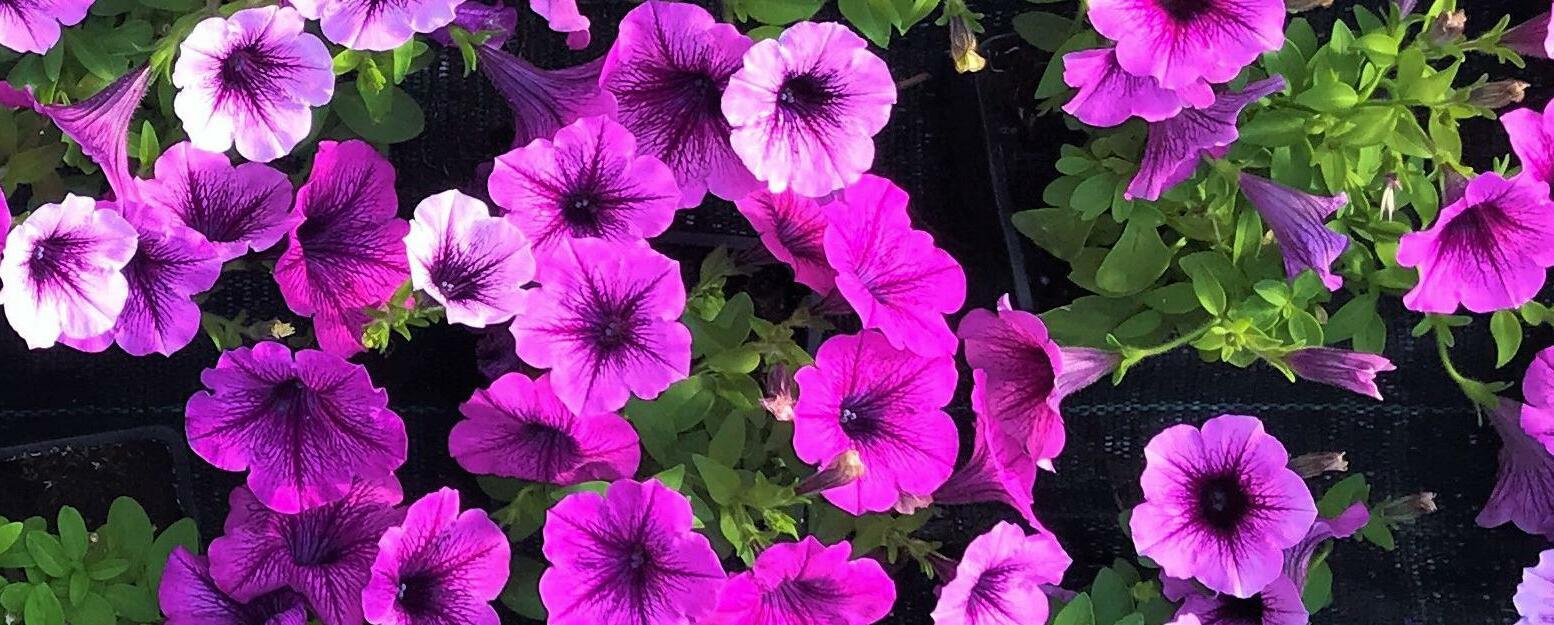
54 58 46 61 62 64
48
Cockroaches invading your home? Gardening in different climates Home grown avocados
Summer
GARDENING ESSENTIALS
From scorching temperatures to tropical storms, summer can bring a myriad of gardening challenges. But we've got you covered with our top summer gardening tips.

Be water wise
If it's dry at your place and you need to make the most of any water, or you have to manage too much water during periods of heavy rain, wetting agents can help.
Applying Yates® Waterwise® Soil Wetter over garden beds and lawns helps break down the waxy and water repellent layer that can develop on the soil surface. During dry conditions this helps to maximise any watering or irrigation and help get moisture down to the root zone where it's needed.
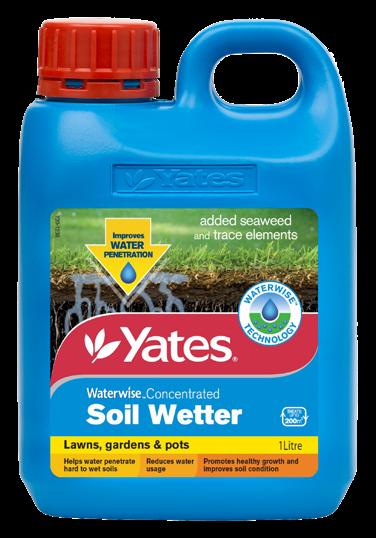
When there's lots of rain, applying Yates Waterwise Soil Wetter can also assist, as it helps get as much water as possible off the surface and down into the deeper layers of soil.


Potted plant tip
Don't forget to apply wetting agents over potted plants as well, which dry out much faster than in-ground plants.
GROWING WITH YOU - YATES 6
Miniscule mites
They may be tiny, but mites - such as red spider and two spotted mites - can cause big problems during summer. They particularly love warm and dry weather, sucking sap from plants and causing leaves to mottle and plant health to suffer. Large colonies can also form spidery webbing between leaves. Control mites with regular sprays of Yates Nature's Way® Vegie & Herb Spray, ensuring you spray underneath the leaves as well, where mites often hide.
School holiday kids gardening
Not sure what to do with the kids during the long summer holidays? Help them start their very own garden! Grow some tasty (and healthy!) kid-friendly vegies like cherry tomatoes, cucumbers and beans, or run a friendly family competition on who can grow the tallest sunflower or the biggest watermelon. More green time, less screen time! Click here for more kid-friendly gardening ideas

Summer soil health


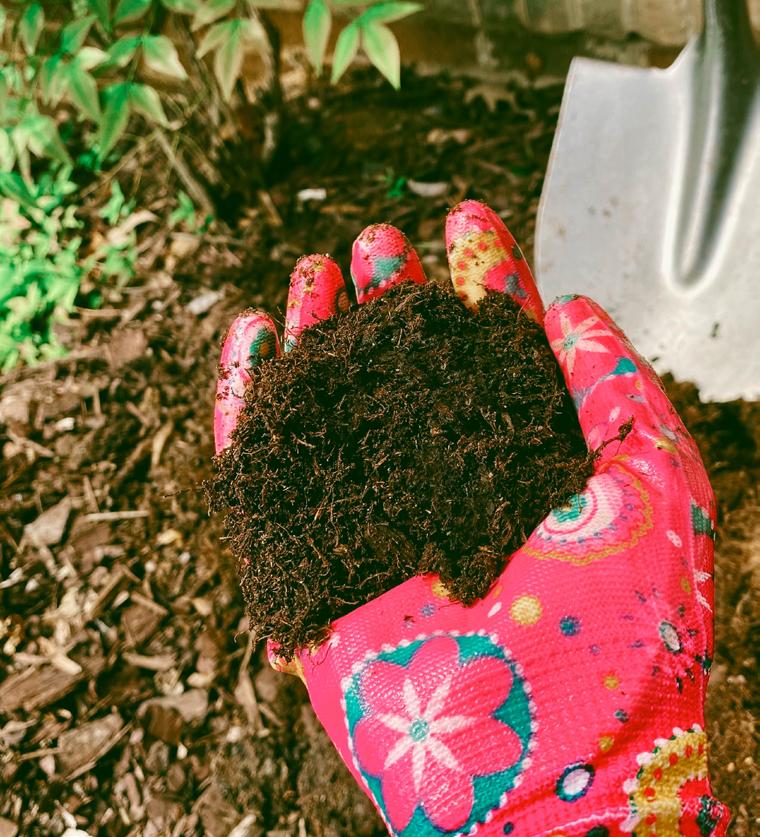
Soil quality in our yards has a huge impact on the success of our gardens. During summer's harsh conditions, improve and nurture your soil by mixing organic-rich Yates Dynamic Lifter® Soil Improver & Plant Fertiliser pellets into the soil whenever you're planting new plants, and sprinkle pellets around the root zone of established plants to promote ongoing soil health and vitality.

Wasp watch
Summer is wasp season. Aggressive European wasps, which have a painful and inflammatory sting, are dangerous and can make outdoor living a misery. Yates Home Pest Blitzem! Wasp Killer & Nest Destroyer kills wasps on contact and destroys their nests. For more information on wasps, visit the Yates garden problem solver.


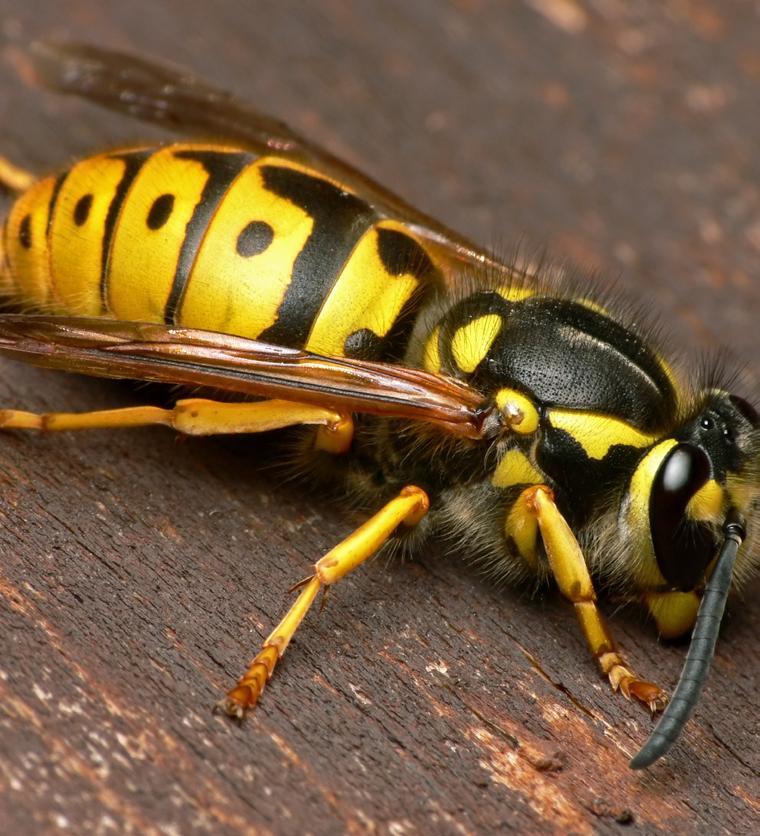
Christmas gift ideas for gardeners!

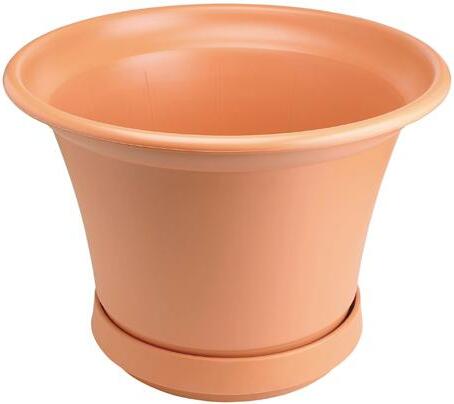
If you're looking for a special gift for the gardener or gardener-to-be in your life, we've got you covered! Here are our top gift ideas to make choosing Christmas presents easy.

Good gardening reading
» For perfumed flower lovers, the next installment in the Yates® Top 50 book series is out! Yates Top 50 Fragrant Plants and How NOT to Kill Them contains how-to-grow information on 50 of the most beautifully scented plants, from roses and lavender, to daphne, frangipani and sweet peas. Filled with stunning and inspirational photos, this gorgeous book will help gardeners everywhere fill their outdoor spaces with fragrant flowers. Available at book and department stores and through online booksellers. RRP $35.

» The latest edition of the Yates Garden Guide contains a wealth of gardening information. There's chapters on planning gardens, choosing feature plants and growing trees & shrubs, creating productive vegie gardens, solving the most common garden problems, guides on what to sow and grow throughout the year, organic gardening and how to grow a lush green lawn. It's a comprehensive gardening guide for beginner and experienced gardeners alike. Available at book, department and hardware stores and online booksellers. RRP $45.

For citrus lovers
» Whether your recipient has a backyard or room on a sunny balcony or veranda, they can grow their very own citrus tree.
» A perfect citrus gift combination is a citrus tree (look for dwarf varieties), a Yates Tuscan® pot, a bag of Yates Premium Potting Mix with Dynamic Lifter® and a bottle of citrus food like Yates Thrive® Citrus & Fruit Liquid Plant Food. All tied up with a big festive bow of course!
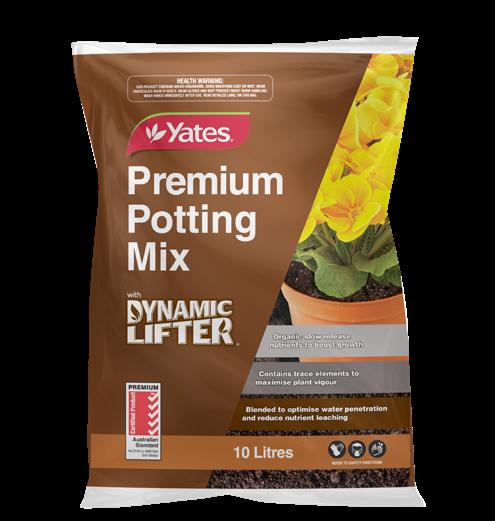
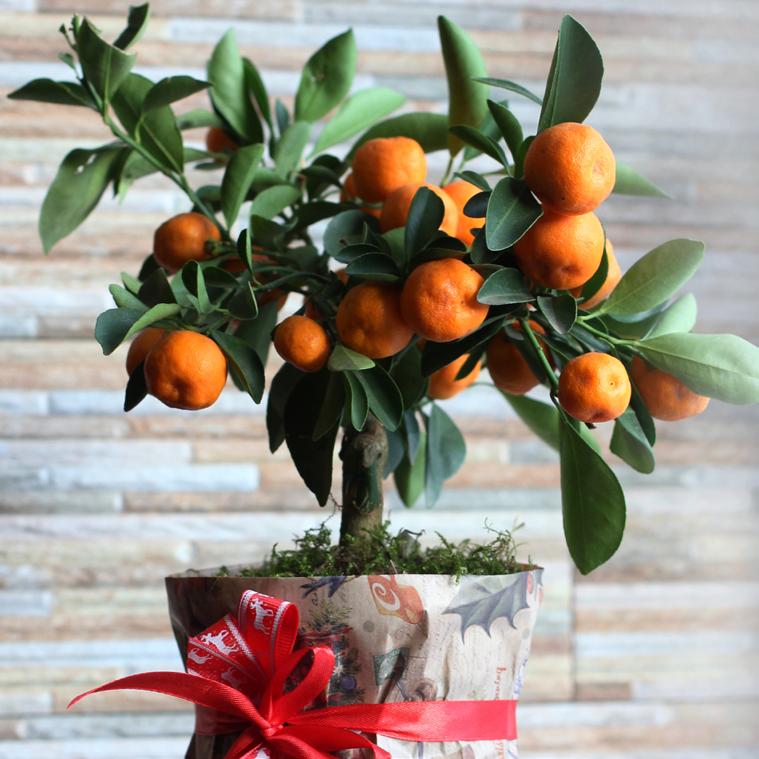
GROWING WITH YOU - YATES 8
Indoor plant enthusiasts
» Indoor plants continue to be a hot item and whether the person on your gift list is an indoor plant devotee or just starting out, there's a plant for them!
» For people who already have a plant collection, look for rarer and interesting varieties (plant tags will often say 'Collector's plant'). For beginners, choose hard-tokill plants like mother-in-law's tongue, cast iron plant, syngonium, ZZ plant and devil's ivy.
» Create a perfect leafy-themed gift hamper of a plant, a decorative pot, some Yates Specialty Potting Mix Plants & Ferns and a pack of Yates Thrive Plant Food Spikes Plants & Ferns to keep the new plant well fed and lush.



» And for extra special care information, include a copy of Yates Top 50 Indoor Plants and How NOT to Kill Them!


Pot perfect
» A beautiful gift that you can create yourself is a combination of a variety of herbs or colourful flowers planted together in a pot or trough.

» Two to three weeks before Christmas, visit your local garden centre and purchase a few small pots of herbs or pretty 'potted colour', which are semi-mature flowering plants almost or already flowering. Plant them together in a 30 cm diameter pot or 30 cm long trough using Yates Premium Potting Mix with Dynamic Lifter.

» Keep the potting mix moist and the week before Christmas feed your potted gift with some Yates Thrive Rose & Flower or Vegie & Herb Liquid Plant Food. On Christmas Day add a ribbon and a heartfelt card, telling them that you grew this special gift for them.
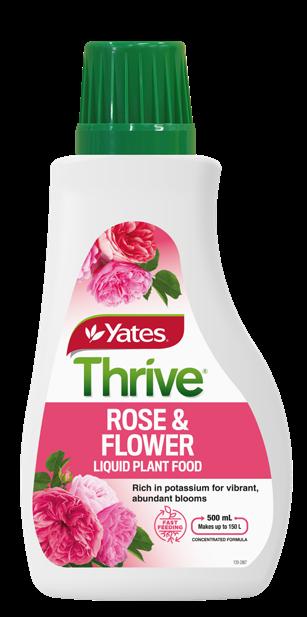
Extra gift ideas
In the lead up to Christmas, garden centres will be filled with colourful potted plants that make beautiful last-minute gifts.
Vibrant red poinsettias are super festive, as are pastel pink, apricot and white varieties. Or what about a potted Australian native NSW Christmas bush or a hydrangea in full stunning bloom.
GROWING WITH YOU - YATES 9
Roses are red.... or pink, yellow, white!
Being captivated by beautiful blooms or inhaling sweet perfume are just some of the delights of roses in summer. We're here to help you get the absolute best out of your summer roses and extend the flower show well into autumn.


GROWING WITH YOU - YATES 11
Feed your flowers
It takes a lot of energy to produce flowers, so it's important to feed your roses with plenty of nutrients throughout summer. Yates® Thrive® Rose & Flower Liquid Plant Food is ideal for feeding roses during the warmest months, as the nutrients work quickly to promote healthy leaf growth, as well as lots of gorgeous blooms. It's easy to dilute in a watering can and you can feed and water your roses at the same time.
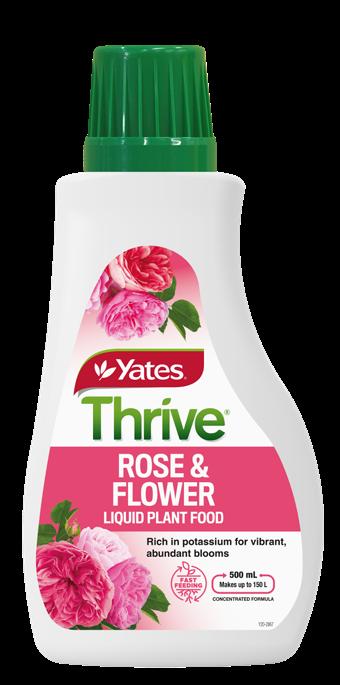
Secateur workout
During the first half of summer, keep your rose bushes looking tidy by removing any spent flowers (called 'dead heading'). Also cut back any shoots growing from below the graft.

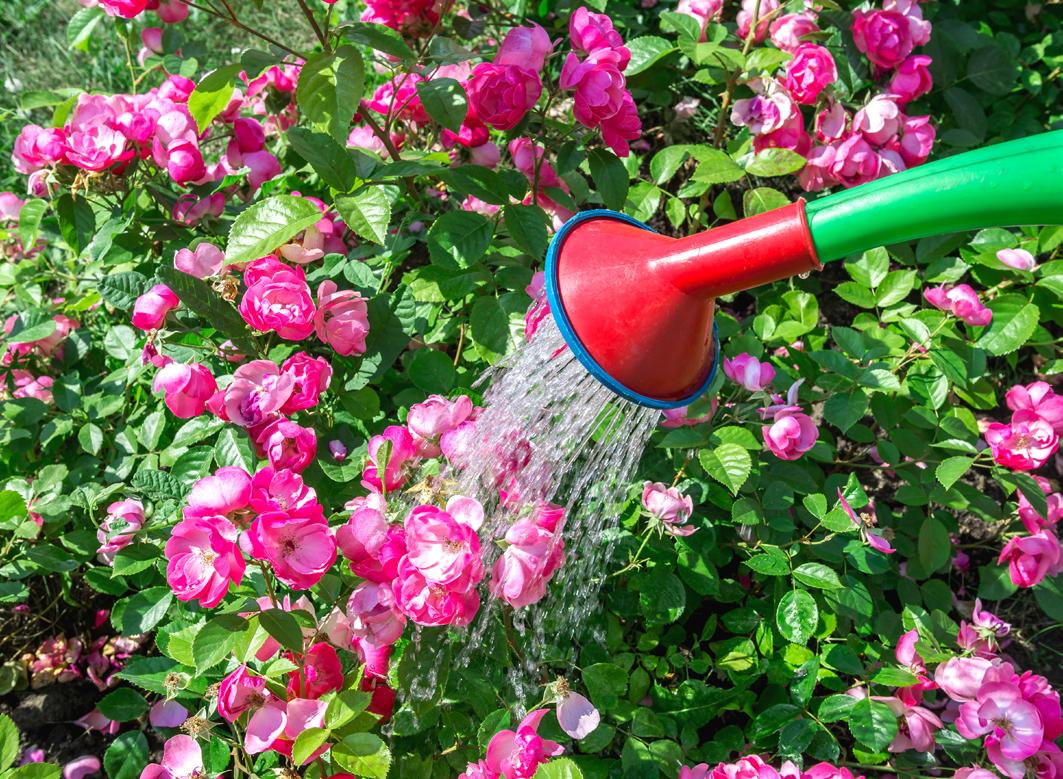
Then in the second half of summer, using a sharp pair of secateurs cut back the entire bush by 30%. This will promote a lovely new flush of fresh growth and flowers in autumn, helping extend the beautiful floral show.
Soil & root care

It's important to care for the soil underneath and around your roses, as well as the plant's root system.
After you've pruned your roses, mix some Yates Dynamic Lifter® pellets into the soil and then apply a layer of bark chips or straw around the root zone. The rich organic matter in Yates Dynamic Lifter will nurture and improve the soil and the mulch will help retain soil moisture and keep the roots cooler.


Pest & disease protection

Pests like aphids, caterpillars and mites, and diseases such as powdery mildew and black spot, can damage rose leaves, stems and flowers. At the first sign of any pests or diseases, start spraying the plant thoroughly, including the undersides of the leaves, with Yates Rose Gun® every two weeks. Ready to use Yates Rose Gun will control some of the most common pests and diseases on your roses, helping to keep them healthy and flourishing.


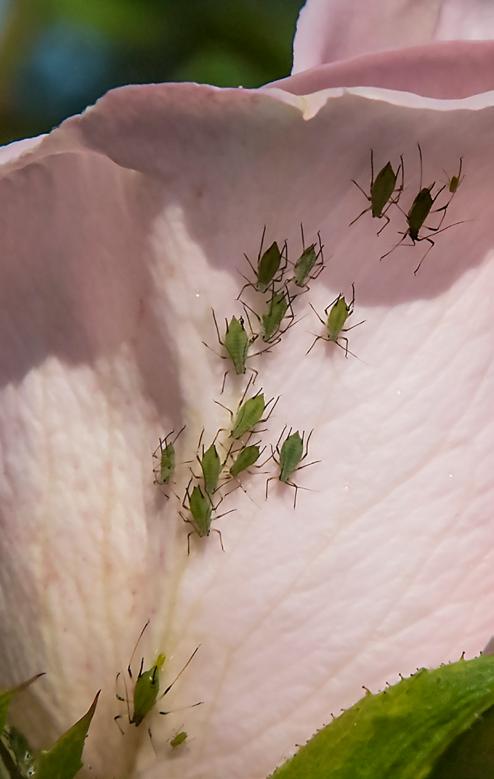
Pamper your pots
If you have potted roses, they may need to graduate to a slightly larger pot size after their spring growth flush.
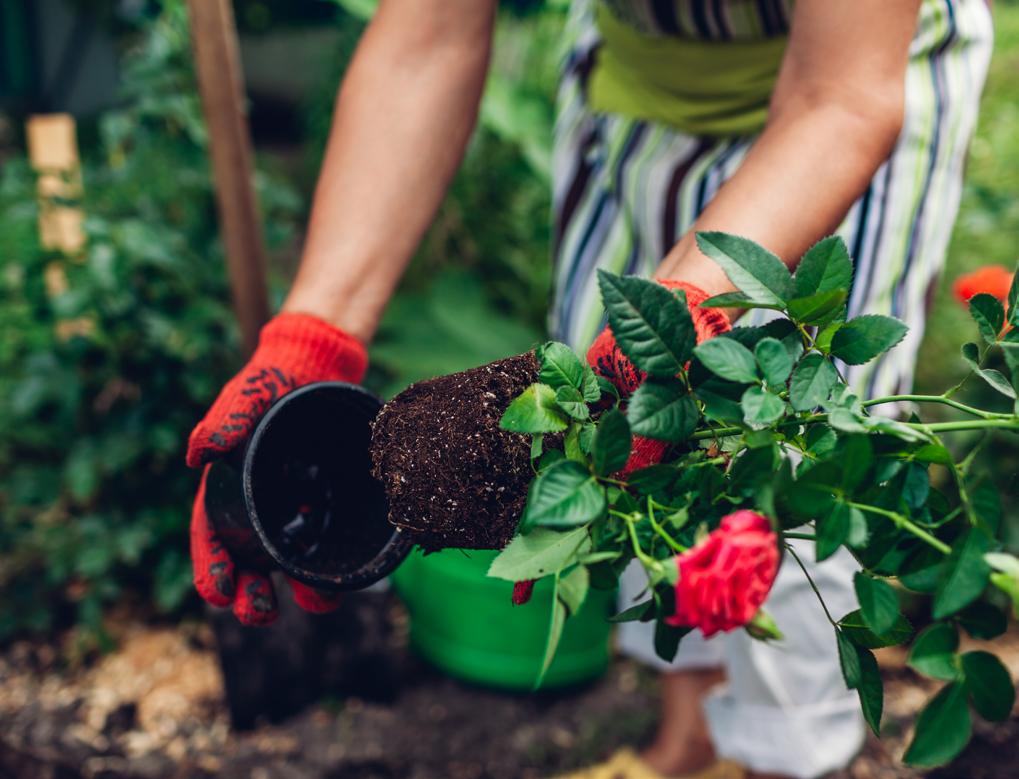
Gently remove the rose from its current pot, place into the new pot, backfill around the roots with Yates Premium Potting Mix with Dynamic Lifter and water in well. The extra room to grow and the premium potting mix will help encourage fresh new growth and flowers.

Home grown bouquets
Filling a vase with home-grown roses is pure delight. Pick flowering stems during the cool of the early morning, when the buds are about one third open, and immediately put the stems in a bucket of cool water. Re-cut the stems at a 45 degree angle before arranging in a vase.

And don't forget to make use of your summer prunings too! Any stems with flowers, even short stems, can create a pretty bouquet.

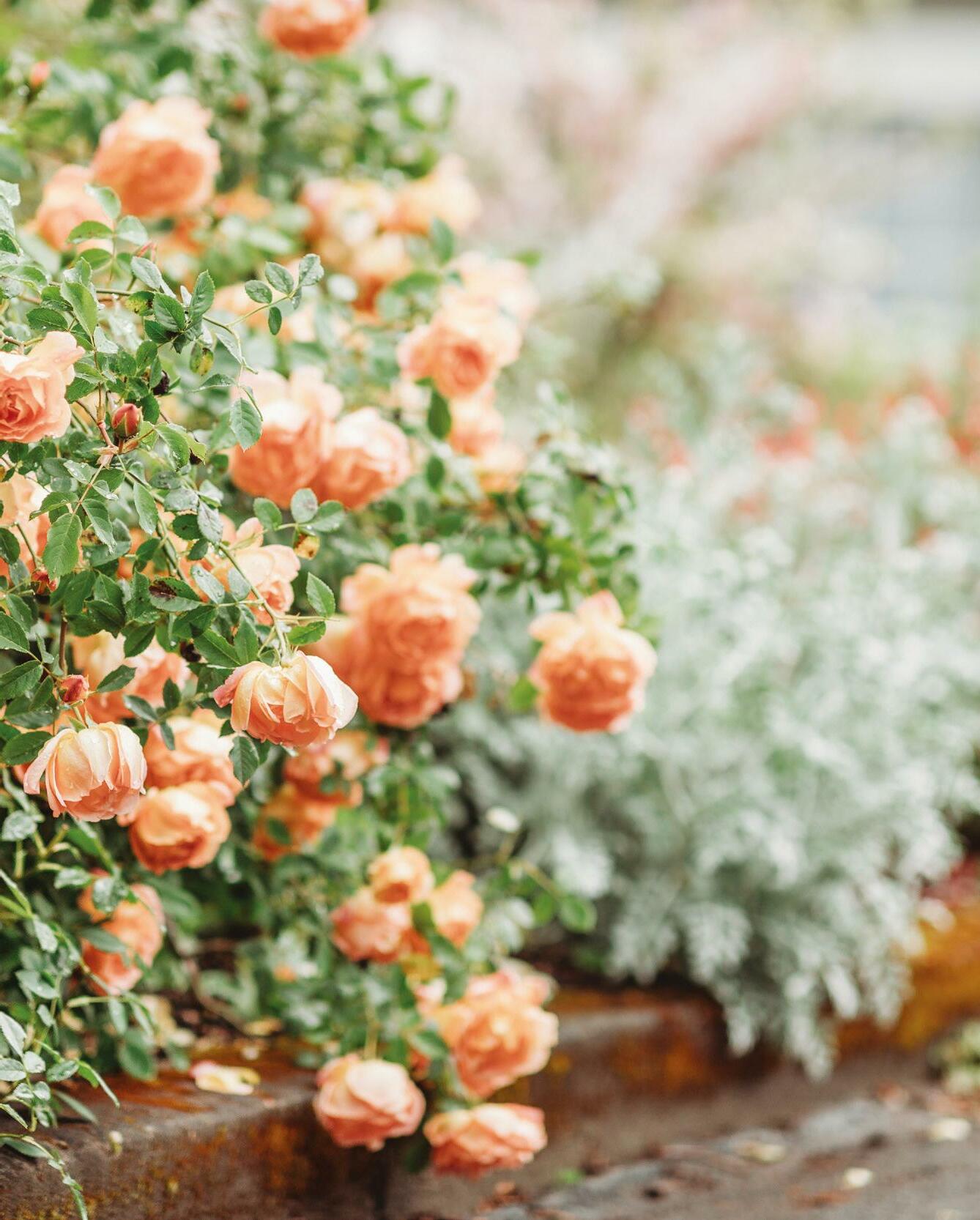

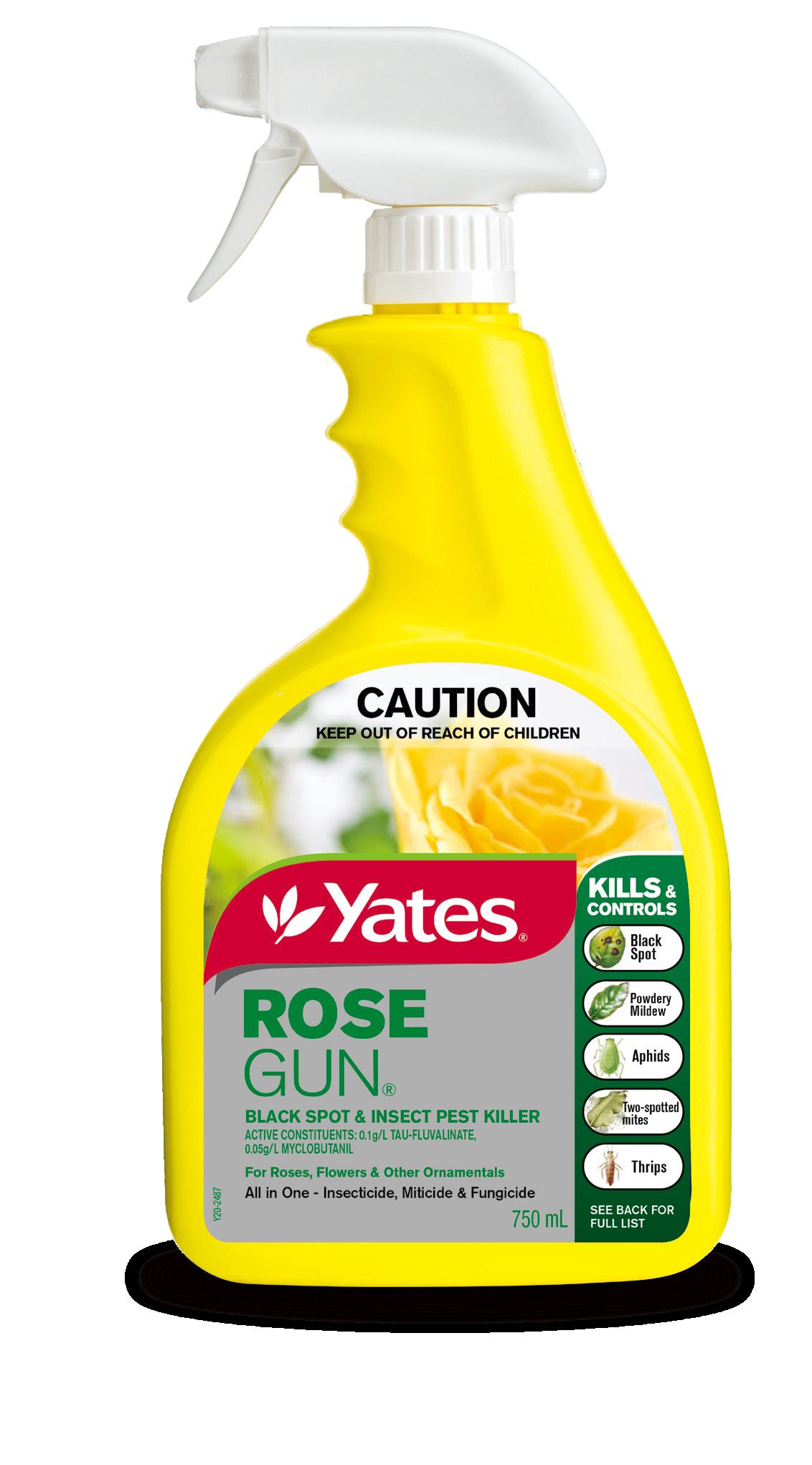




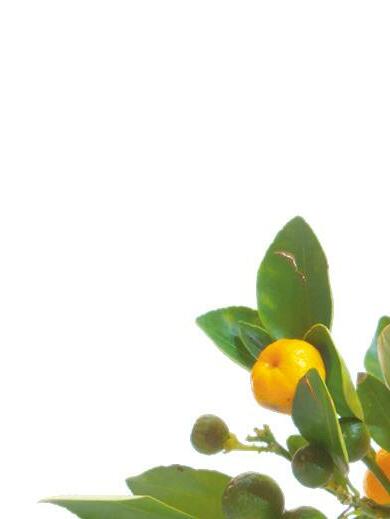
• • Diseases including powdery mildew, black spot and rust Keep your plants looking great this summer with Yates ® Perfect for roses and Yates® Rose Gun® is a convenient all-in-one spray to protect plants against: Also available in

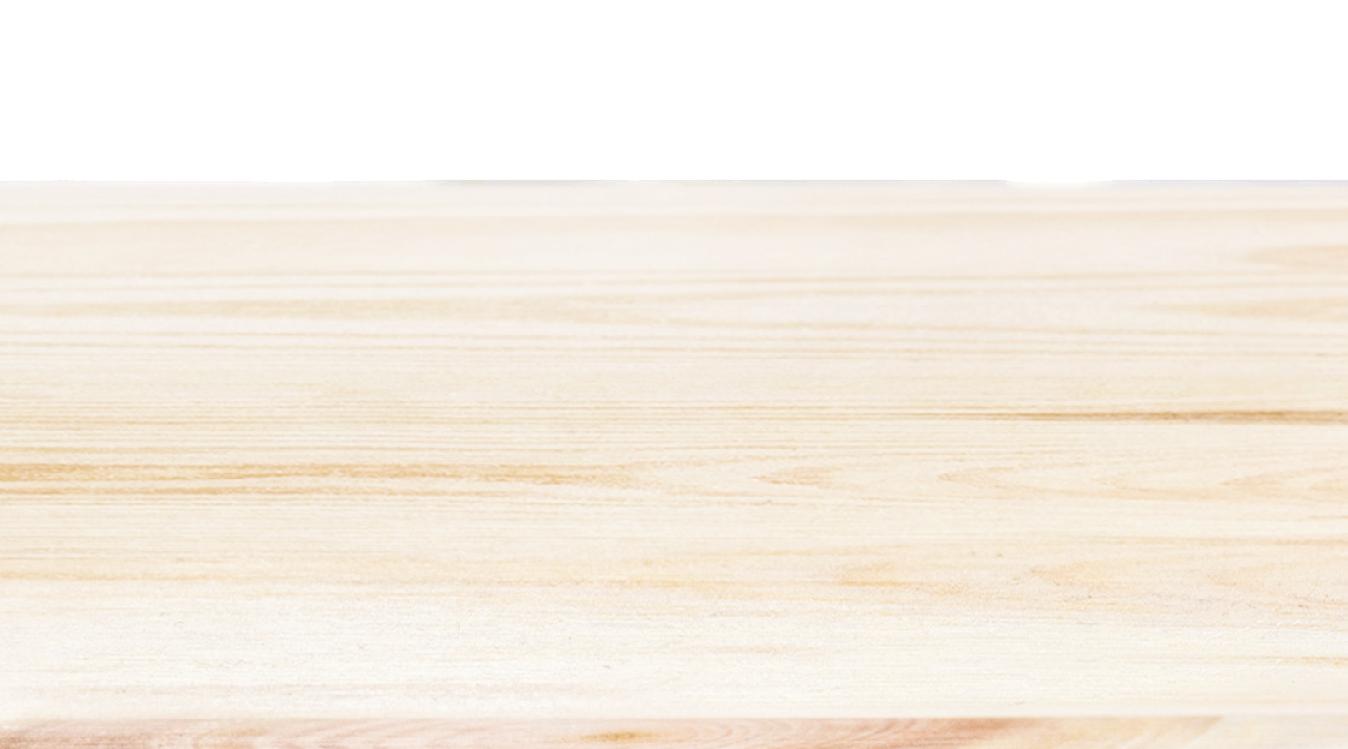

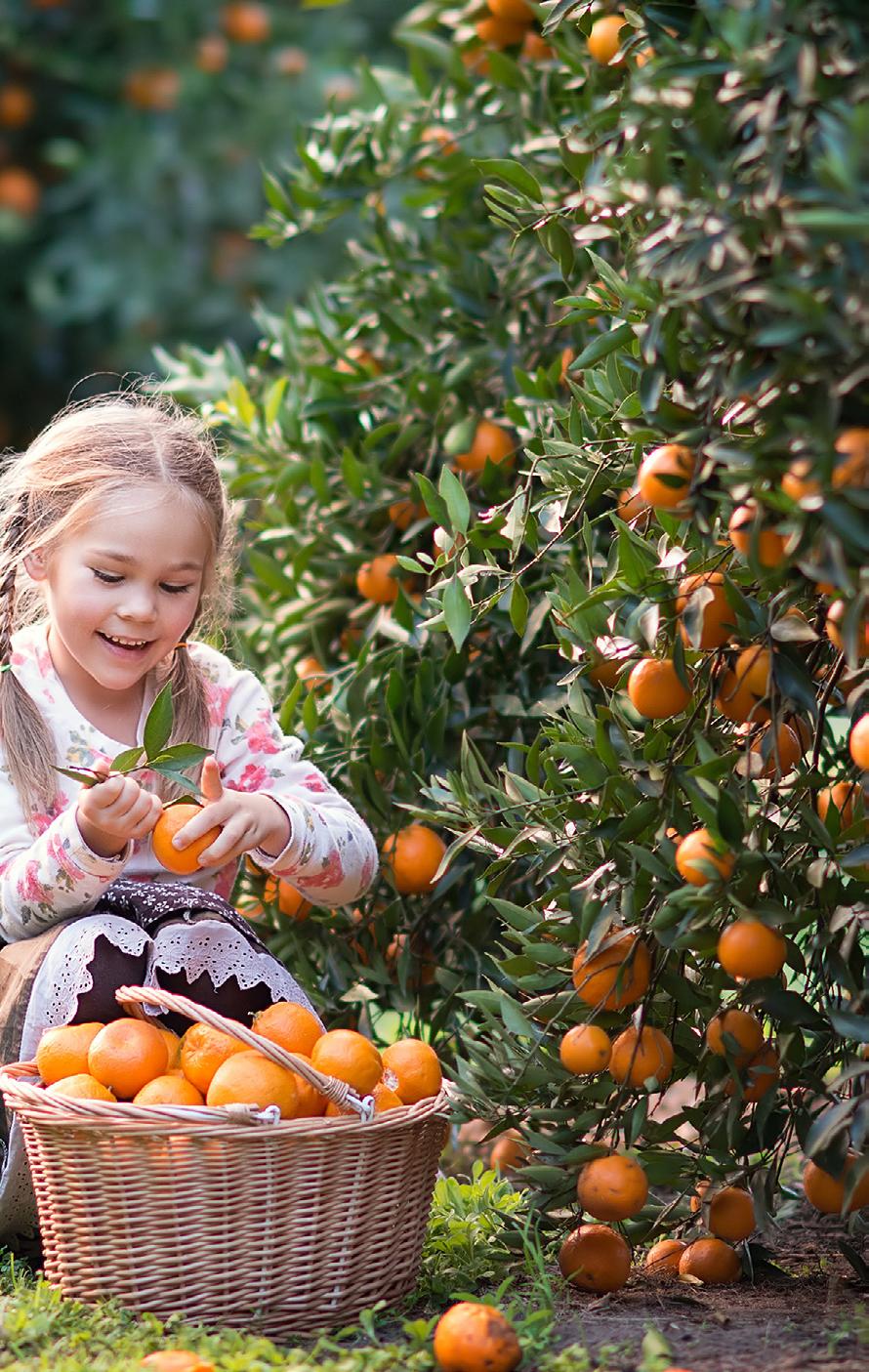
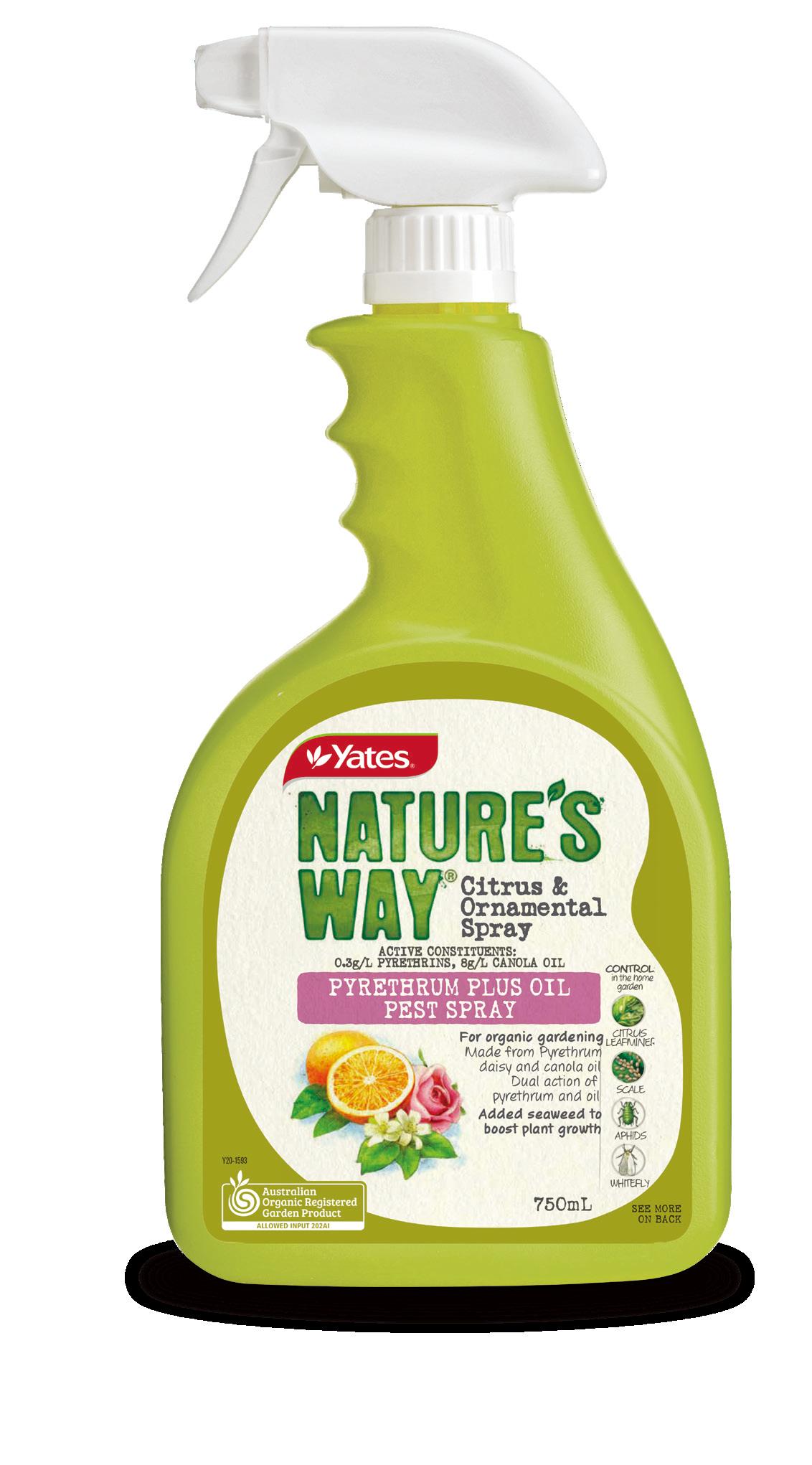

GROWING WITH YOU - YATES 15 • Sap sucking pests like bronze orange bug, scale, thrips, mites and more • Chewing pests like caterpillars and earwigs Plus with added seaweed to boost plant growth and approved for use in organic gardens.
Pty Ltd Perfect for fruit trees, vegies and other plants Yates® Nature’s Way® Citrus & Ornamental Spray uses the dual action of two plant extracts (pyrethrum and oil) to protect against:
Yates, Rose Gun and Nature’s Way are registered trade marks of DuluxGroup (Australia)
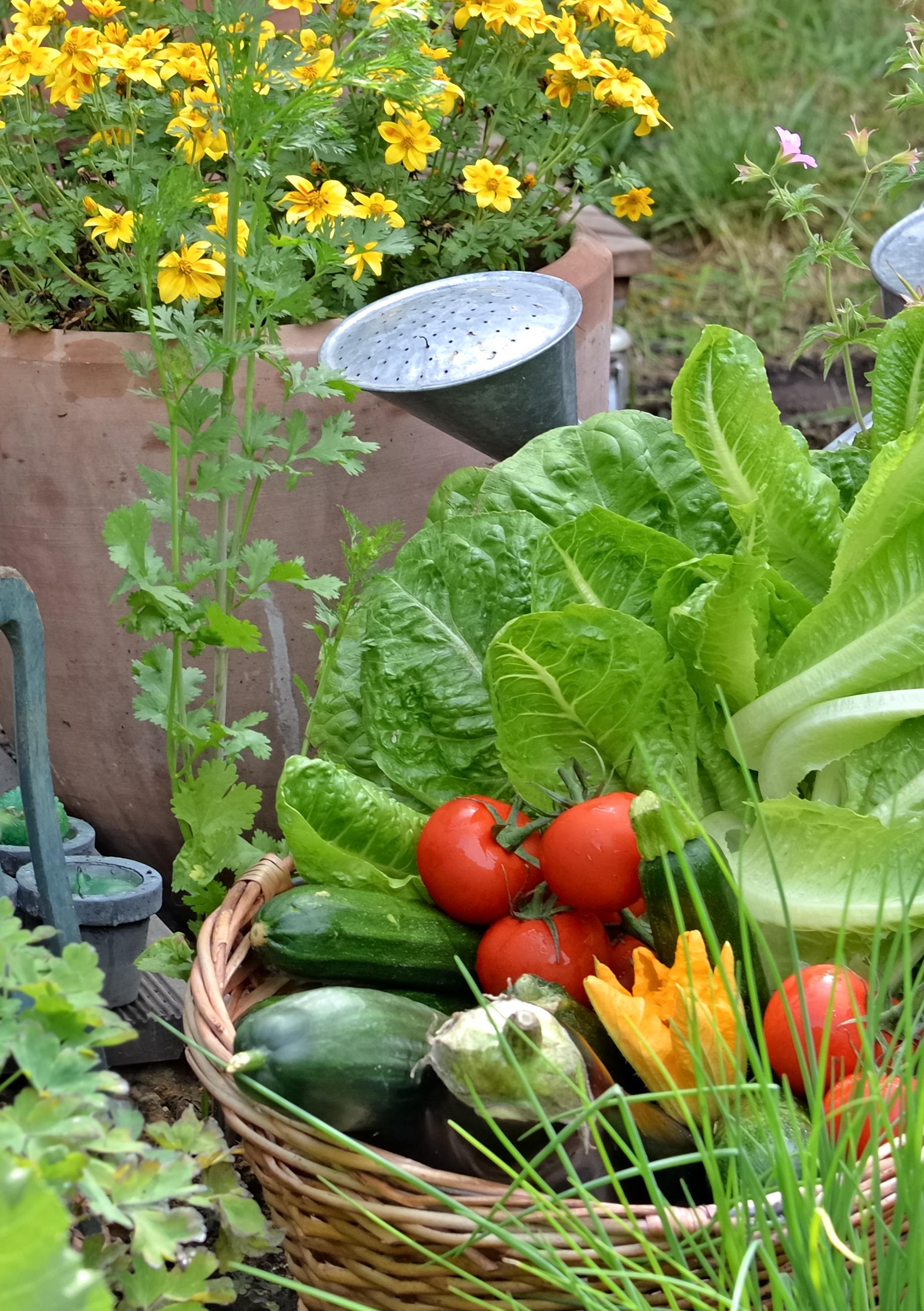
Help feed your family with fresh and delicious home-grown vegies & herbs during summer for your summer vegie patch
tips
Top
Home grown?
It's easier than you think!
Good for you, good for the planet
Why grow some of your own food? When you have home grown ingredients on hand, you're more likely to have a healthier diet. This works particularly well with kids, as when they're involved with growing fresh food, they're more likely to eat it. And growing it yourself means there is no packaging and no food miles. Win win! Plus, harvesting your own food is just so satisfying.
Starting vegies and herbs from seed is an economical way to grow the number of plants that you need. And by sowing more seed every few weeks, you can help keep your pantry deliciously stocked.
Here are some ideas for easy and fast growing vegies and herbs that you can sow during summer:

» Yates® Lettuce Baby Combo - a gourmet blend of colourful and quick growing baby leaf lettuces. Pick individual leaves as you need them!

» Yates Radish Confetti Mix - plump globes of crisp flesh with vibrant red, purple or white skin.
» Yates Baby Beets - tender and sweet beetroots that are ready from just six weeks after sowing.
» Yates Dwarf Beans Hawkesbury Wonder - lots of flavoursome pods on compact plants.
» Yates Rocket Large Leaf - provides an abundant harvest of lush peppery leaves for salads.

»
Yates
Microgreens Cabbage Rubies - ready to snip in two to three weeks, these fresh and tasty microgreens can even be grown on a windowsill!
» Yates Spinach Summer Supremeideal for cool and temperate regions, this variety produces large and tender salad-perfect leaves.
» Yates Sweet Basil - you can be enjoying lots of lush and fragrant leaves from just six weeks after sowing.
» Yates Zucchini Blackjackthis super popular and productive vegie will keep your savoury and sweet culinary skills busy for months.

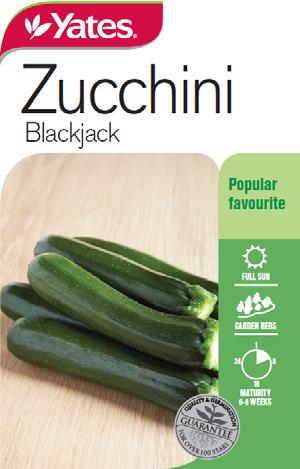
GROWING WITH YOU - YATES 17
How to sow & plant
» Soil improvement before sowing seeds or planting seedlings is an important part of creating a healthy and thriving summer vegie patch.
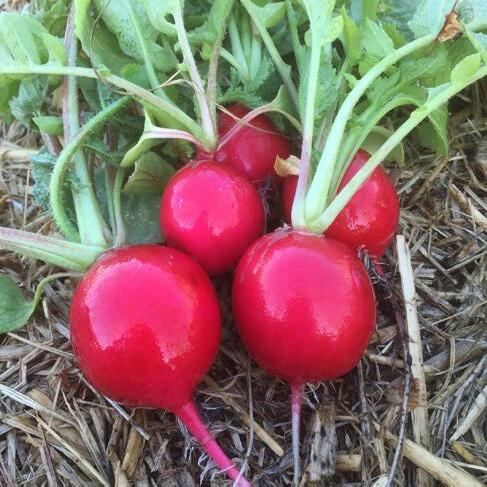
» It's as easy as mixing a rich source of organic matter, such as Yates® Dynamic Lifter®, into the soil. The concentrated pellets help improve soil structure and soil water holding capacity, as well as providing food for earthworms and beneficial soil microorganisms.

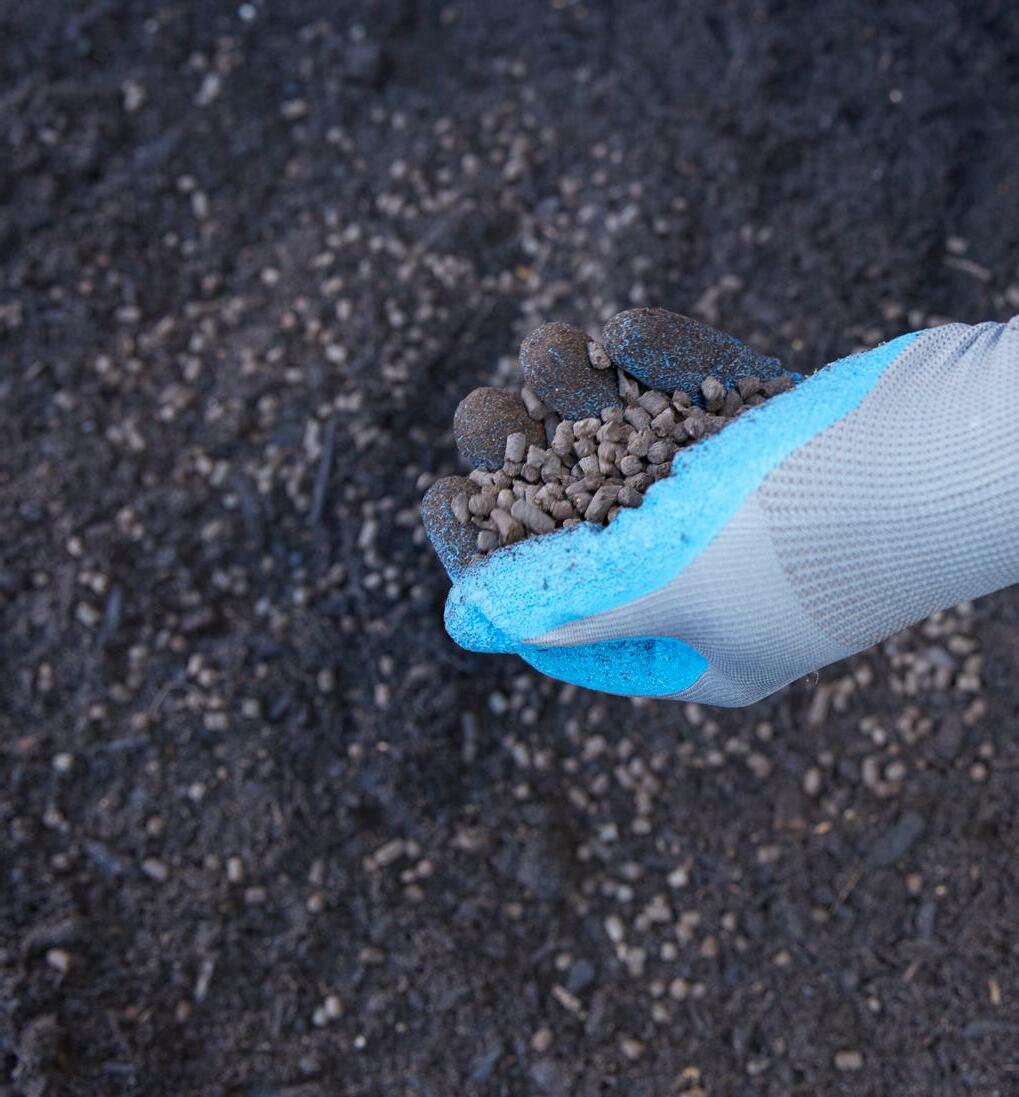
» Then sow your chosen seeds (at the depth and spacing indicated on the seed pack) or plant seedlings into your Yates Dynamic Lifter enriched soil.

Watering

» Keep the soil consistently moist while your vegies establish and grow. This is particularly important in areas with hot and dry summers. Lack of water will restrict growth and can lead to leafy vegies and herbs prematurely bolting to seed and fruiting vegies like zucchinis and tomatoes can develop a condition called blossom end rot.
What about growing vegies in pots?
» There are lots of compact vegies and herbs which are ideal for growing in pots. So even if you don't have a backyard, you can still grow plenty of your own fresh food.

» Pot-perfect vegies & herbs for summer growing include loose-leaf lettuce, baby beetroot, radish, compact silverbeet, dwarf beans, parsley, rocket, spring onions and basil.
» Fill a 30 - 40 cm diameter Yates Tuscan® pot with Yates Premium Potting Mix with Dynamic Lifter, sow seeds directly into the mix and keep moist while seeds germinate and seedlings establish.
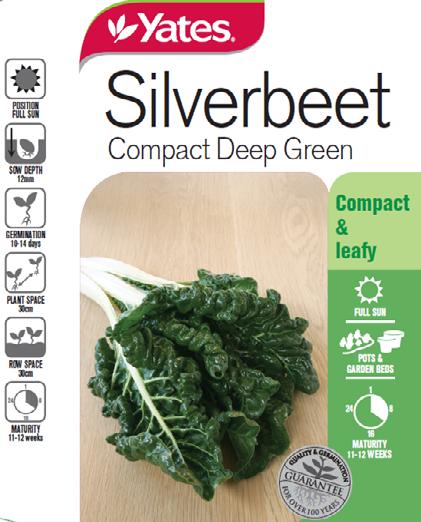
Your vegies need feeding!
Well-fed vegies and herbs will keep you and your family well-fed too. Using liquid fertilisers during summer is ideal, as you can water and feed at the same time.
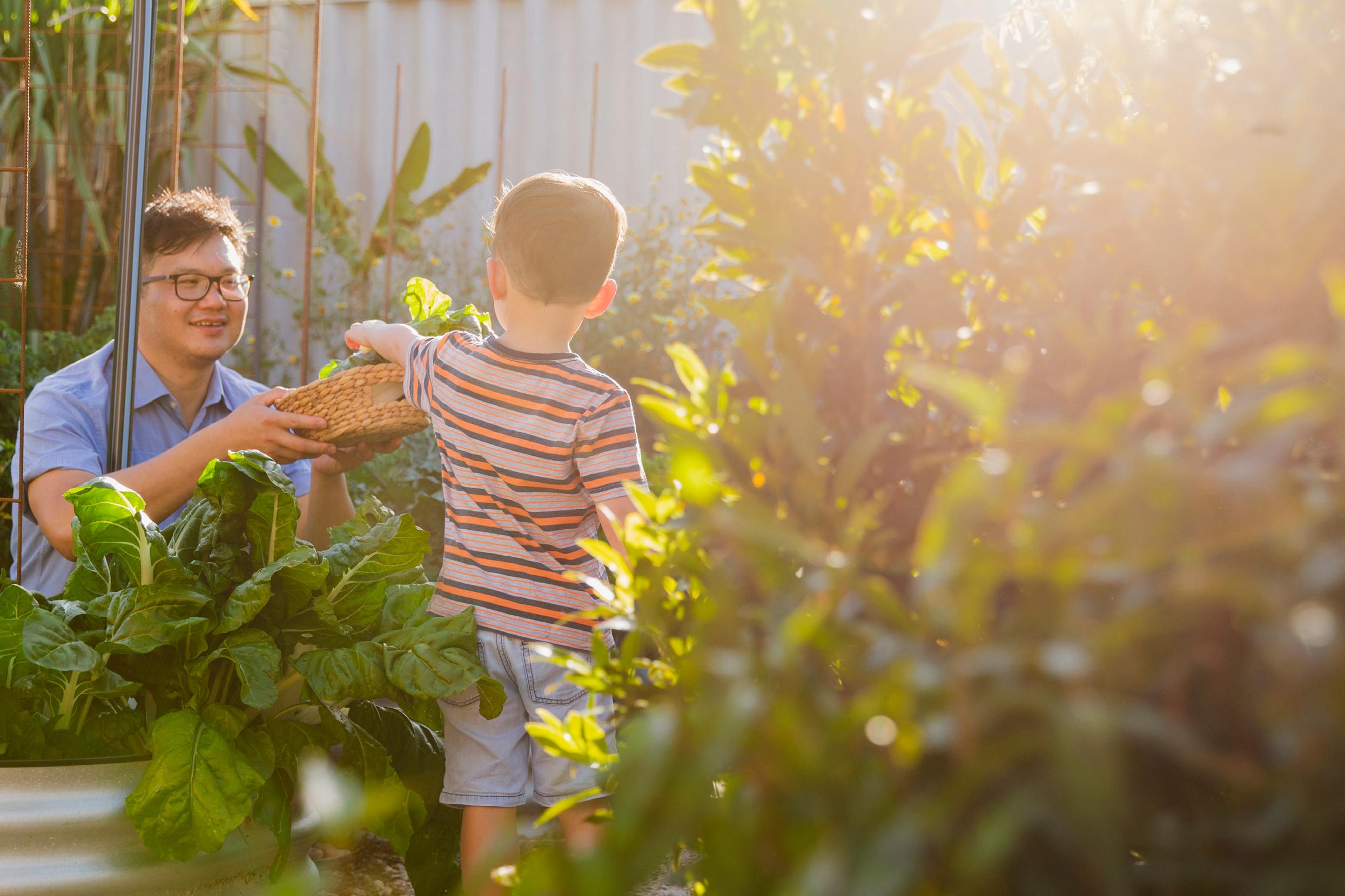
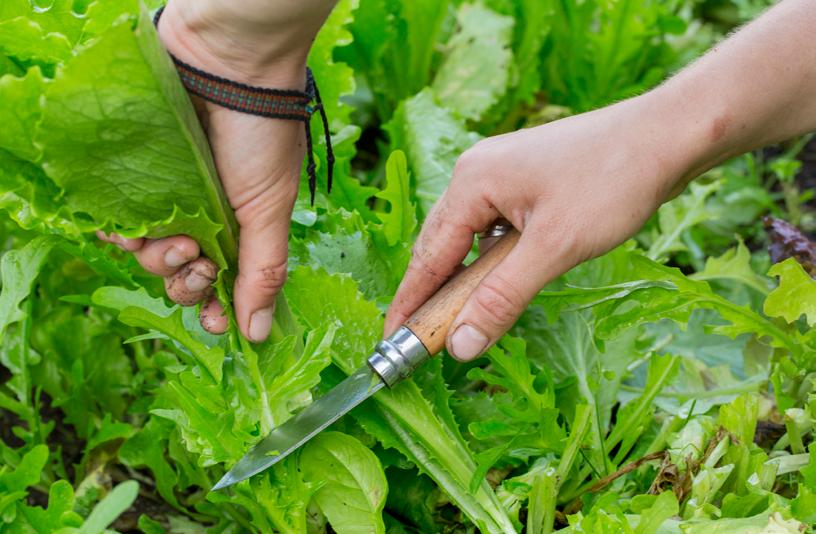
Yates Thrive® Natural Vegie & Herb Liquid Plant Food is a rich blend of more than 50% natural ingredients, including fish, sea weed and humates, boosted with fast acting nutrients. To promote lots of healthy growth, each week dilute 1/2 - 2 capfuls of Yates Thrive Natural Vegie & Herb in a nine litre watering can and apply over and around the plants.
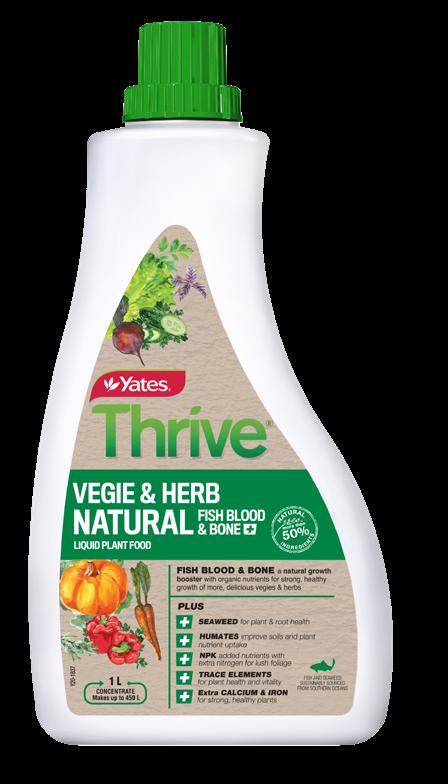
Keeping pests under control
» Watch for insect pests like aphids, which enjoy feasting on tender new growth, and caterpillars, which devour leaves and stems as well as fruiting vegies like tomatoes. Yates Nature's Way® Vegie & Herb Spray is an insecticidal soap that is effective at controlling small sap sucking insects like aphids, as well as thrips and whitefly. And Yates Nature's Way Caterpillar Killer (Dipel) is based on a naturally occurring soil bacteria and specifically targets caterpillars. Both these products are approved for use in organic gardening.
» And don't forget to protect young seedlings and your leafy greens from snails and slugs with a light sprinkling of Yates Snail & Slug Bait around the plants. Snails and slugs can be particularly prolific during wet summers, so it's important to be proactive and apply these iron-based pellets around all your vulnerable plants.
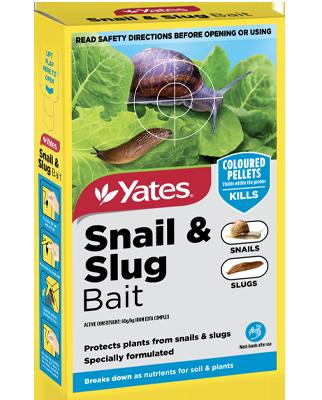
Harvesting tips
In addition to consistent watering and feeding, don't forget to regularly pick your vegies. This encourages additional leafy growth or flowering and fruiting, helping keep your kitchen stocked for longer.
GROWING WITH YOU - YATES 19
Vegies & herbs to sow in summer

During the warmest months, there's a delicious range of vegies & herbs to sow. Let's get growing!
Australia
Wide
Vegies
• Beans (climbing) - Purple King, Stringless Blue Lake
• Beans (dwarf) - Borlotti, Bountiful Butter, Brown Beauty, Gourmet's Delight, Stringless Pioneer, Snapbean Stringless
• Cabbage - Sugarloaf, Red Mini
• Capsicum - Giant Bell
• Carrots - All Seasons, Baby, Manchester Table, Topweight
• Cauliflower - All Year Round Hybrid
• Chinese Cabbage - Wombok
• Cucumber - Apple, Burpless, Gherkin Pickling, Long Green
• Leek - Welsh Wonder
• Lettuce - Baby Combo, Buttercrunch, Cos, Frilly Mix, Great Lakes Iceberg, Mignonette Green
• Okra - Clemson Spineless
• Pumpkin - Butternut, Hybrid Grey Crown, Queensland Blue
• Radish - Confetti Mix, French Breakfast, Gentle Giant, Salad Crunch, White Icicle
• Silverbeet - Compact Deep Green, Fordhook Giant, Perpetual Green, Rainbow Chard

• Spring Onion
• Swede - Champion Purple Top
• Sweet Corn - Earlichief, Honeysweet, Sun'n'Snow
• Turnip - Japanese Hakurei, Purple Top White Globe
• Zucchini - Blackjack, Lebanese, Solar Flare
GROWING WITH YOU - YATES 20
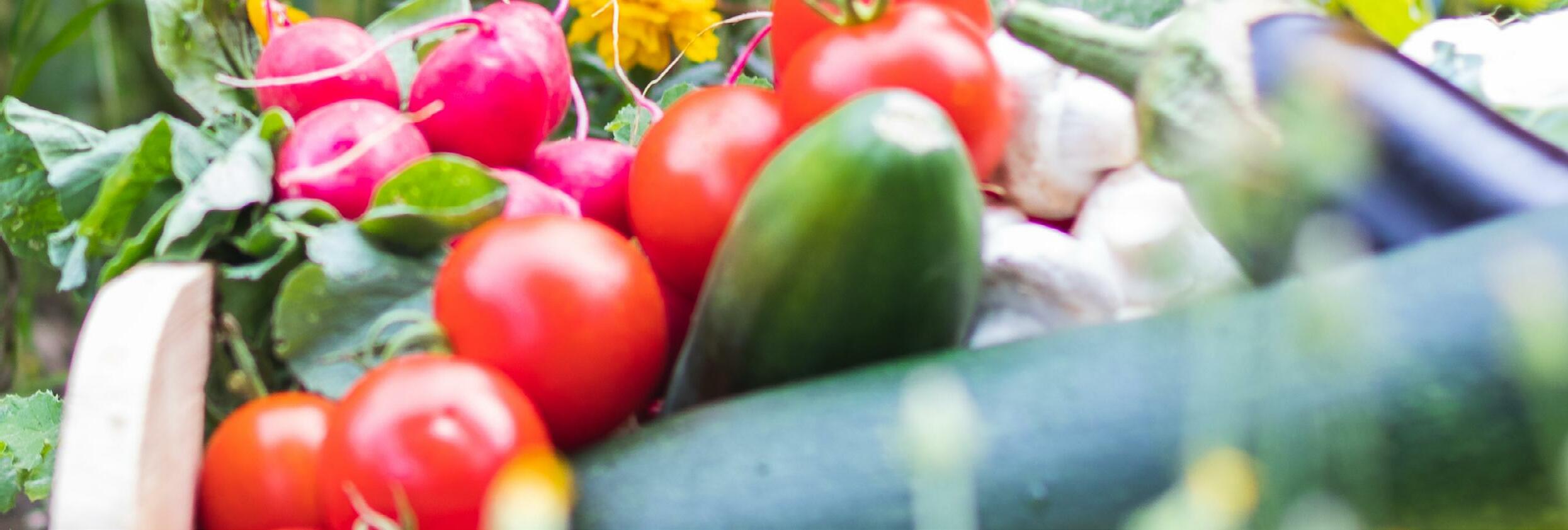
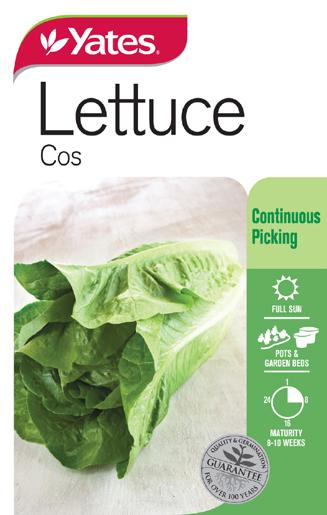
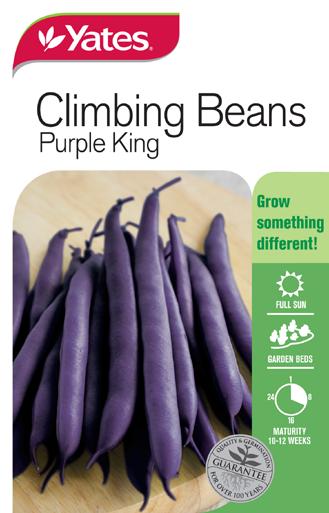
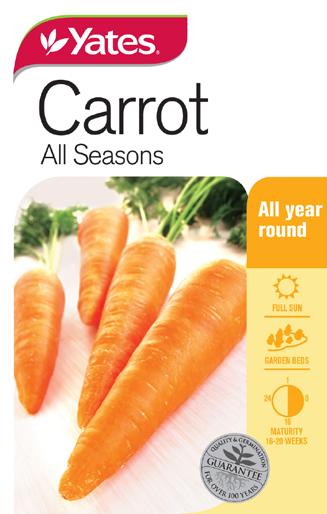



GROWING WITH YOU - YATES 21 Seeds
Fruit • Honeydew Melon • Rockmelon - Hale's Best • Watermelon - Candy Red, Country Sweet, Sugar Baby Herbs • Basil - Gourmet Mix, Purple, Sweet, Thai • Chives • Garlic Chives • Coriander • Cress • Dill • Oregano • Parsley - Italian Plain Leaf, Curled • Rocket - Large Leaf, Wild • Sage • Thyme
by

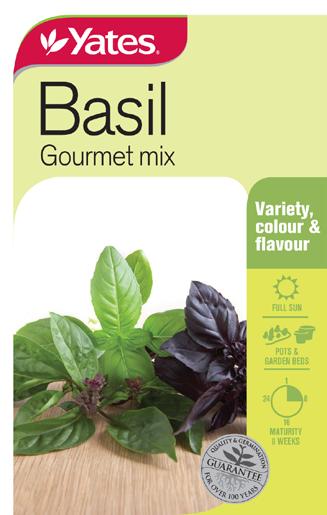
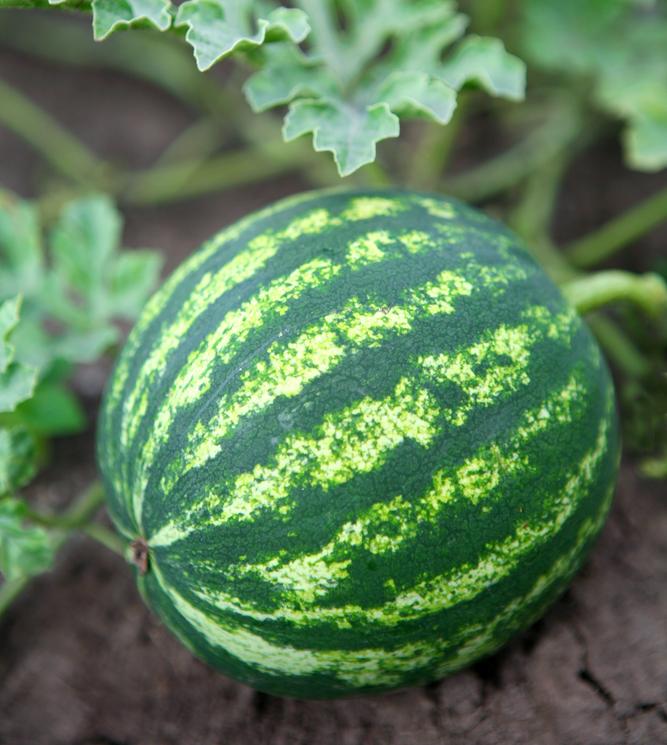
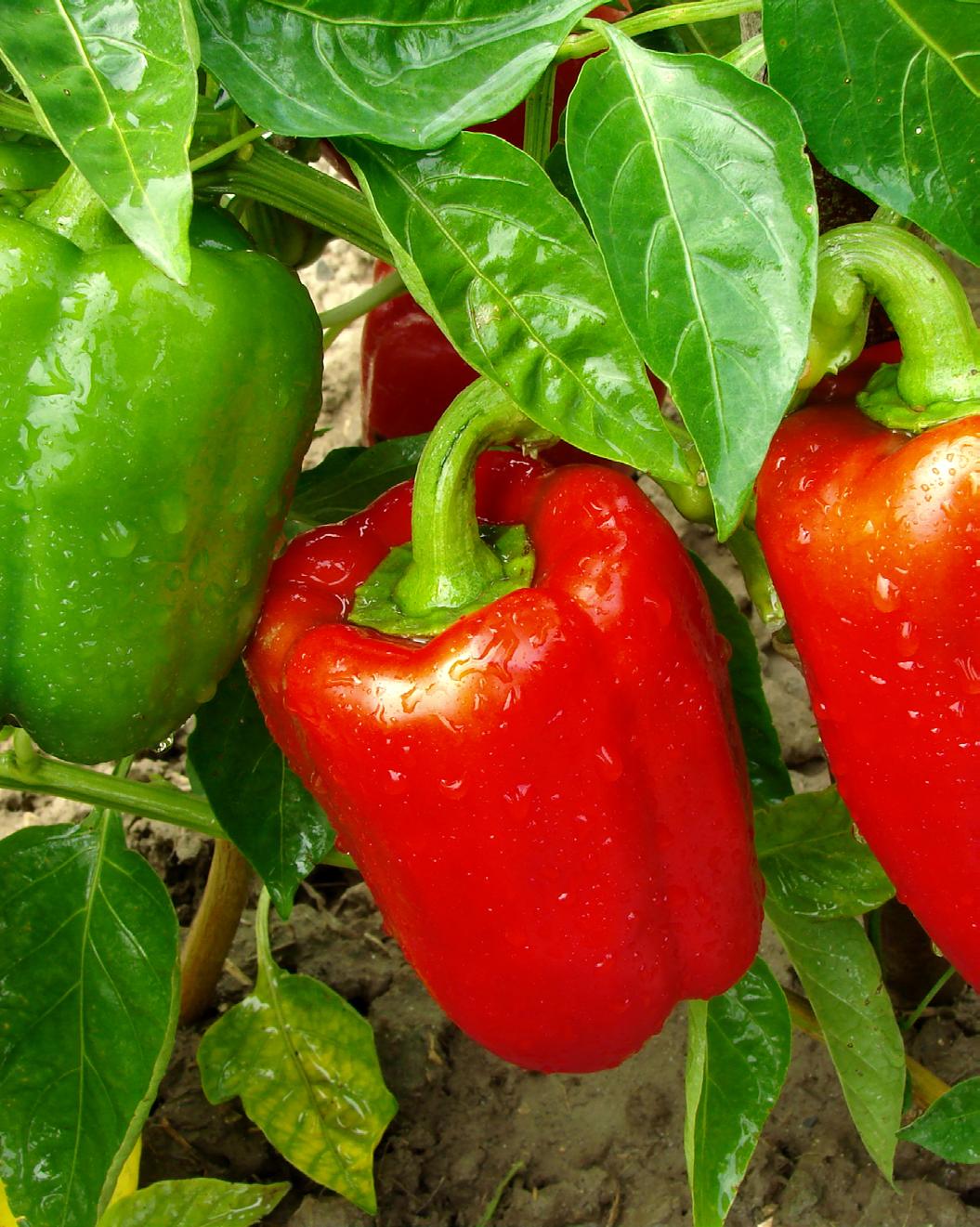
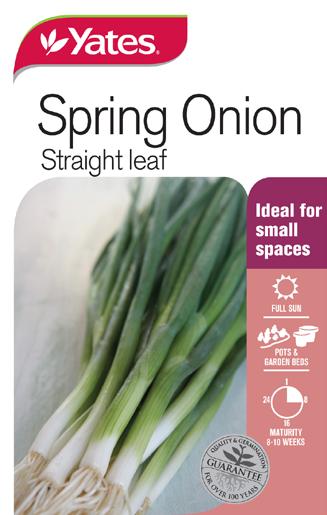


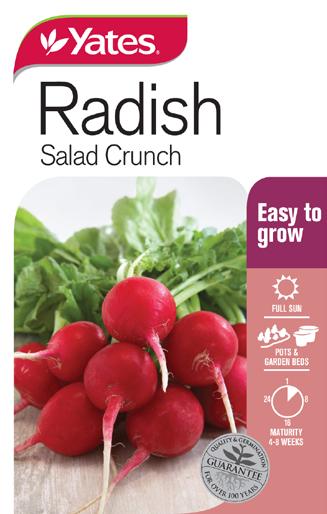
GROWING WITH YOU - YATES 22
Tropical
• Eggplant - Black Nite • Tomato - Big Beef, Grosse Lisse, Patio, Roma, Small Fry, Sweetbite, Tiny Tim, Tommy Toe
Vegies & herbs to sow in summer
/Sub Tropical Climates

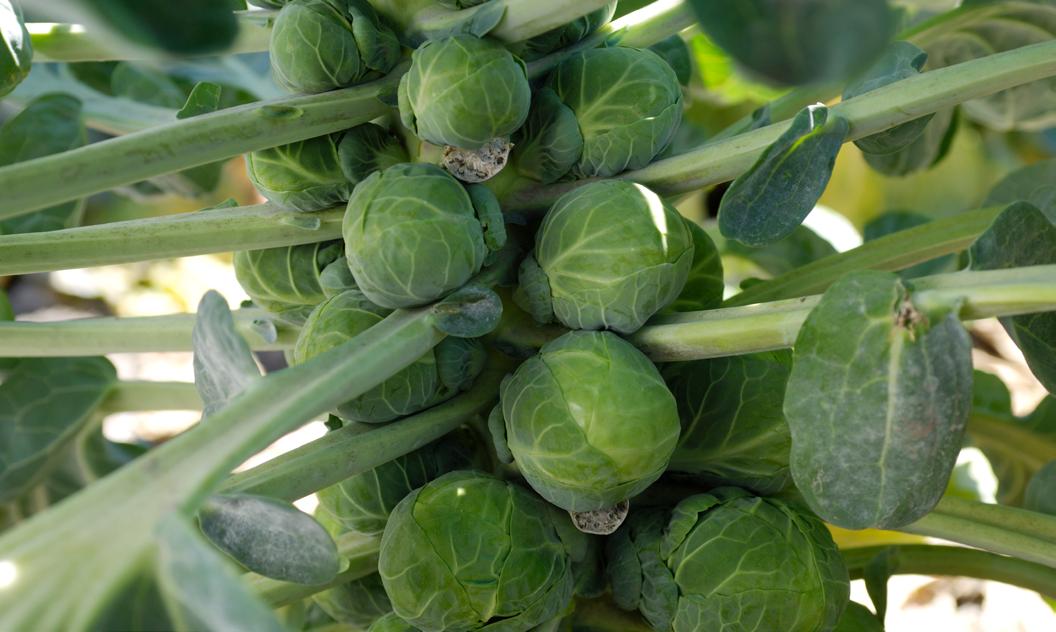

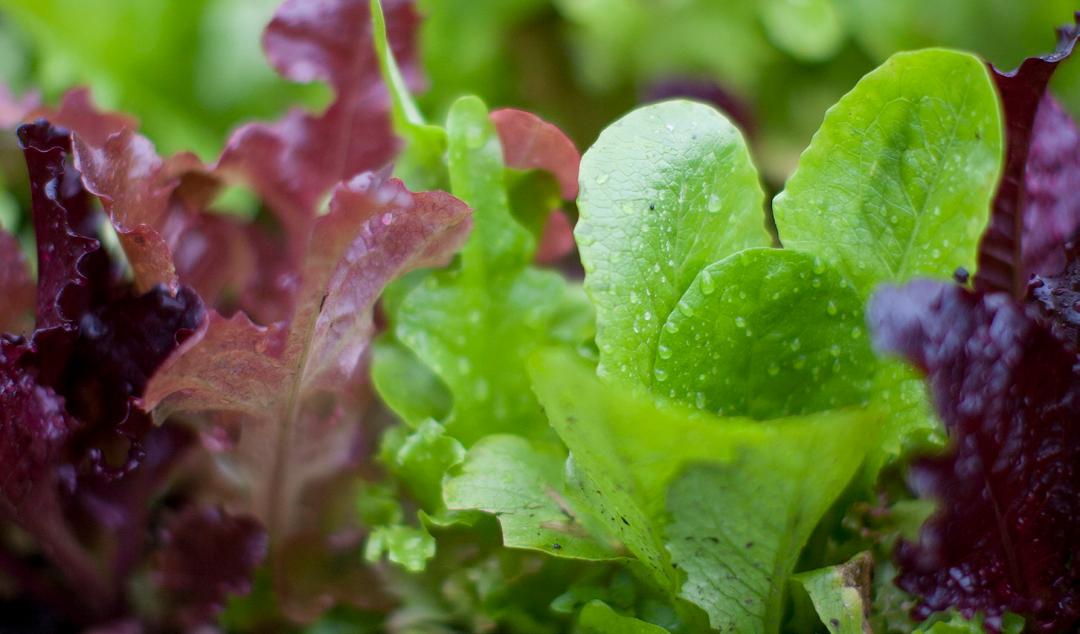
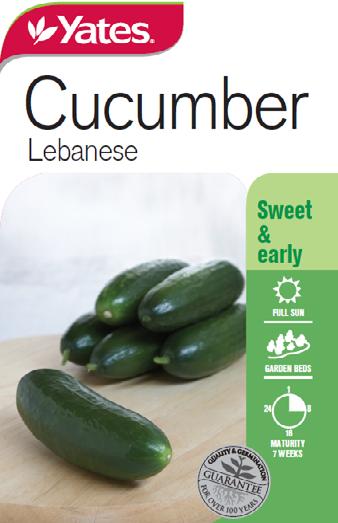


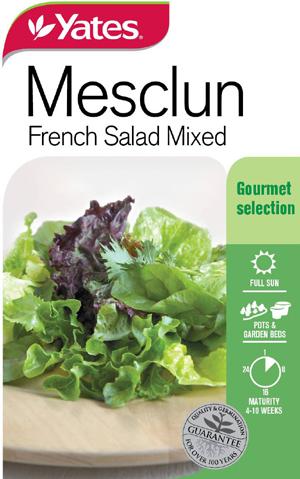
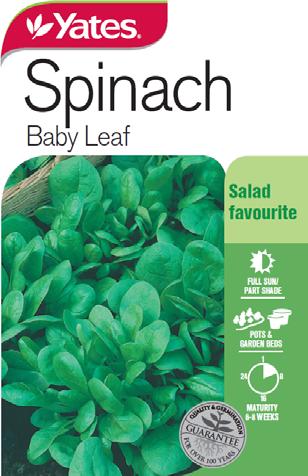


GROWING WITH YOU - YATES 23 Seeds by Temperate Climates • Broccoli - Shogun Winter Harvest, Summer Green • Brussels Sprouts - Drumtight • Cucumber - Lebanese • Eggplant - Black Nite • Kale - Tuscan, Red Russian • Lamb's Lettuce • Lettuce - Salad Mix • Mesclun French Salad Mix • Spinach - Baby Leaf • Tomato - Big Beef, Grosse Lisse, Patio, Small Fry, Sweet Bite, Tiny Tim, Tommy Toe • Broccoli - Shogun Winter Harvest, Summer Green • Brussels Sprouts - Drumtight • Chinese Cabbage - Buk Choy • Cucumber - Lebanese • Kale - Tuscan, Red Russian • Lamb's Lettuce • Lettuce - Salad Mix • Mesclun French Salad Mix • Spinach - Baby Leaf, Summer Supreme Cool Climates
Tomato
TRICKS
How to get a bumper summer harvest
Home grown tomatoes are sweet, tasty and absolutely divine, and achieving the best possible harvest from your home grown tomatoes can be simple when you know some easy tips and tricks.

Whether you're growing tomatoes in a big backyard vegie patch or have a few potted tomatoes on a sunny balcony, they need four key care steps during summer.
» Feeding - making sure your tomatoes have access to the nutrients they need.
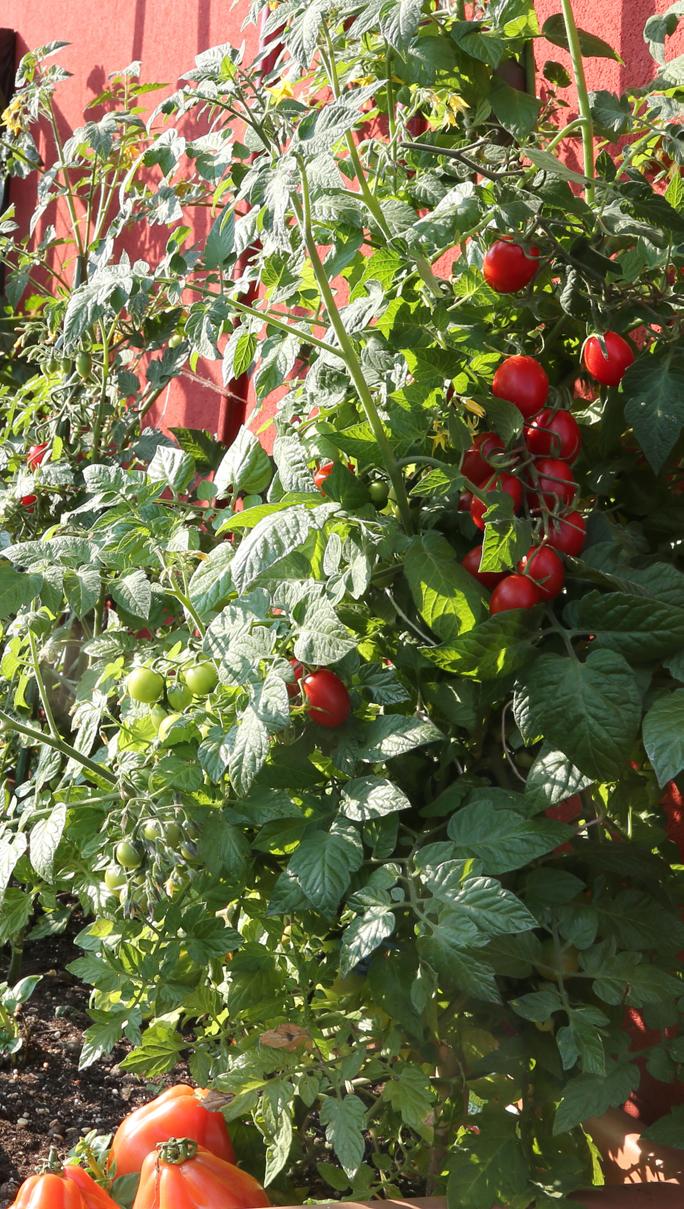

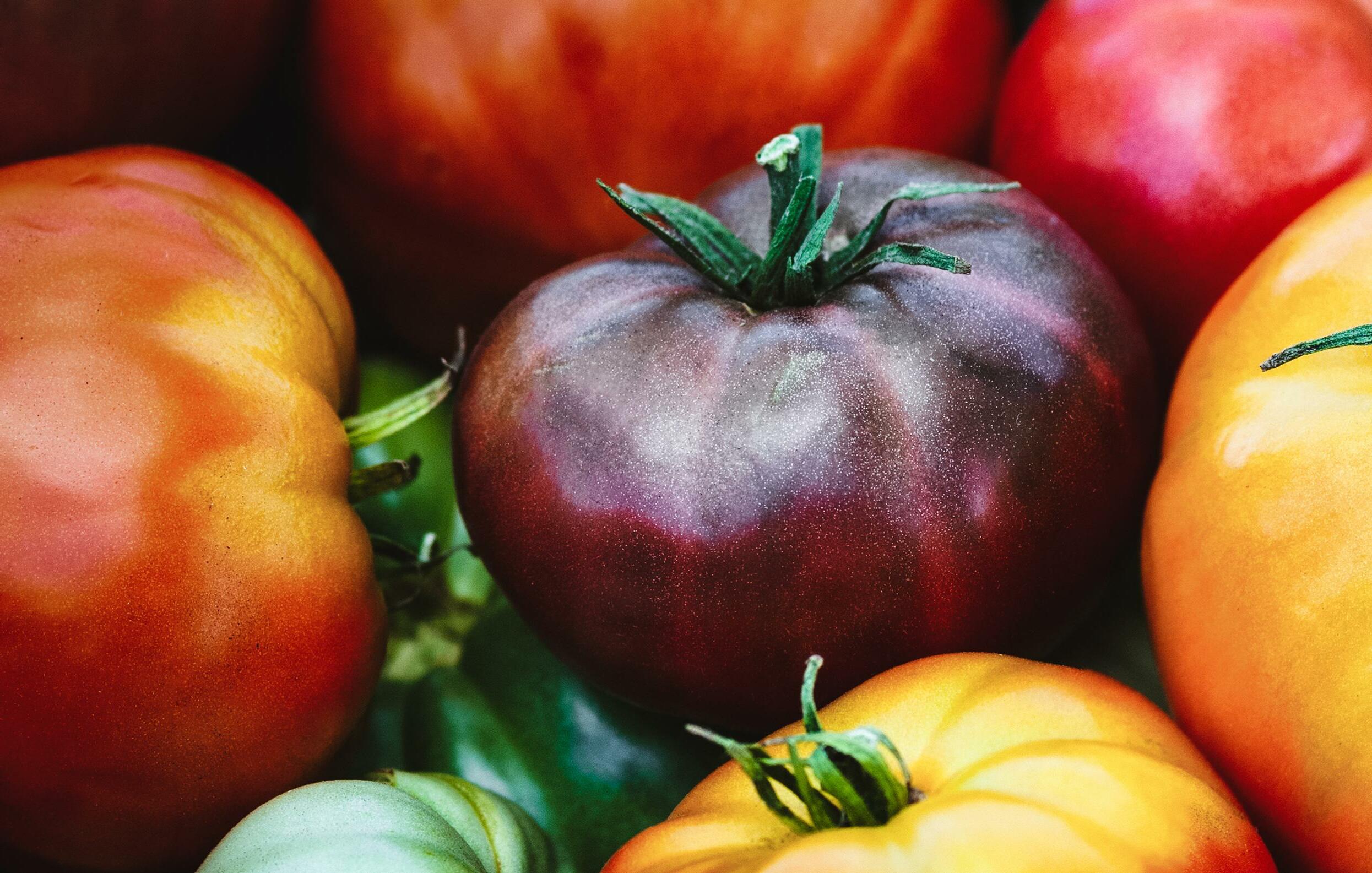
» Watering - ensuring the soil or potting mix is consistently moist.
» Support - tall growing varieties will need some support.
» Pest & disease control - keeping tomatoes protected from common pests and diseases throughout summer.
GROWING WITH YOU - YATES 24
Feeding
To enjoy the maximum number of tasty home grown tomatoes, feeding the plants should be top on your to-do list. With potassium being the nutrient that promotes flowering and fruiting, potassium-rich Yates® Thrive® Flower & Fruit Soluble Fertiliser is ideal for feeding tomatoes. It also contains nitrogen for healthy green leaf and stem growth, phosphorus for a strong root system and trace elements for complete plant health.
Feeding your tomatoes is as easy as adding two spoonfuls of Yates Thrive Flower & Fruit into a nine litre watering can and applying around the tomato plants every one to two weeks.

Haven't planted your tomatoes yet? In temperate regions, there's still time to sow seeds or plant seedlings in early summer. In sub-tropical and tropical areas, you can grow tomatoes year round.



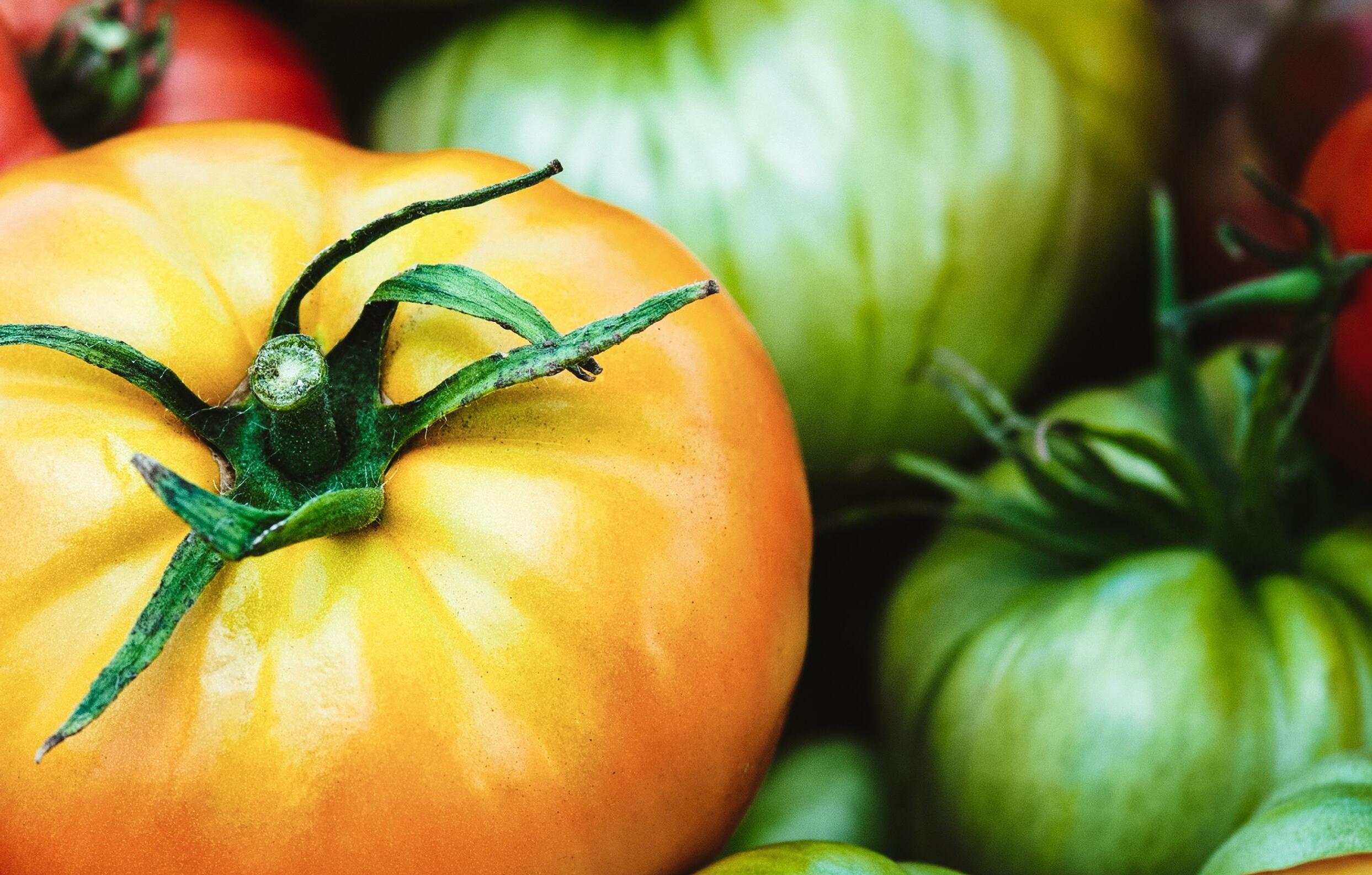
GROWING WITH YOU - YATES 25
Watering
Keeping the soil or potting mix consistently moist when growing tomatoes is important for two key reasons. One, it promotes healthy growth and keeps the plants productive for longer. Second, it helps prevent blossom end rot, a condition that causes the base of tomato fruit to develop a brown, sunken patch. In addition to regular watering, you can assist water to penetrate more effectively down into the root zone, by applying Yates Waterwise® Soil Wetter over soil or potting mix.

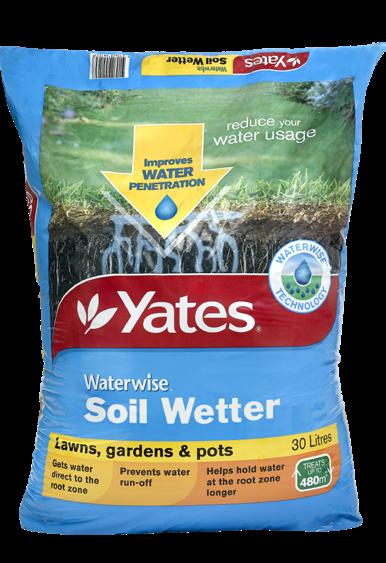
Mulch
Applying mulch, such as sugar cane, lucerne or pea straw, around the base of your vegie patch or potted tomato plants has multiple benefits. Mulch helps to keep the soil or potting mix moist and protected from baking summer sun or heavy rain. And as these mulches break down, they add valuable organic matter to the soil. Mulch also helps to reduce disease spores splashing up from the soil onto the leaves.
Pruning & support
Tall growing varieties of tomatoes will require support from a tomato cage or stakes and soft ties as they grow.

And if you're super keen, small side shoots of tall growing (indeterminate) tomatoes can be pinched off. Removing these small shoots, that grow between the main stem and side branches, can help reduce the incidence of disease and improve yield.
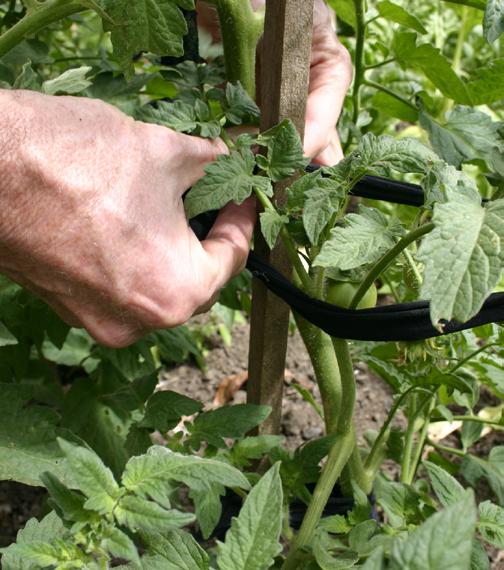


GROWING WITH YOU - YATES 26
Fruit fly

Fruit flies will be out and about, keen to lay eggs on developing tomato fruit, leading to their larvae (maggots) ruining your much anticipated harvest. To help prevent fruit fly, from when the fruit are still small and green, spray Yates Nature's Way® Fruit Fly Control over the leaves and stems each week. This spray attracts and kills adult fruit fly, before they have a chance to lay their eggs.
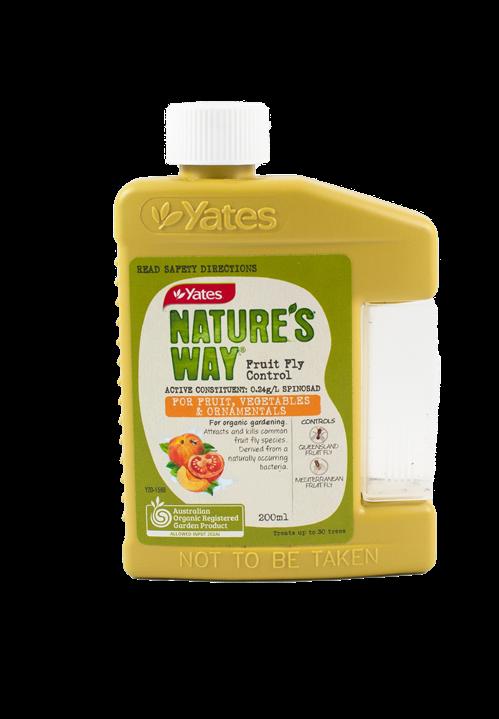
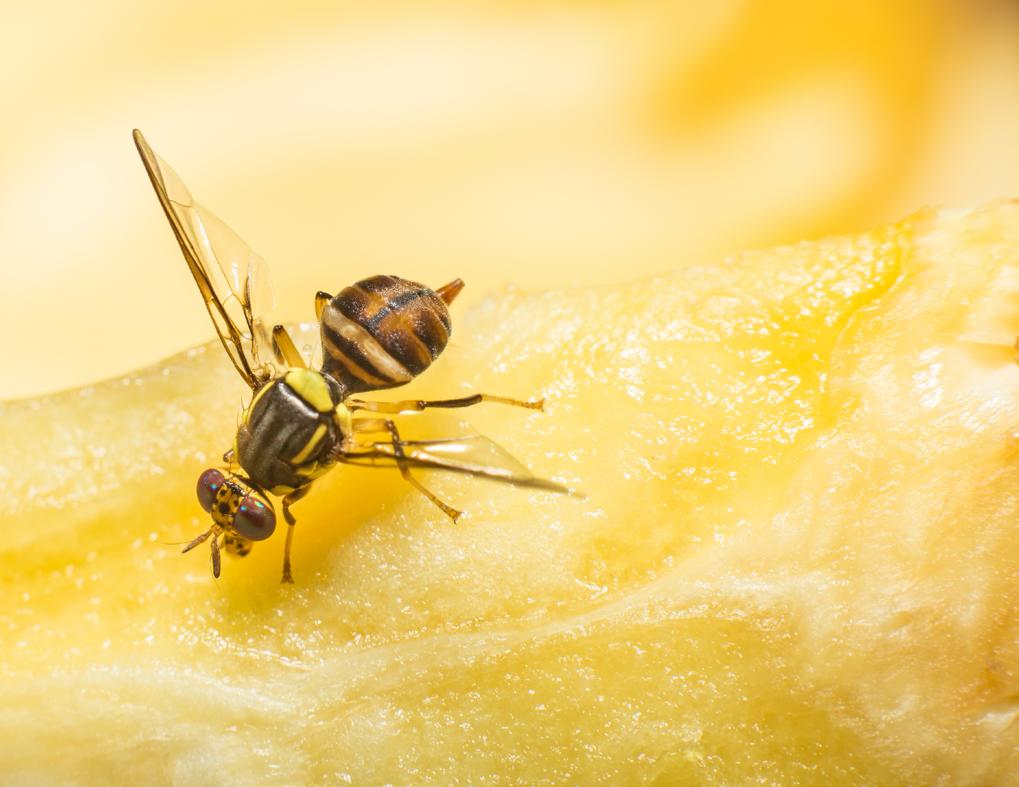
Caterpillars
Caterpillars can chew through tomato leaves and stems, as well as into the fruit itself. It's easy to protect your tomatoes and control caterpillars by dusting tomato plants every seven to ten days with Yates Tomato & Vegetable Dust. The dust is ready to apply and comes in an easy-to-use shaker pack.
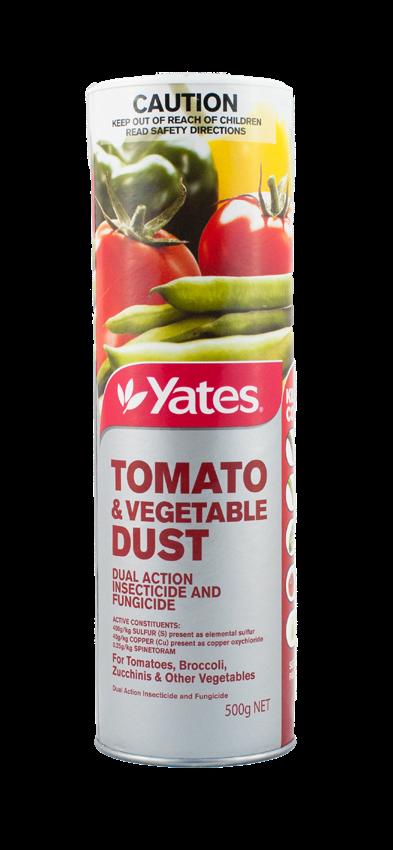
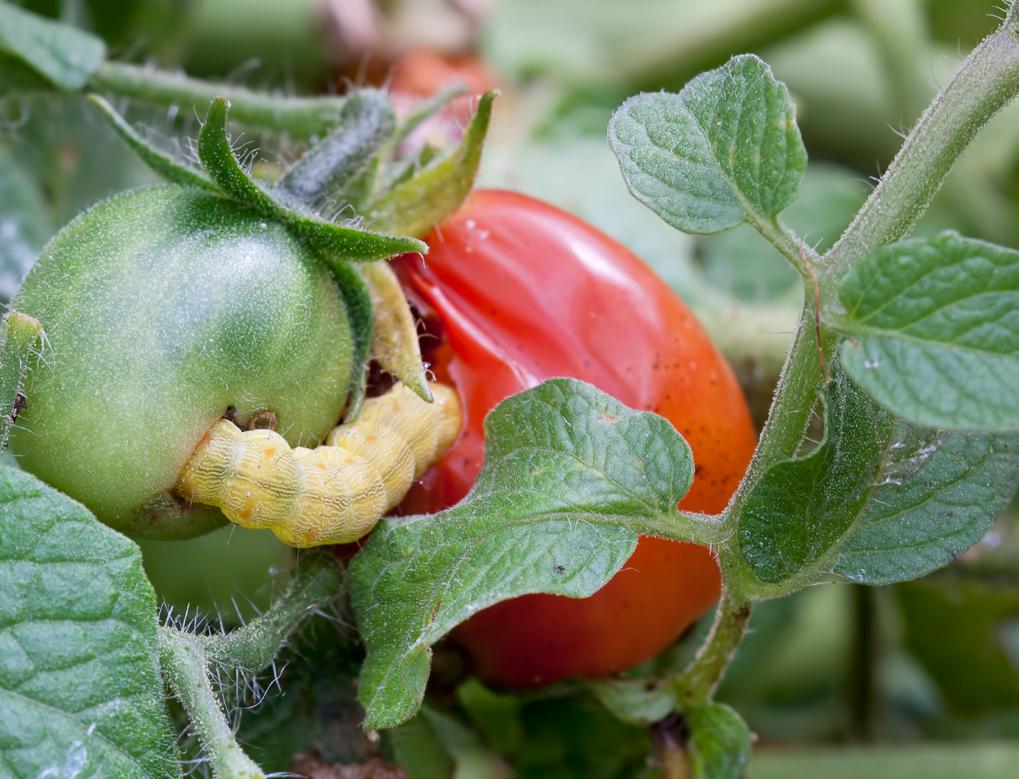
Disease watch
Tomato plants can be prone to diseases like leaf spots and mildews. These diseases can be particularly bad during wet weather, which makes it easier for the disease spores to survive and spread. To protect tomatoes from leaf spots and mildews, dust them every seven to ten days with Yates Tomato & Vegetable Dust. It contains a combination of two fungicides to control some of the most common tomato diseases.


GROWING WITH YOU - YATES 27
How to grow an organic garden

Growing your own food organically is rewarding for both you and the environment. We share the easy steps to start a sustainable and organic garden at home.
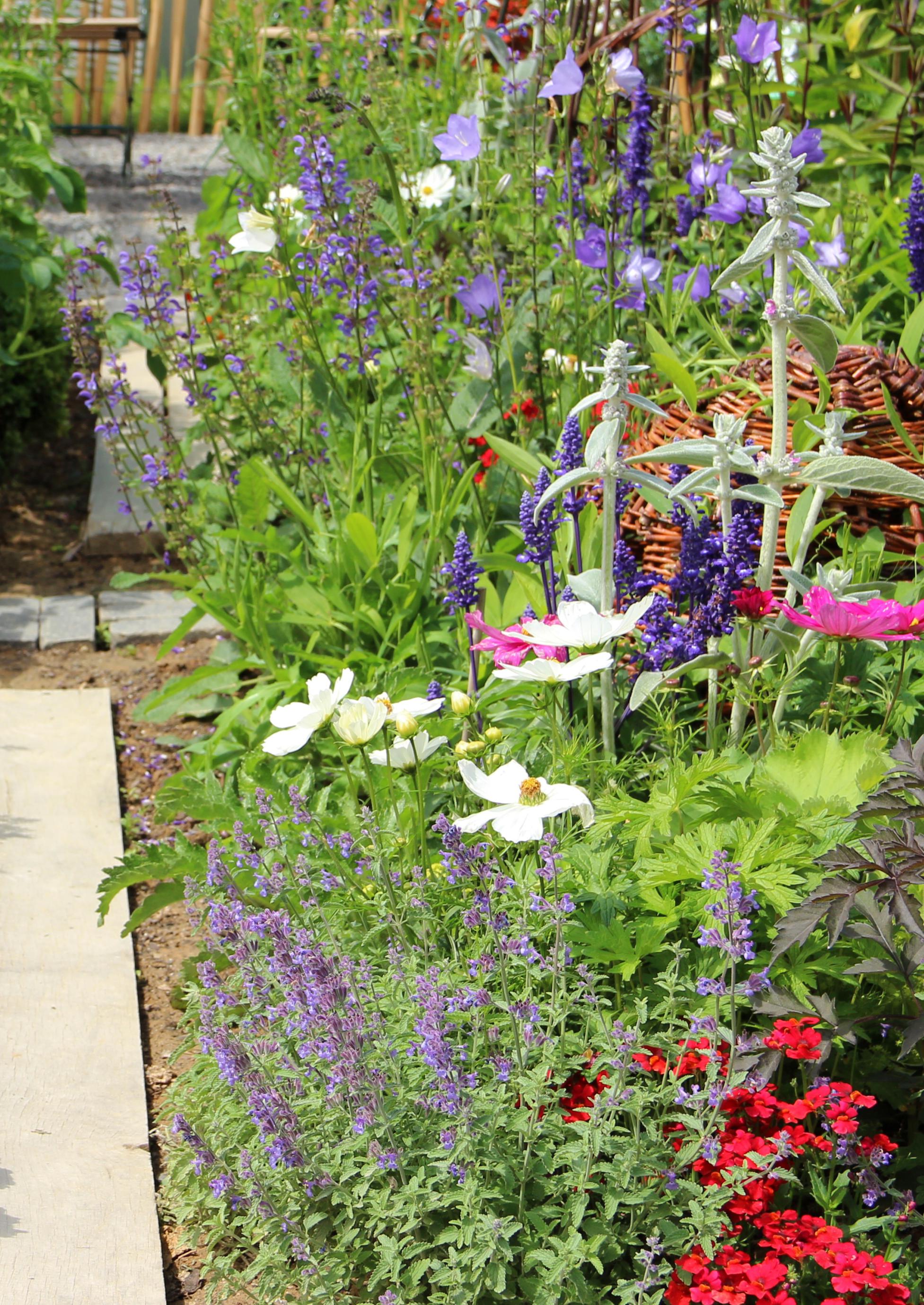
GROWING WITH YOU - YATES 29
ORGANIC Gardening

organic gardening?
» Organic gardening is a holistic approach to caring for plants and the ecosystem within your yard. It encompasses improving soil health, using naturally derived products to feed and protect plants, utilising sustainable gardening methods and being mindful of insects, birds and animals in the garden.
» You may have also heard of the terms permaculture and biodynamics. Permaculture is a philosophy that includes designing sustainable food growing systems based on natural ecosystems. Biodynamics uses plant and manure based extracts to promote plant care and concentrates on natural techniques. Both permaculture and biodynamics focus heavily on organic methods of growing plants.
» There are several independent organisations in Australia that regulate and approve organic products for gardeners, including 'ACO Certification Ltd.'

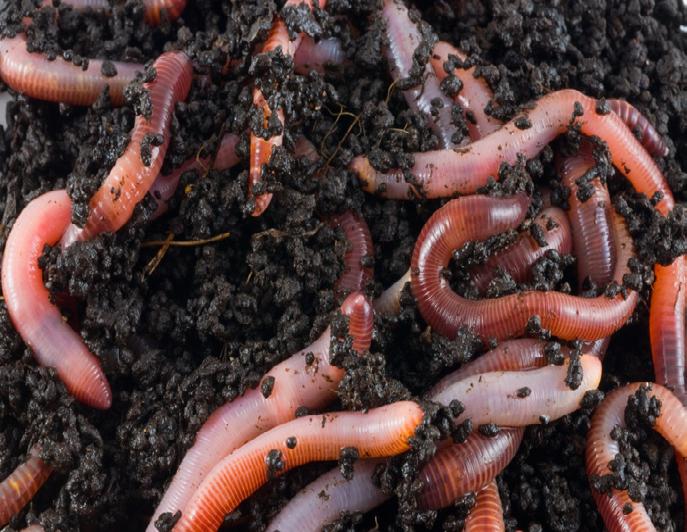
» When a gardening product has passed all the stringent organic requirements, it receives approval to be an 'input', and the label will include a 'Input for organic gardens' logo. This indicates that product is approved for use in organic gardening. Therefore this logo can assist gardeners to choose the best products for their organic garden.


GROWING WITH YOU - YATES 30
What is
What does 'Approved for use in organic gardening' mean?
Whether you're mindful of how home grown fruit and vegetables are cared for, or would like to garden more sustainably, here's how you can get started.
The importance of soil health
» Soil is the engine room of the garden. If you improve and nurture your soil, then plants in your organic garden will be healthier and more productive.
» The key to soil improvement is regularly adding a rich source of organic matter into the soil, such as Yates® Dynamic Lifter® Soil Improver & Plant Fertiliser. It's a blend of composted and concentrated chicken manure, boosted with the goodness of blood and bone, fishmeal and seaweed. Yates Dynamic Lifter provides food for hardworking earthworms, which help improve soil structure, and beneficial soil microorganisms, which help convert organic matter into food for plants and promote healthy soil and plant growth.
» Mix Yates Dynamic Lifter into the soil before planting new plants, and then sprinkle the pellets around the root zone throughout the year for ongoing soil improvement.

Composting
» Making your own compost is as easy as making a cake! And helps reduce the amount of organic material ending up in landfill too.

» In a compost bin or pile, add layers of a variety of 'green' ingredients, such as vegetable scraps and grass clippings, and 'brown' ingredients such as dried leaves, shredded newspaper and finely chopped woody branches. It will also help to add some handfuls of Yates Dynamic Lifter, which will provide additional food for the composting microorganisms.

» Keep the material moist but not wet, and turn over and mix the layers every one to two weeks. Depending on the size of the compost heap, the weather and the blend of ingredients, it can take up to six months for the compost to be ready to mix into your vegie patch soil.
EXTRA ORGANIC TIPS
1. Start a worm farm. These hardworking creatures will love munching through your kitchen scraps and turn them into nutritious worm castings.
2. Grow a green manure crop in a bare vegie bed.
3. Apply mulch, such as bark chips or straw, over the soil around plants. Mulch helps protect the soil surface from the elements and promotes a healthier and more moist soil underneath.
4. Include a small chicken coop in your garden. Chickens will help eat kitchen scraps and garden weeds and reward you with fresh eggs.

GROWING WITH YOU - YATES 31
Growing your own organic food
When you're starting on your organic kitchen garden, it's best to begin with vegies and herbs that are hardy, quick to grow and are not overly prone to pests and diseases. Here are our top organic vegetable and herb recommendations:
» Root vegies like beetroot and radishes.

» Salad greens such as loose leaf lettuces, silverbeet and rocket, as well as spring onions, chives and rosemary.
» Legumes like snow peas and beans.
» Fruiting vegies such as zucchini and cherry tomatoes.
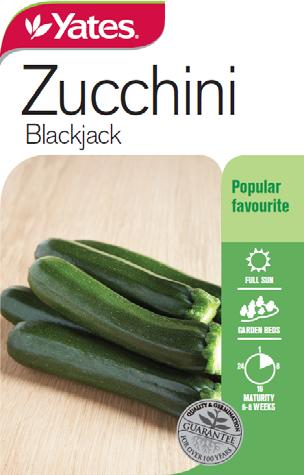
» As your confidence builds, add a lemon tree and a pot or patch of strawberries to your edible collection.

Feeding your organic garden
» Plants need feeding, to promote healthy and robust growth, as well as a great harvest.
» Organic gardeners can provide a balanced diet of nutrients to their plants with Yates® Dynamic Lifter® Soil Improver & Plant Fertiliser, which is approved for use in organic gardens. It contains a rich blend of composted chicken manure, boosted with the goodness of blood and bone, fishmeal and seaweed and releases organic nutrients slowly to the plants, as well as improving the quality of the soil.
» For organic feeding, sprinkle the easyto-apply pellets around the root zone of vegies, herbs and flowers every six weeks or around fruit trees, shrubs and Australian native plants each spring and autumn. It's fragrantly good!
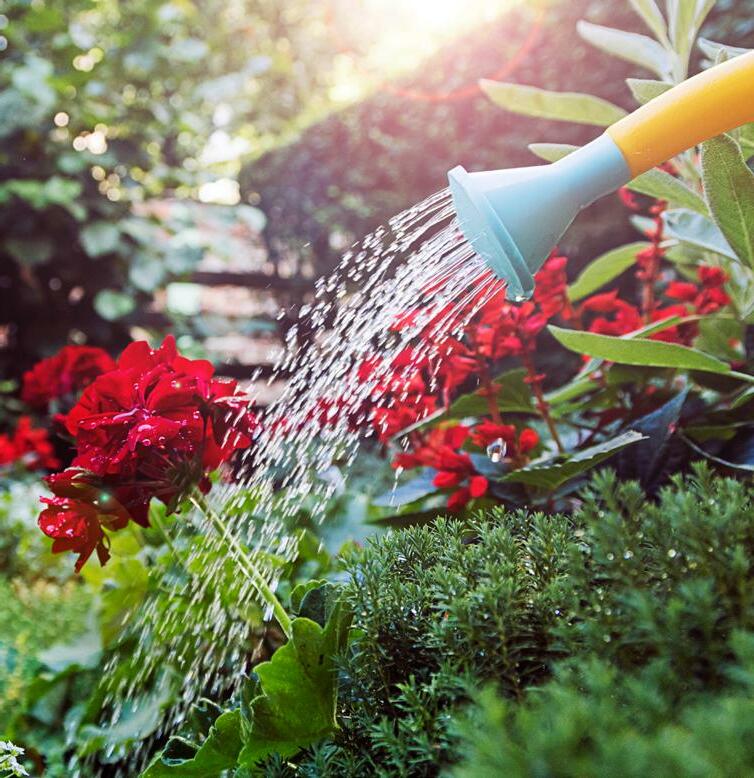
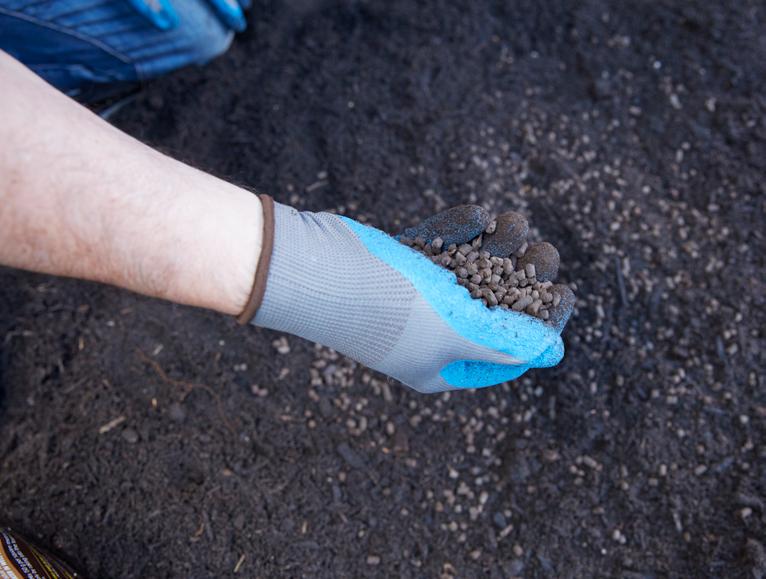
» Yates Dynamic Lifter is also available as a handy liquid concentrate, which you dilute in a watering can and apply over and around plants, including potted plants. To keep plants well nourished, reapply every one to three weeks.


GROWING WITH YOU - YATES 32
Preventing problems
» Being observant in the garden will reap benefits, as you can step in when issues are still small, rather than waiting until things have gotten out of control.
» Watch for small numbers of insects like aphids or caterpillars, which can be squished or washed off plants with a firm squirt from the hose. Also look for beneficial insects like ladybirds and praying mantises, which are garden helpers and devour some pest insects for you. You can create an inviting habitat for beneficial insects by growing a wide variety of flowers, that bloom at different times of the year. The flowers can provide pollen and nectar, which the predatory insects use as alternate sources of food. It's easy to grow a patch of flowers for beneficial insects by sowing a packet of Yates Bee Pasture Pollen & Nectar Mix seeds.
» Controlling weeds before they have a chance to flower and set seed is another way to help reduce future garden problems. Based on clove oil and acetic acid, Yates Nature's Way® Organic Weed Killer controls a wide range of garden weeds and is approved for use in organic gardening.

Organic pest control
» Despite our best efforts, sometimes insect pest numbers spiral and plant health can suffer unless we intervene. Organic gardeners can control the most common pests with the Yates Nature's Way range of products, which are approved for use in organic gardens
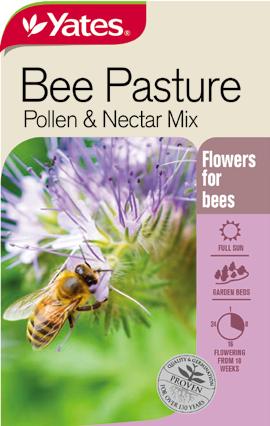
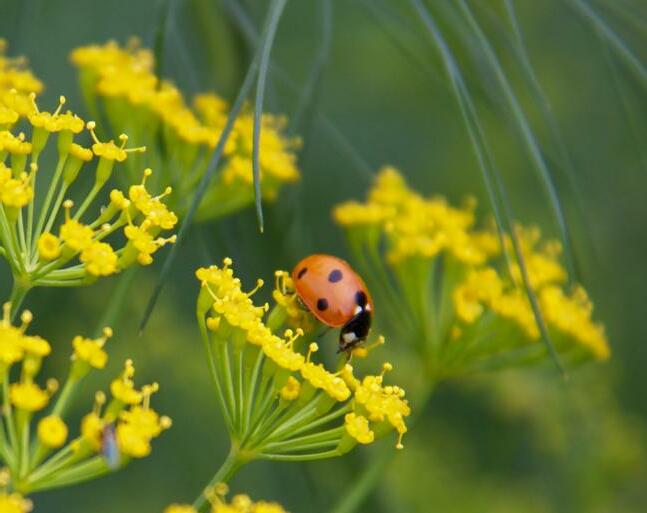
» Aphids, thrips, mealybugs, mites and whitefly on vegies, herbs and fruit can be controlled with Yates Nature's Way Vegie & Herb Spray, which is an insecticidal soap made from natural vegetable oils. Spray pests as soon as they're noticed, including on the undersides of leaves and reapply every five to seven days as required.

» Caterpillars can be controlled with Yates Nature's Way Caterpillar Killer. Based on beneficial bacteria found in soil, it specifically targets caterpillars and can be used on vegies, herbs and fruit.



» Organic citrus growers can protect their trees from citrus leaf miner, aphids, scale and bronze orange bug with regular sprays of Yates Nature's Way Citrus & Ornamental Spray. It contains a blend of pyrethrin (an extract from the pyrethrum daisy) and canola oil, plus added seaweed to help boost plant growth.
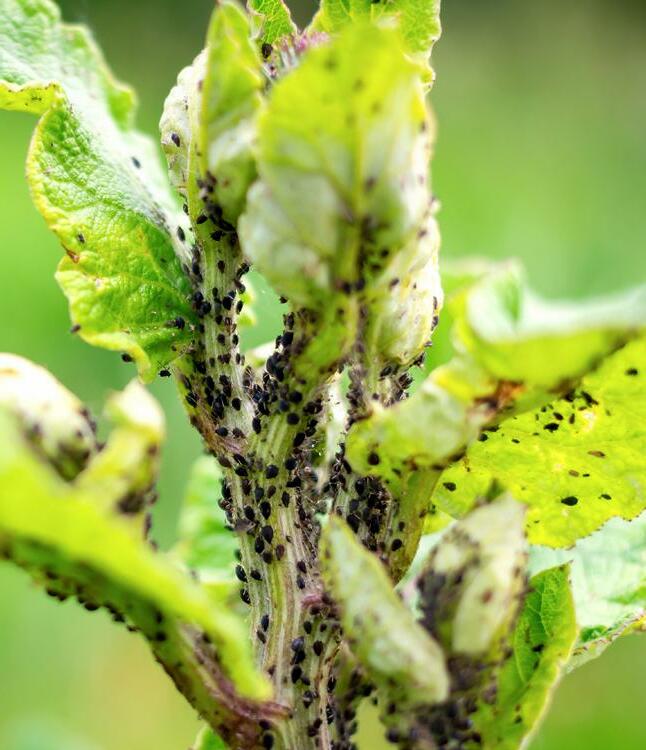
GROWING WITH YOU - YATES 33





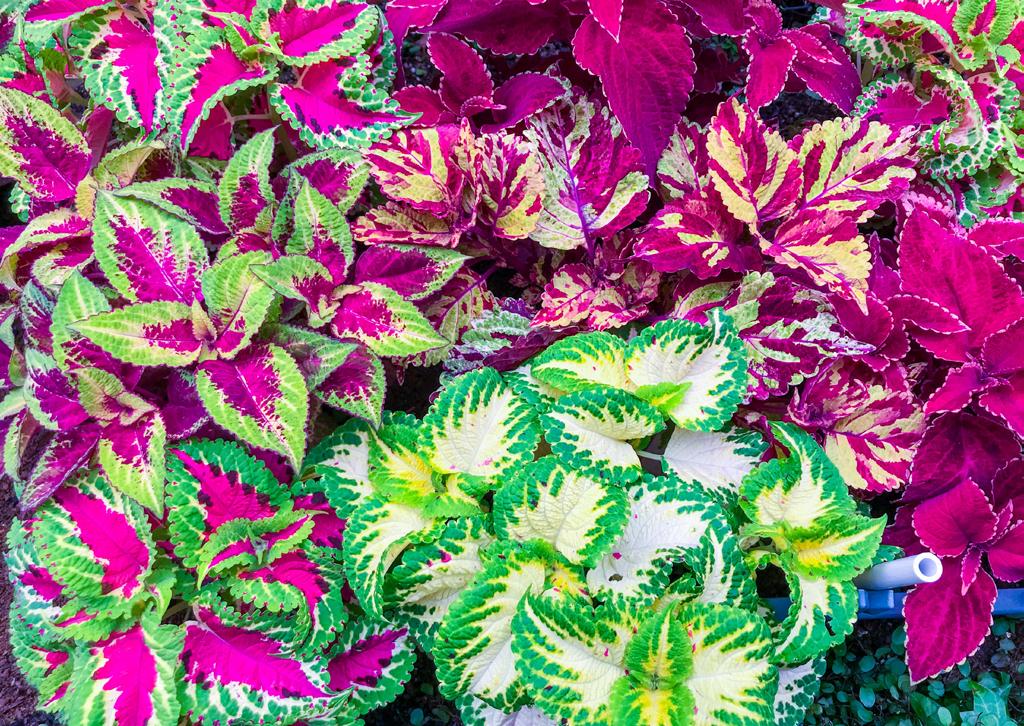
GROWING WITH YOU - YATES 34 • Accent on Blue • Accent on Pink • Accent on White • Ageratum Blue Mink • Aster Colour Carpet • Bee Pasture • Butterfly Field • Catmint • Cineraria Starships • Coleus Pots O' Beauty • Colonial Garden Collection • Festival of Flowers • Hanging Basket Mix • Lobelia Cascade Mixture • Marigold Safari Mixture • Nasturtium Jewel Mixed • Poppy Iceland Artist's Glory • Primula Fairy Primrose • Salvia - Blue Bedder, Dwarf Scarlet • Sunflower - Yellow Empress, Dwarf Sensation • Wildflowers of the World • Zinnia Sunrise Mix Australia Wide Summer It's time to sow a fabulous range of flower seeds, to bring glorious floral colour into your garden and outdoor spaces over the coming months. And the bees and butterflies will love you for it!
seeds Seeds
flower
by









GROWING WITH YOU - YATES 35 Great things star t w ith Yates™ Shop for all seeds great and small. It’s easy to brighten up your garden from our online shop. Choose from over 200 varieties of seeds all available at yates.com.au @yatesgardening How cool, temperate and sub-tropical is that? Shop for your owers online PrIce code Y���� A��������� G�� S�� P������� NSW ���� A��������. P������ ����������� �A����: ��00 �6� 0�� �� �N��: �0�� 6�6 ��00 Y���� N�� �������� B������g E� T�� G���� ��� N������ S������ O�����g�� A�������� N�� ������� Yates seed is tested and proven. we will gladly replace any packet that does not perform to your satisfaction. �����ate��co��au �����ate��co�n� con�ult �ate� �arden �u�de� ������� ��� ������ ���g���� ���� ���� ���g� � Y���� �� ��g������� ��������� macbird floraprint © copyright reserved YFC32129N garden beds a traditional favourite that produces a profusion of soft pink, blue and white blooms. Ideal for massed garden colour, background planting and cut flowers. annual Flowers For cuttIng long bloom ng SOWING ADVICE WHEN HOW sow direct where they are to grow or into trays of Yates seed raising mix. Firm down, water gently and keep moist through the germination period. transplant carefully (seedlings resent root disturbance) when large enough to handle. CARE choose a sunny, well-drained, wind-protected position. add Yates blood & bone before planting. water moderately and feed with Yates hrive soluble Flower & Fruit Plant Food. Protect from snails and slugs with Yates blitzem. HINT Pinch back flowers and stems to keep plants compact. autumn & w nter late summer & autumn autumn & earlY sPr ng PACKED BY WEIGHT: CONTAINS 0.6g SEED. 32129 1 Zn A aust Cottage garden colour Botanical Name: Centaurea cyanus on s Pace 40cm He gH 60cm lower ng 14-20 weeKs FO OVER Y aRS QUA T R N OGUARANTEE 16 24 Flower ng 14-20 weeKs Cornflower Double Mixed Cornflower Double Mixed sun or Part sHade Pos on sun or Part Hade PrIce code Y���� A��������� G�� S�� P������� NSW 22�� A��������. P������ ����������� �A����: ��00 ��� 0�� �� �N��: �0�� ��� 2�00 Y���� N�� �������� B������g T�� G���� ��� N������ S������ O�����g�� A�������� N�� ������� yates seed is tested and proven. we will gladly replace any packet that does not perform to your satisfaction. www�yat�s��o��a� www�yat�s��o��� �o�s��t �at�s �ar��� ������ ������� ��� ������ ���g���� ���� ���� ���g� � Y���� �� ��g������� ��������� macbird floraprint © copyright reserved YFC31970N Long lasting masses of tiny fragrant white flowers. Its hardiness and versatility makes it ideal as a border, ground cover or for growing in pots. Hardy annuaL sow dIrect Long fLower ng SOWING ADVICE WHEN HOW scatter seed thinly where they are to grow, or raise in trays of yates seed raising Mix. Barely cover, firm down, water gently and keep moist through germination period. thin out or transplant when large enough to handle. CARE choose a well drained position in full sun or semi-shade. add yates Blood & Bone and yates garden Lime before planting, and fertilise regularly with yates thrive soluble Plant food. Protect from snails and slugs with yates Blitzem. HINT cut back regularly to tidy plants and encourage new growth, or leave spent flowers to self seed. alyssum attracts beneficial insects to the garden. autuMn & w nter aLL year round ear y sPr ng & autuMn PACKED BY WEIGHT: CONTAINS 0.2g SEED. 31970 1 Zn A aust Easy to grow Botanical Name: Lobularia maritima FOROVER 0YeaRS QULTY RMNAT NGUARANTEE 1 16 8 24 f ower ng 8 weeKs Pots & garden Beds Alyssum Carpet of Snow Alyssum Carpet of Snow sun or Part sHade D�O�G�� S�A� �
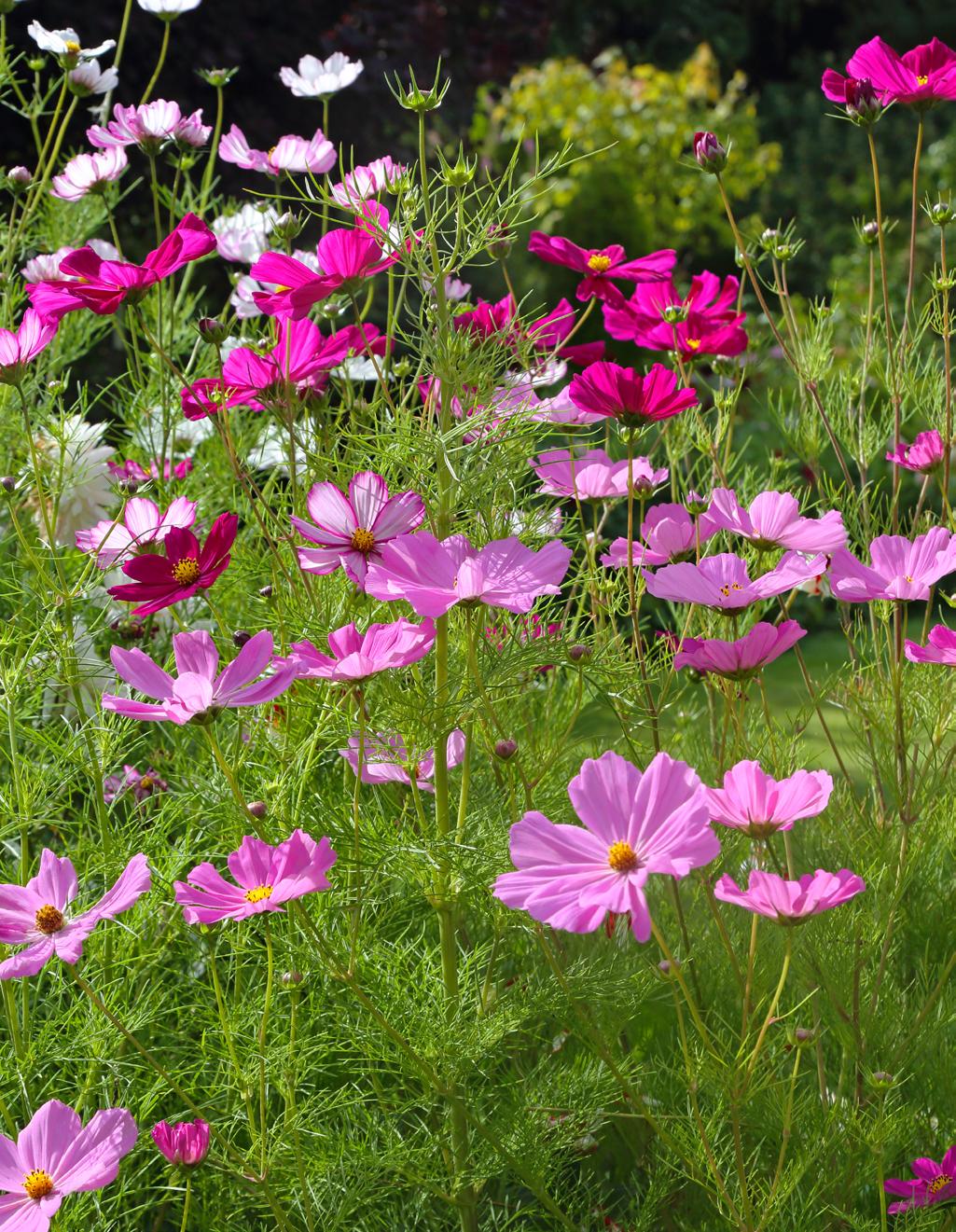

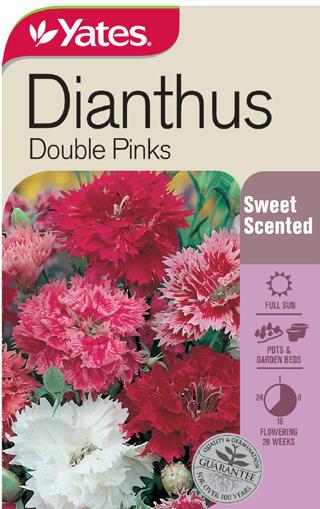

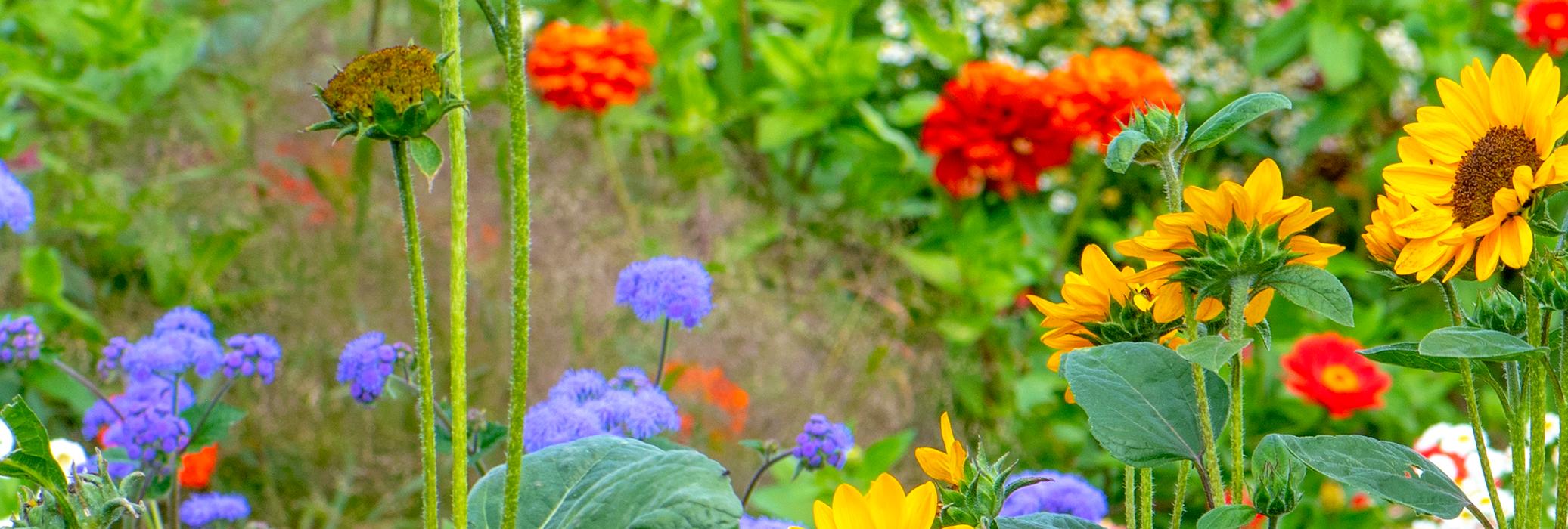



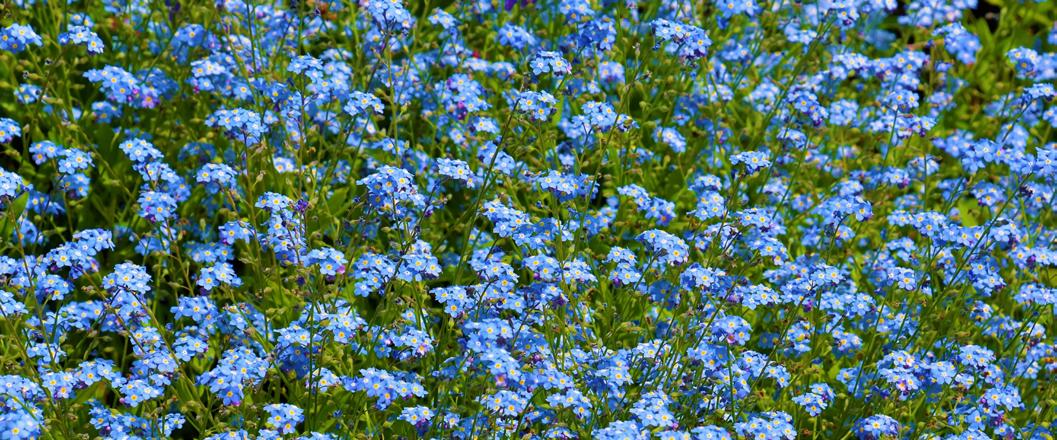
GROWING WITH YOU - YATES 36 Temperate Climates • Alyssum - Cameo Mixture, Carpet of Snow • Borage • Californian Poppy Sunshine Mix • Chrysanthemum Snowlands • Cosmos - Bright Lights, Sensation • Cottage Garden Mix • Dahlia Cinderella • Delphinium Pacific Giants • Dianthus Double Pinks • Echinacea • Forget Me Not • Gerbera Colour Mix • Gypsophila Baby's Breath • Phlox Drummondii Dwarf • Snapdragon Tom Thumb • Swan River Daisy Summer flower seeds



GROWING WITH YOU - YATES 37 • Alyssum - Cameo Mixture, Carpet of Snow • Californian Poppy Sunshine Mix • Dahlia Cinderella • Delphinium Pacific Giants • Forget Me Not • Gerbera Colour Mix • Gypsophila Baby's Breath • Hollyhock Double Elegance • Phlox Drummondii Dwarf • Poppy Flanders Red • Swan River Daisy Cool Climates Seeds by Tropical /Sub Tropical Climates • Borage • Chrysanthemum Snowlands • Everlasting Daisy Mixed • Paper Daisy Pink
perfect
How to grow a great lawn for the perfect backyard cricket and football pitch!

Pitch
Grow like a pro
» A healthy lawn is better able to withstand the wear and tear from backyard games. To promote a thick green lawn, it's important to feed it regularly with a fertiliser that's been specially designed to both nurture the soil and promote healthy grass growth.

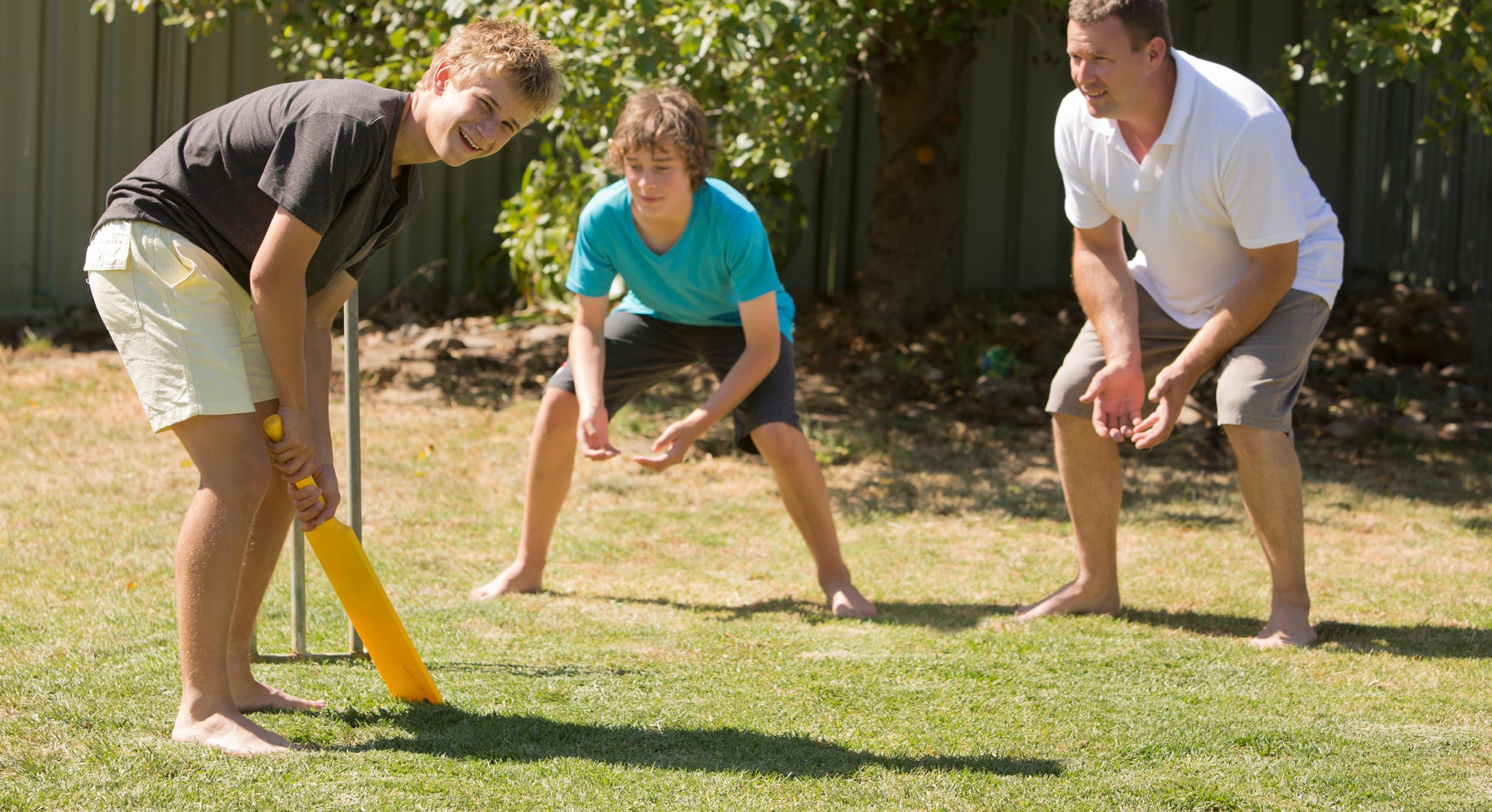
» Munns® Professional Golf Course Green is a triple action lawn fertiliser that contains a blend of premium ingredients to thicken the lawn and promote rich green growth. Munns Professional Golf Course Green is also organically enriched, which promotes improved soil health, and is boosted with a natural wetting agent to assist soil moisture retention.
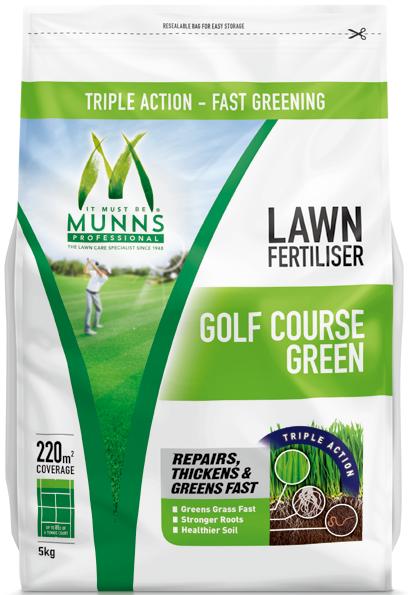
» Feeding your pitch with Munns Professional Golf Course Green is as easy as spreading 22 grams (approximately one third of an adult handful) over every square metre of lawn and watering in well.
» To help maintain your perfect pitch, reapply every 8 - 12 weeks from spring to autumn.

GROWING WITH YOU - YATES 39
Have some family fun outdoors playing cricket or football. Here are our tips for creating the perfect pitch!
Tackle weeds
» Nobody wants to play on a prickly pitch! To control weeds like thistles, as well as other broadleaf weeds like capeweed, clover, plantain and cudweed, apply Yates® Weed'n'Feed® over the lawn (use Yates BuffaloPRO® Weed'n'Feed if you have a buffalo lawn or if you're unsure of your lawn type). Keep your players off the pitch until the spray has dried.


» Pro tips - measure your lawn before applying, so you know how many square metres you need to treat, and don't mow seven days before or after applying Yates Weed'n'Feed.
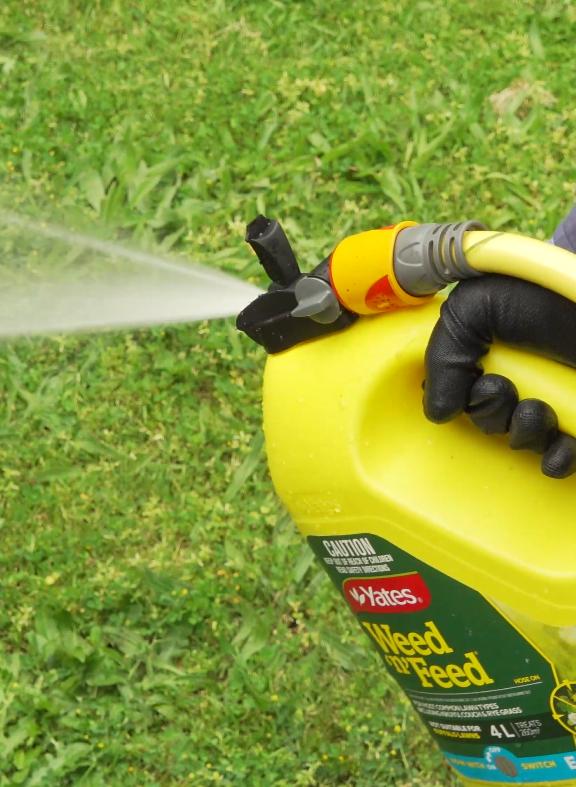
» Weeds will die slowly and it can take up to three weeks for weeds to show symptoms.

Patch repair
» Well-loved areas of your backyard pitch may develop a bare patch. Bare patches not only spoil the look of the lawn, they're a magnet for weeds and are more likely to become muddy in wet weather.

» As soon as a patch becomes worn or bare, move the game to a different area in the lawn and repair the patch with Munns® Professional Quick Fix Lawn Seed. It contains a premium turf grade seed blend, coated with an advanced germination booster, plus a wetting agent and slow release fertiliser to feed the patch as it repairs.

Aeration
» Constant play on the lawn can result in hard and compacted soil, making it challenging for grass to grow and air and moisture to penetrate down into the root zone. An easy way to aerate the soil is to push a garden fork down through the grass and into the soil, to a depth of around 10cm, and gently lever it back and forth. Doing this multiple times over the lawn will help open the soil up, allowing in much needed water and air, and promote improved grass growth.
GROWING WITH YOU - YATES 40
GROW




L


E A


I K
W I T H M U N N S ® P R O F E SS I O N A L P R O
Munns Professional is a registered trade mark of DuluxGroup (Australia) Pty Ltd.
ARE YOU to lawns? NEW


Mowing & watering is not enough!
A common misconception is that mowing and watering the lawn is enough. Unfortunately this can leave the lawn yellow, sparse and full of weeds. But taking care of your lawn doesn't have to be hard! It's as simple as regular feeding, looking out for pests and controlling weeds.
When it comes to mowing, the rule of thirds is key. Aim to remove the top third of growth at each mowing. And it's best to mow the lawn regularly and keep it well trimmed, rather than letting it grow too long, which promotes more thin and sparse growth.



When watering your lawn, it's better to water it thoroughly once or twice a week (rather than daily) and water in the morning, so the grass leaves have a

Our tips can help make lawn care less of a chore, plus we have a season-byseason lawn care plan to guide you throughout the year
Feeding
» Regularly feeding your lawn provides multiple fantastic benefits, including promoting a deep green colour and thick and healthy growth.
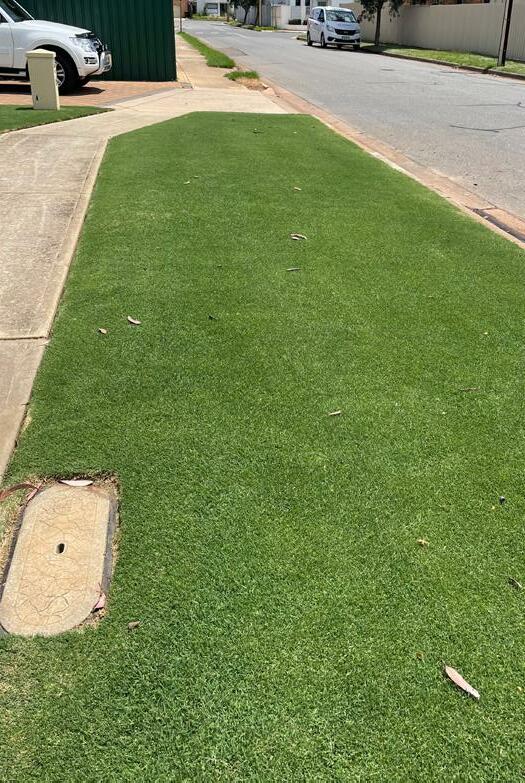
» It's important to choose a specialised lawn fertiliser, such as Munns® Professional Golf Course Green, which has the right blend of nutrients to promote optimum lawn growth. And applying Munns Professional Golf Course Green at the beginning of spring, summer and autumn will help make your lawn the envy of the street.
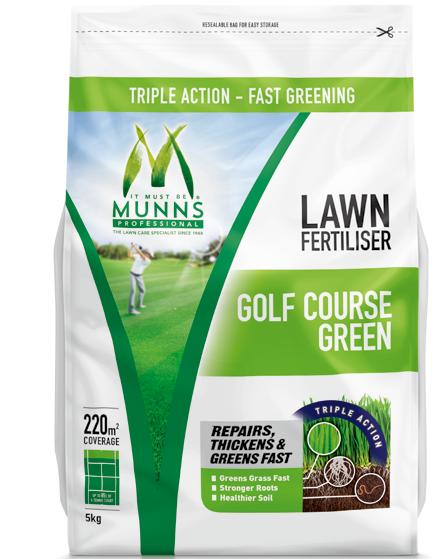
Pest protection
» There are two main insect pests that can attack lawns throughout the year, curl grubs during spring and armyworm in late summer and autumn.
» Curl grubs live under the soil and chew through lawn roots, resulting in dead and dying patches of grass. Armyworm are caterpillars that live above the soil and eat lawn foliage.
» Both curl grubs and lawn armyworm can be controlled with Yates® Grub Kill & Protect for Lawns.


Weed control
» Weeds spoil the look of your lawn and some weeds, like bindii and thistles, can be downright painful.
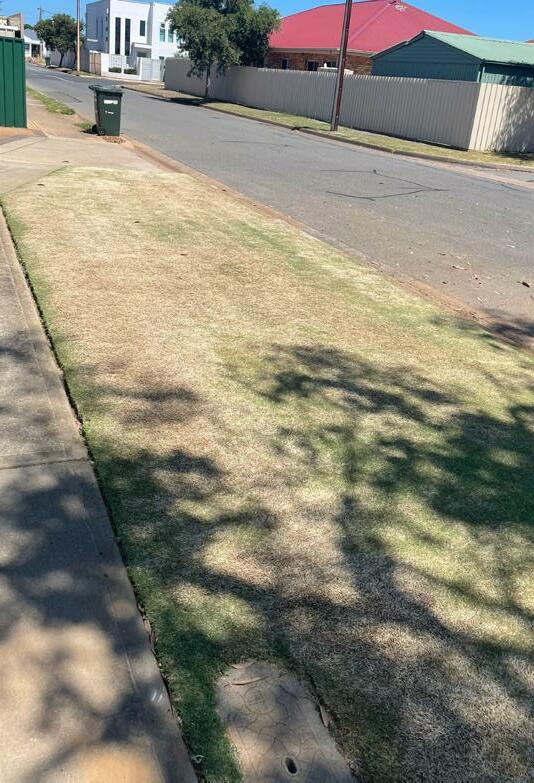


» Controlling weeds while they're young, before they've had a chance to flower and set seed, is crucial, otherwise you'll have more weeds in the future.
» It's easy to control common broadleaf weeds in your lawn with easy to use hose-on Yates Weed'n'Feed®, or Yates BuffaloPRO® Weed'n'Feed if you have a buffalo lawn (or you're unsure of your lawn type). Measure your lawn first (so you know how much product to apply) then plug the applicator into your hose and you're ready to control your weeds.
 After Before
After Before
Season-byseason lawn care plan
SPRING
» In early spring, control broadleaf weeds like bindii (to prevent the prickles forming) and clover with Yates® Weed'n'Feed® or Yates BuffaloPRO® Weed'n'Feed if you have buffalo lawn.

» Feed the lawn with Munns® Professional Golf Course Green to promote healthy green growth.
» Start a new lawn or fix bare patches with Munns Professional lawn seeds.
» Control root-eating curl grubs with Yates Grub Kill & Protect for Lawns.
SUMMER
» Apply a soil wetter like hose-on Yates Waterwise® Soil Wetter over the lawn to help moisture penetrate down into the root zone.
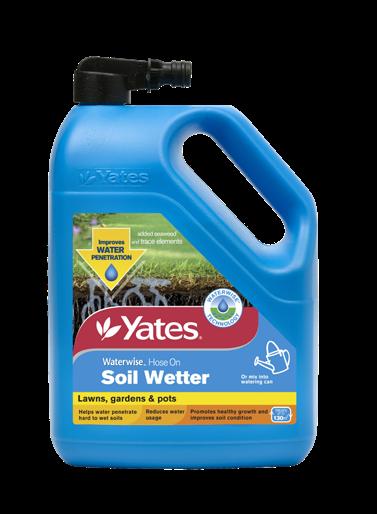
» Feed the lawn with Munns Professional Golf Course Green.
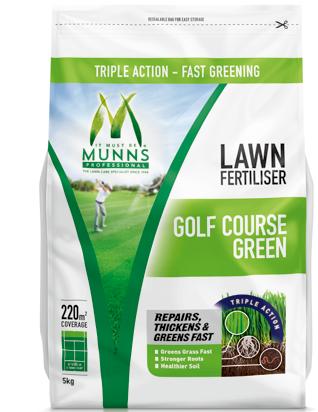


» At the end of summer, aerate the soil under the lawn with a garden fork.
AUTUMN
» Feed the lawn with Munns Professional Golf Course Green to help it repair after a long hot summer and prepare for the cooler months ahead.
» Control winter grass with easy to use hose-on Munns Professional Winter Grass Killer.

» In early autumn repair bare patches or start a new lawn with Munns Professional lawn seeds.
» Monitor for lawn armyworm and apply Yates Grub Kill & Protect for Lawns as soon as any damage is spotted.

WINTER
» Control broadleaf weeds like bindii and clover with Yates Weed'n'Feed or Yates BuffaloPRO Weed'n'Feed.
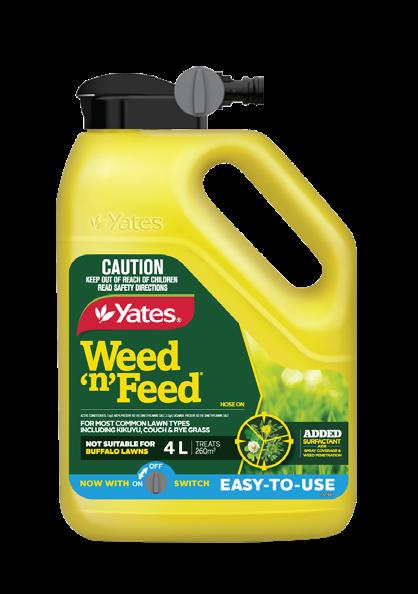
» In all but the coldest areas, for a quick lawn green up apply Munns Professional Green Dominator.
» Sharpen your mower blades in preparation for spring!




Yates, Yates Weed ‘n’ Feed and Buffalo Pro are registered trade marks and Weed ‘n’ Feed is a trade mark of DuluxGroup (Australia) Pty Ltd Make caring for it easy with Yates Weed’n’Feed ® and Yates ® Buffalo PRO® Weed’n’Feed™ . Formulated to do two jobs at once; eliminate broadleaf weeds, like Bindii and Clover, while at the same time giving your lawn a quick burst of nutrients to promote healthy, green growth. Take the next step to a barefoot ready lawn
is on the move Lawn armyworm
Learn how to protect your lawn from damage

Checking for grubs
You can monitor for the presence of lawn armyworm by placing a damp towel or a piece of wet cardboard near a damaged lawn area overnight. In the morning, lawn armyworm may be found hiding underneath. You may also see birds scratching at the lawn. They're searching for the armyworm caterpillars.
A common pest that attacks lawns during late summer and early autumn is lawn armyworm.
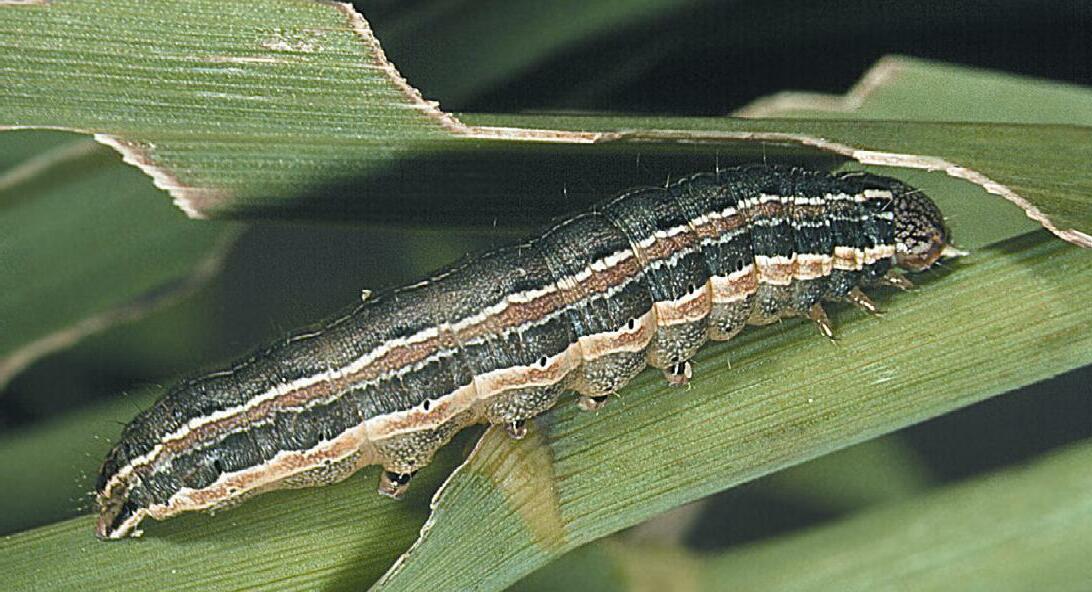
Lawn armyworm caterpillars are the larvae of moths that live in the lawn thatch during the day and come out in the late afternoon and evening to feed on grass stems and leaves. The mature caterpillars are around four cm long with green, grey and beige stripes. When disturbed they tuck their heads into their abdomen and form a spiral-like shape.
Their name gives you an indication of their behaviour, with large numbers of armyworms advancing across and rapidly decimating expansive areas of lawns.
The symptoms of lawn armyworm include dead or dying patches of lawn, patches of lawn that have a straw-like appearance and chewed and tattered grass leaf tips and margins. Damage can appear very quickly and spread rapidly across the lawn over a period of nights.
As soon as any symptoms are noticed, apply Yates® Grub Kill & Protect for Lawns over the lawn. Available in easy to spread granules or a liquid concentrate that's applied using a sprayer, Yates Grub Kill & Protect for Lawns will kill the armyworm and help prevent further lawn damage.


GROWING WITH YOU - YATES 46








GROWING WITH YOU - YATES 47 Great things start w ith Yates™ Shop for all gardens great and small. Now you can discove r a wide range of produc ts for your garden online. Find what you’re looking for at shop.yates.com.au @yate sgardening S hop fo r yo ur ga rde n f ro m t he co m fo rt o f yo u r…e r, ga rden . yates.com.au
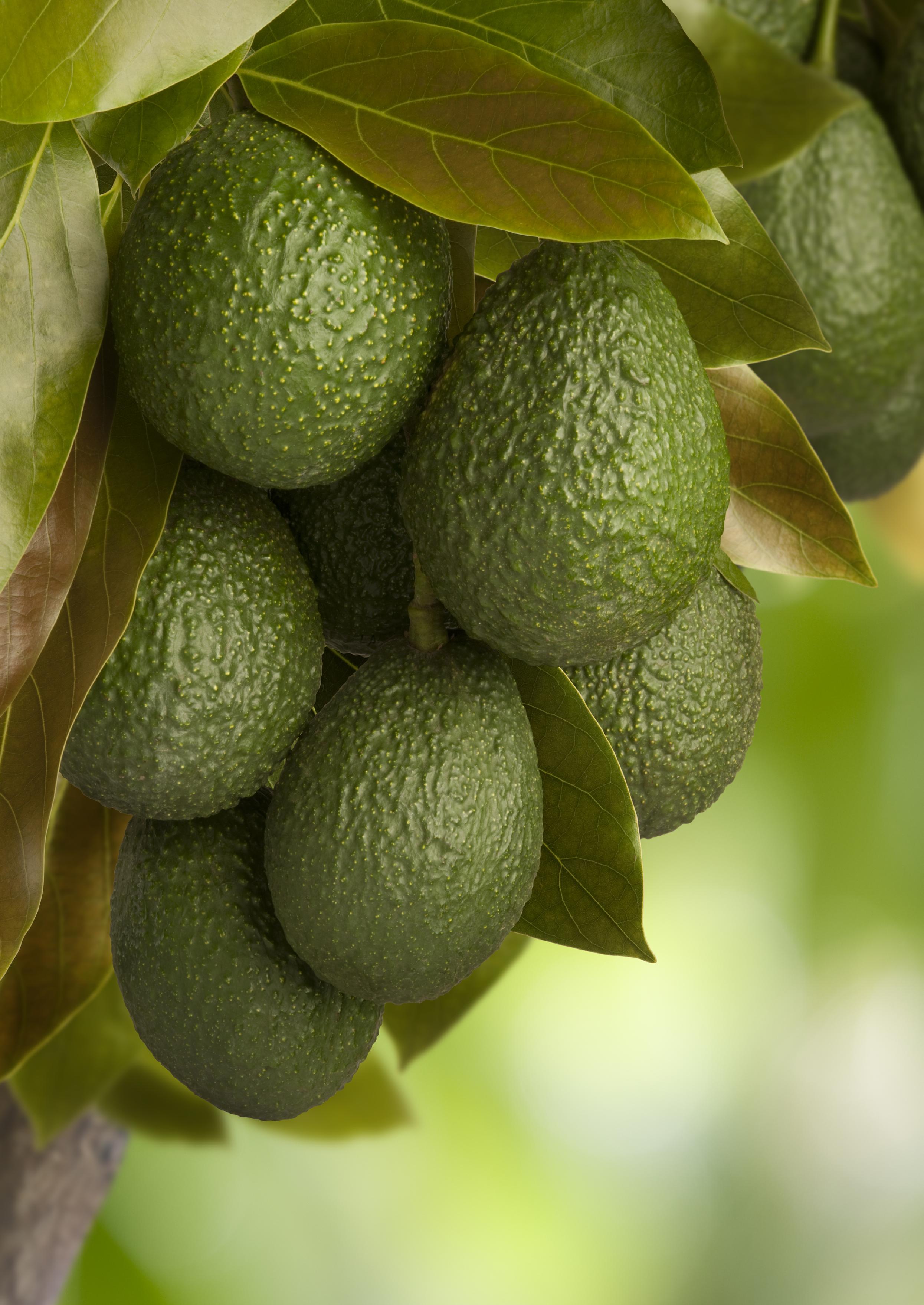
how to grow avocados
Whether you love them smashed on sourdough, tossed into a salad or in home-made guacamole, avocados are creamy and delicious and packed with good fats. With a bit of space and the right climate, you can grow avocados at home. Let's get growing!
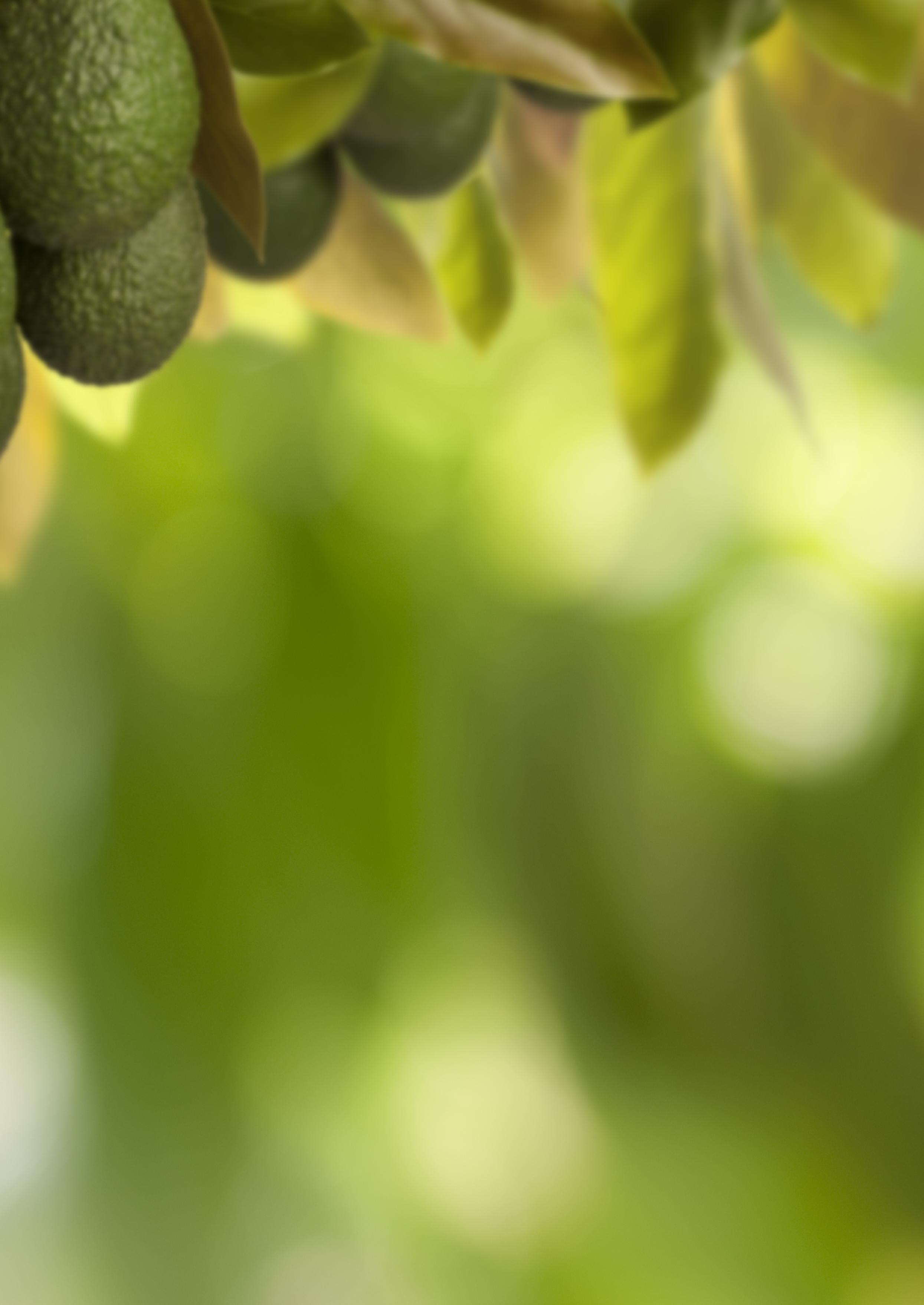
GROWING WITH YOU - YATES 49
Growing your own avocados
» It's a joy to grow your own fruit but being able to pick home grown avocados is something truly special. You'll need some patience, but the result will be deliciously spectacular!
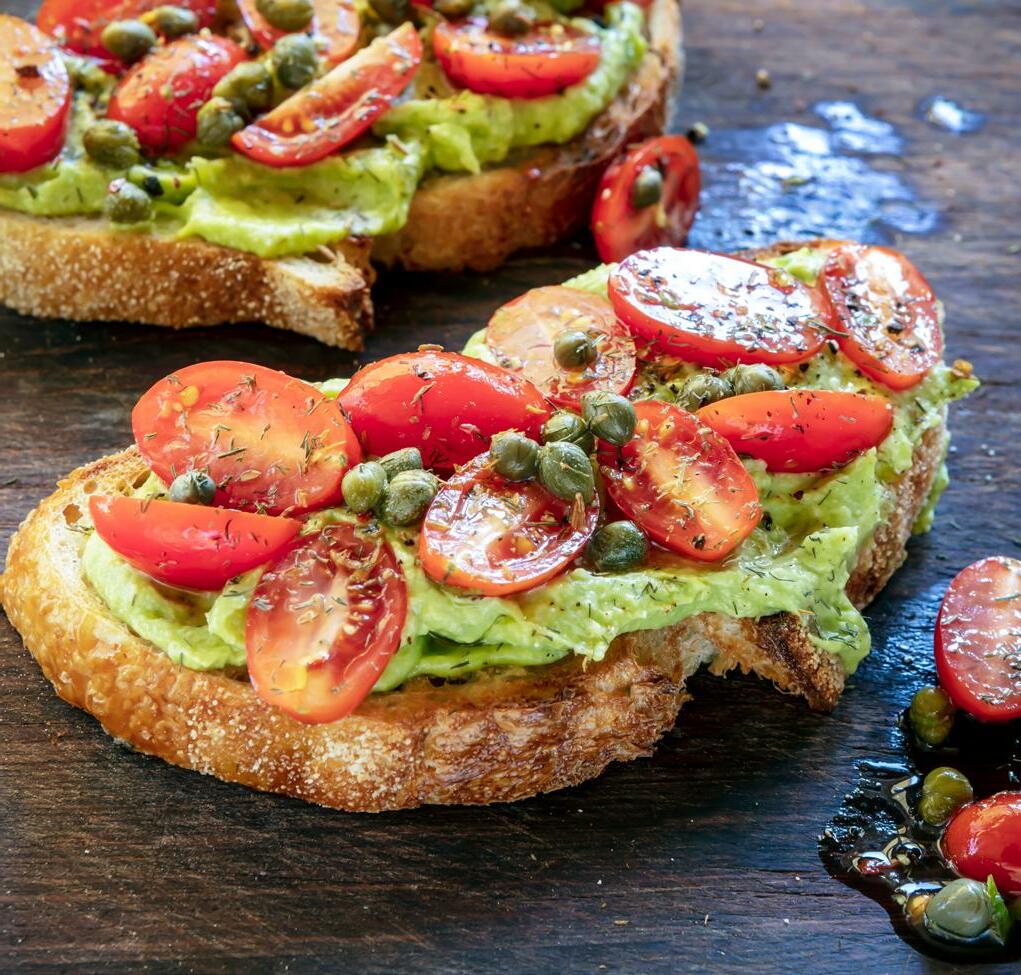
» It's best to start your avocado growing journey by buying a grafted tree from your local garden centre. Grafted trees will bear sooner (taking around four to five years) than seed grown trees, which can take ten years or more to bear fruit or may not produce fruit at all.
Climate
» Avocados do best in tropical and subtropical climates, however, can also be grown in sheltered spots in temperate and even cool regions.
» Check the plant tag and choose the right variety for your area. For example, 'Bacon' is cold tolerant while 'Wurtz' performs better in warmer areas.
Position
» Avocados need a sunny spot that receives at least six hours of sunshine a day and is protected from cold winds and frost. In cool areas, consider growing avocados in pots, that can be positioned next to a sun-drenched north facing wall which provides a more protected microclimate.
» Most avocados will grow up to ten metres tall, so choose an appropriately sized position. However, avocados can also be kept trimmed to around three metres if required.

» For in-ground avocados, choose a position with well-drained soil. Avocados can be prone to root rot diseases and will suffer if grown in poorly drained soil.
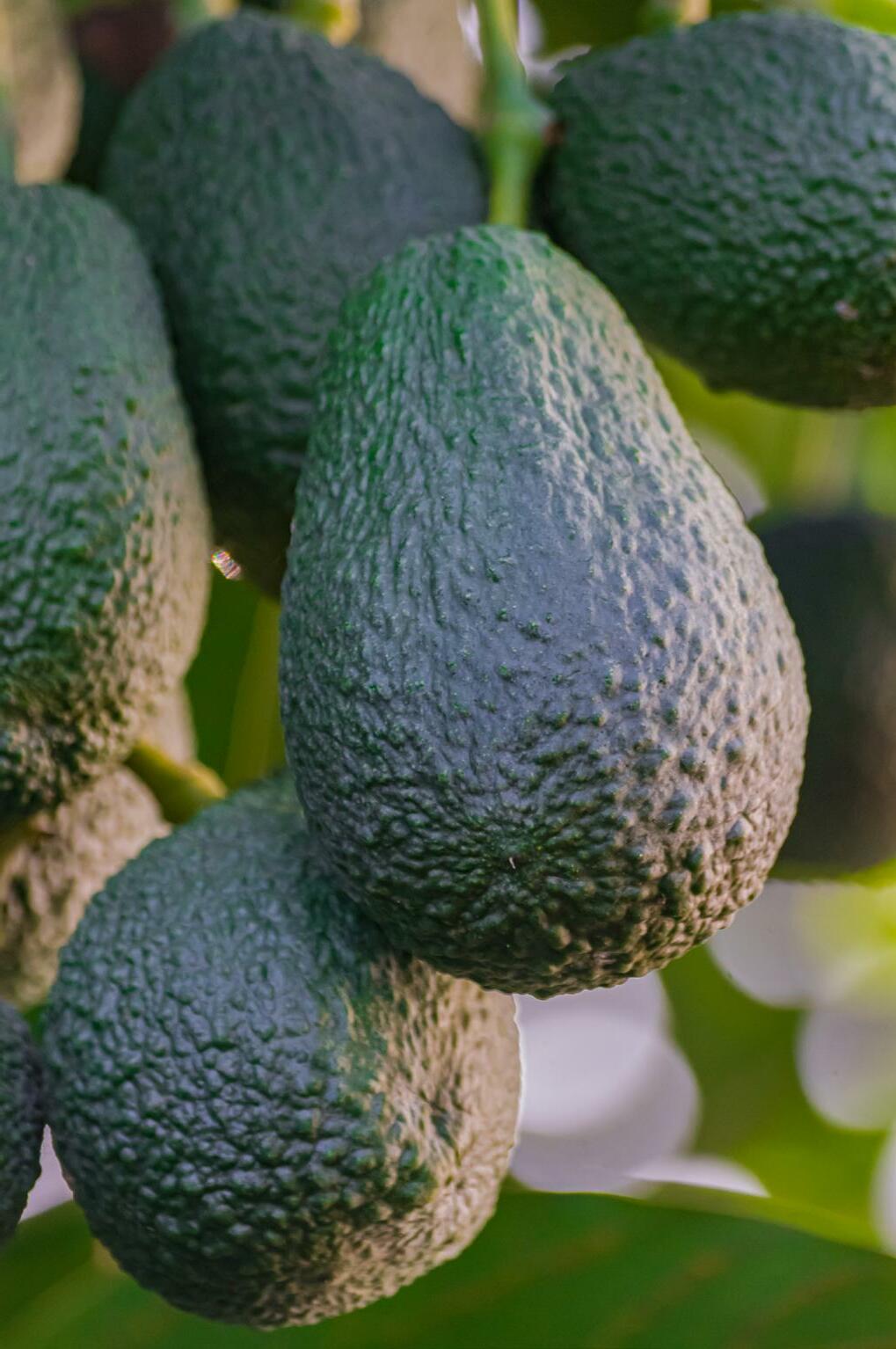
While avocados can be self-pollinating, they will fruit better if cross-pollinated with another type, as different avocado varieties have different flowering habits.

'Type A' avocados, including 'Hass' and 'Wurtz', have flowers that open female in the morning and then male the next day. 'Type B' avocados, such as 'Bacon' and 'Fuerte' have flowers that open female in the afternoon and male the following day. So the way to improve pollination and fruit set is to plant both a Type A and a Type B tree, so there are both male and female flowers open at the same time. And it's interesting to note that although European honeybees can pollinate avocado flowers, blow flies, hoverflies and ladybirds are particularly good pollinators for avocados.
Pre-planting soil preparation
» In addition to well-drained soil, avocados will do best when the soil is deep, rich and fertile.
» When planting a new avocado tree, mix some Yates® Dynamic Lifter® Soil Improver & Plant Fertiliser into the soil dug from the hole, and then use this enriched soil to backfill around the rootball. Yates Dynamic Lifter is concentrated and composted chicken manure, boosted with the goodness of blood and bone, fishmeal and seaweed, and helps improve the quality of the soil as well as providing the new avocado tree with gentle organic nutrients as it establishes.
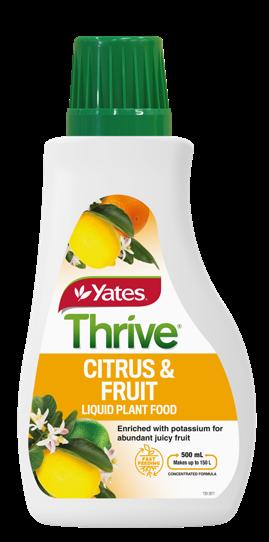
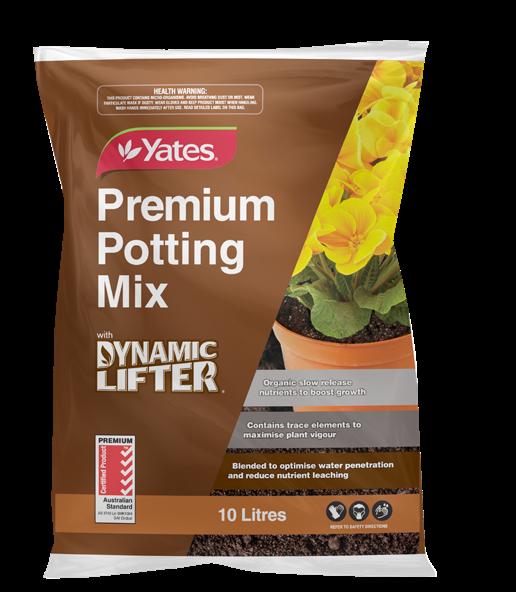

Potted avocados?
No garden? No worries! You can grow avocado trees in pots.
Dwarf avocados, that only grow around four metres tall, are ideal for pots. Fill a well-drained pot, that's at least 40 cm wide and deep with good quality potting mix like Yates Premium Potting Mix with Dynamic Lifter. Position the pot in a sunny spot, keep the potting mix moist (but not wet) and feed regularly from spring to early autumn with Yates Thrive® Citrus & Fruit Liquid Plant Food.
GROWING WITH YOU - YATES 51
POLLINATION
Feeding
» To promote lush and healthy leaf growth, together with lots of flowers and fruit, in-ground avocado trees should be fed regularly with a fertiliser that contains the right balance of nutrients. Yates® Thrive Natural Citrus & Fruit Organic Based Pelletised Plant Food contains nitrogen for green leaf and stem growth, phosphorus for a strong root system and potassium to encourage flowering and fruiting. It also contains more than 50% natural ingredients, including Yates Dynamic Lifter®, to help nurture soil health.
» Apply Yates Thrive Natural Citrus & Fruit pellets around the root zone of avocado trees every six to eight weeks from early spring until mid-autumn.
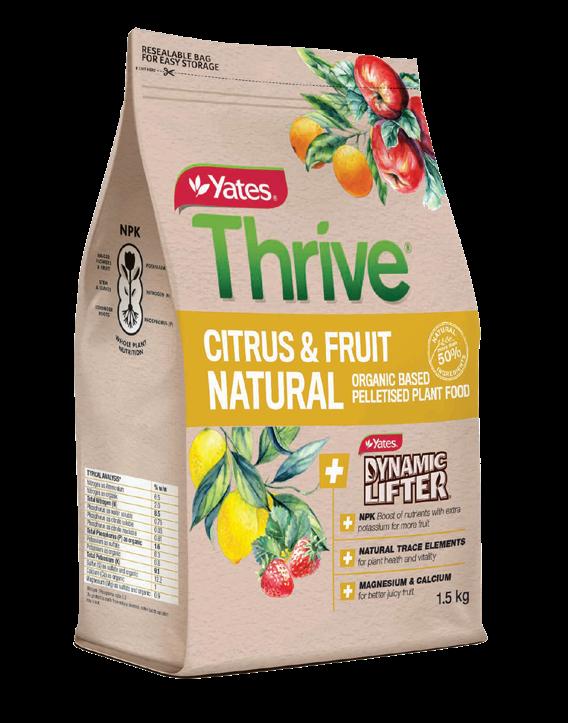
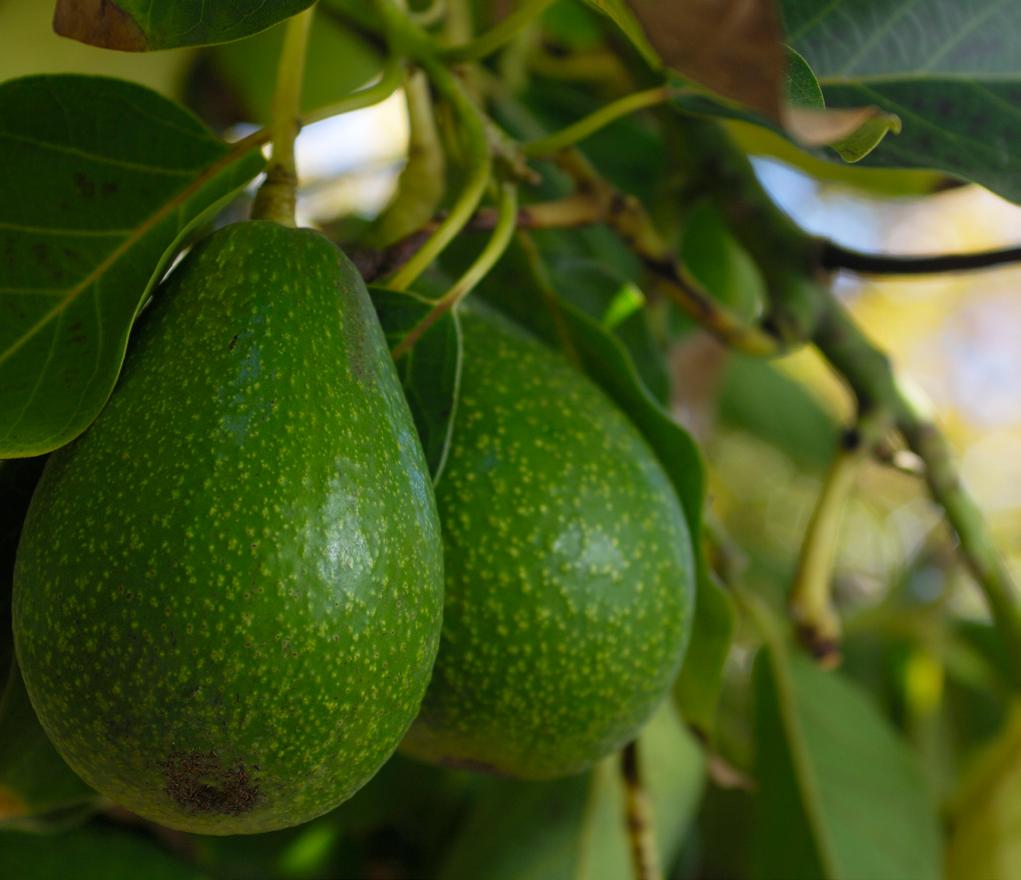
Watering
» Avocados need consistent access to moisture, especially when the tree is flowering and fruiting. Deep watering is best, to help get moisture down into the root zone. It's best to water your avocado thoroughly once or twice a week, rather than small and shallow waterings each day. Potted avocados will dry out faster than in-ground avocados and require more frequent watering.
» Applying mulch, such as bark chips or sugar cane, around the root zone of the avocado tree will help to retain soil moisture. Keep the mulch away from the trunk, to promote good air circulation.
» It's important to note that avocados do not tolerate overly wet conditions, so keep the soil or potting mix moist but not soggy.
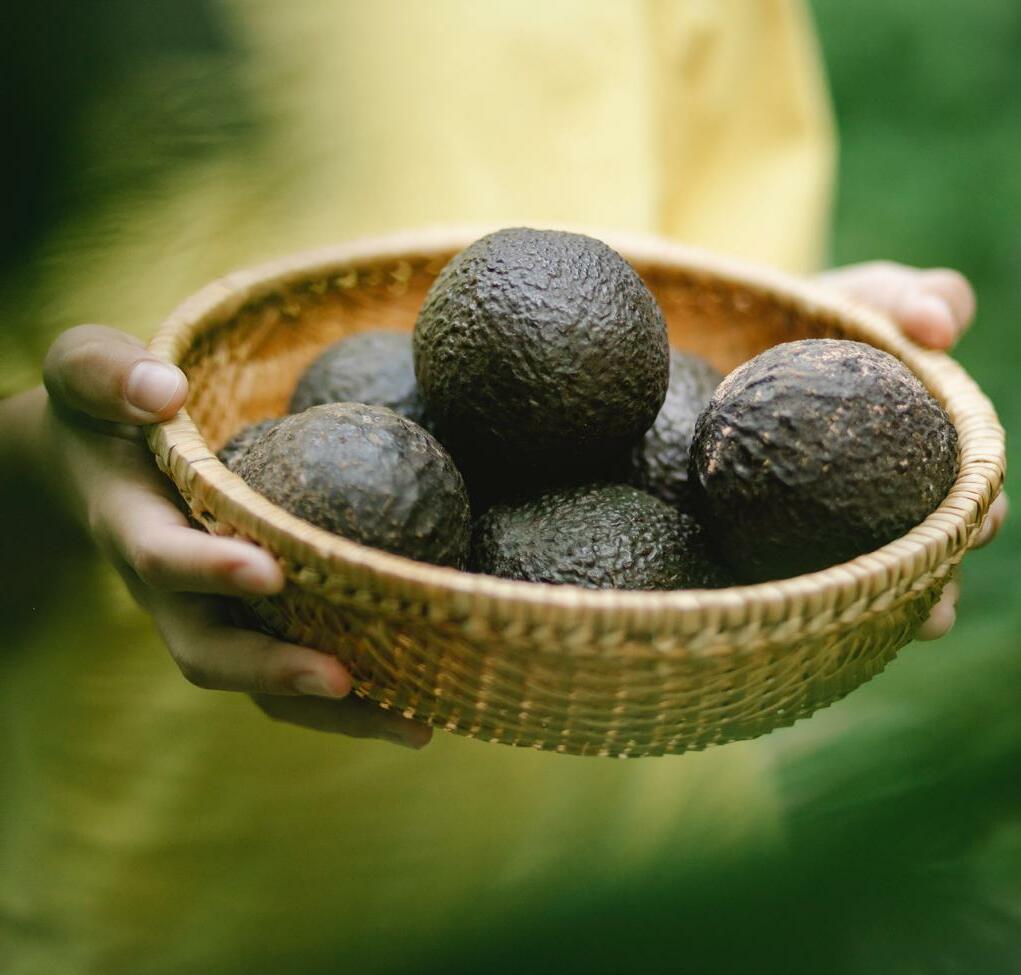
» In some areas, the soil or potting mix may become hydrophobic (water repellent) and moisture won't penetrate down into the deeper layers of soil or mix. To help fix water repellency, spread some Yates Waterwise® Soil Wetter around the avocado's root zone and water in well.

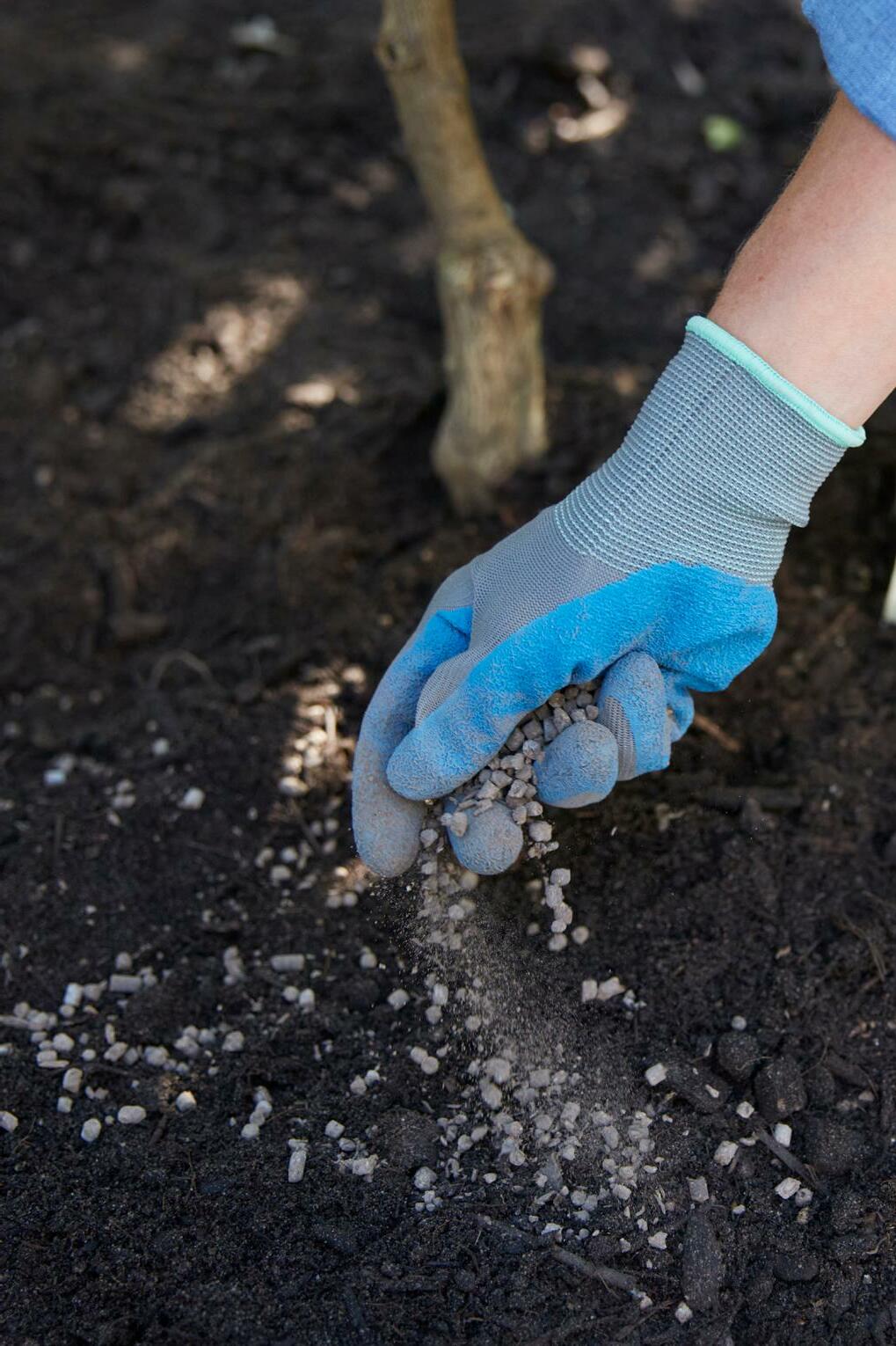
Trouble shooting
» Fruit fly - adult fruit fly can lay their eggs under the skin of young fruit, maggots hatch and ruin the fruit. Help protect your fruit by spraying the foliage each week with Yates Nature's Way® Fruit Fly Control (from when the fruit are still young).
» Root rot - in poorly drained soil or during prolonged wet weather, avocados can be prone to root and collar rot diseases. Initial symptoms can include foliage wilting. Early treatment with Yates Anti Rot Systemic Fungicide can help reduce damage from root and collar rot diseases.
» Spot diseases - anthracnose and cercaspora spot are two diseases that cause spots on leaves and fruit. Particularly when conditions favour diseases (including damp weather), to help control these diseases spray the trees every 14 days with Yates Liquid Copper Fungicide, from the end of flowering until harvest.
HARVESTING
When it comes to harvesting, look for slightly shrivelled fruit with a dull appearance. If unsure, pick a couple of fruit and allow them to ripen indoors at room temperature. If the fruit is mature, it will ripen in 7-14 days without significant wrinkling, have a creamy texture and delicious flavour. If the fruit is not ready within two weeks, leave the remaining fruit on the tree to further mature and repeat the test process.
Harvesting season varies dramatically according to your location and the variety you're growing, however the peak fruiting season in Australia is between March and November. It takes approximately eight months from flowering to fruit being ready to pick.
How to grow an avocado from seed

Seed grown avocados can take ten years or more to fruit (if at all), but it's a fun and interesting thing to do, especially with kids. Save a few seeds from store-bought avocados and get started!
For more detailed instructions on how to grow an avocado from seed, visit the 'How to grow an avocado tree' page on the Yates website.

GROWING WITH YOU - YATES 53
How to grow fabulous indoor palms Palmistry Palmistry



Palm basics
» Many palms are native to subtropical and tropical climates, so will be happiest growing in these regions. However the warm and protected environments created in our homes thankfully means that palms can be grown indoors almost everywhere.

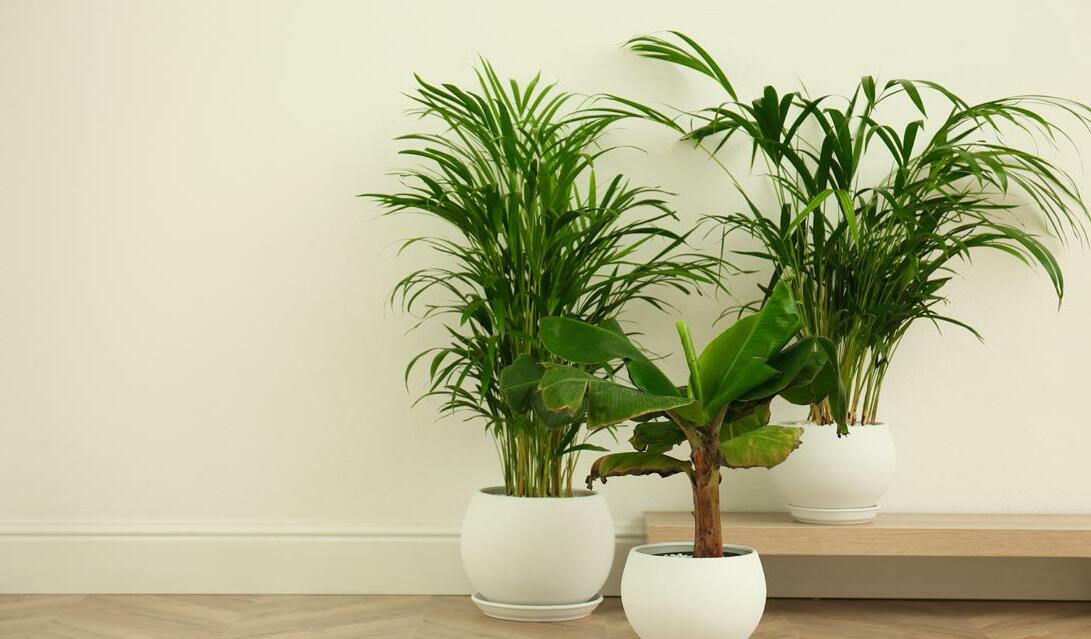


» Palms add luxurious greenery to a room and their long arching and graceful foliage helps add a vertical dimension to indoor plant collections. They also contrast beautifully with plants with different shaped and coloured leaves.
» Palms that are ideal for growing in the lower levels of light indoors include the parlour palm (Chamaedorea elegans), the lady or rhapis palm (Rhapis excelsa), the walking stick palm (Linospadix monostachya) and the kentia palm (Howea forsteriana), which is native to Lord Howe Island. Plant tags will provide helpful information on whether that palm is suitable for indoors.
GROWING WITH YOU - YATES 55
Palms are some of the best value-for-money plants to create a lush tropical indoor vibe. Here are our best tips for growing insta-worthy palms.
Pots & potting mix
Depending on the size of your palm, start off with a 30 cm diameter pot (or five cm wider than the existing pot) with good drainage holes. Use a good quality potting mix, like Yates® Specialty Potting Mix Plants & Ferns, which will help promote healthy growth and root development. When potting palms, don't tease out or disturb the root system.



Light & position
Indoors, most palms do best in a brightly lit position but out of direct sunlight. Palms growing in dim rooms will not thrive. Place your palms away from draughts, air conditioners, cold windows and heaters, which can damage the leaves. Taller palms, like the kentia palm, are ideal for positioning in the corner of a room, and more compact young parlour palms are great for a coffee table or bench top.
Feeding
To promote lush green growth, palms need regular feeding from spring to autumn. Yates Thrive® Plant Food Spikes Plants & Ferns are concentrated spikes of nutrients that will feed palms for up to two months. The spikes are easy to use, just push them into the potting mix, and there's no measuring and no liquids to spill. Feed the rest of your indoor plant collection at the same time. Feeding made easy!


GROWING WITH YOU - YATES 56
Watering
Palms like the potting mix to be kept slightly moist. It's simple to check the potting mix moisture level by gently digging around in the top few cm of mix with your finger. If the mix still feels moist, leave watering for another few days. If it feels dry and dusty, it's time to water. Most palms like humidity too, so during hot weather, their foliage can be misted with water.
Pest watch
Mealybugs (pictured left) and scale are two of the most common pests of palms. They often hide on the undersides of foliage or low down in amongst the stems. As soon as they're noticed, spray these pests directly with Yates Nature's Way® Citrus & Ornamental Spray. Ensure the palm is well-watered before applying and as some palms may be sensitive to sprays, it's best to test the spray first on a small part of the palm before spraying the entire plant.
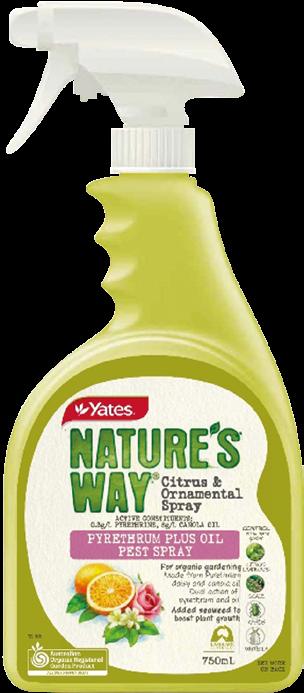

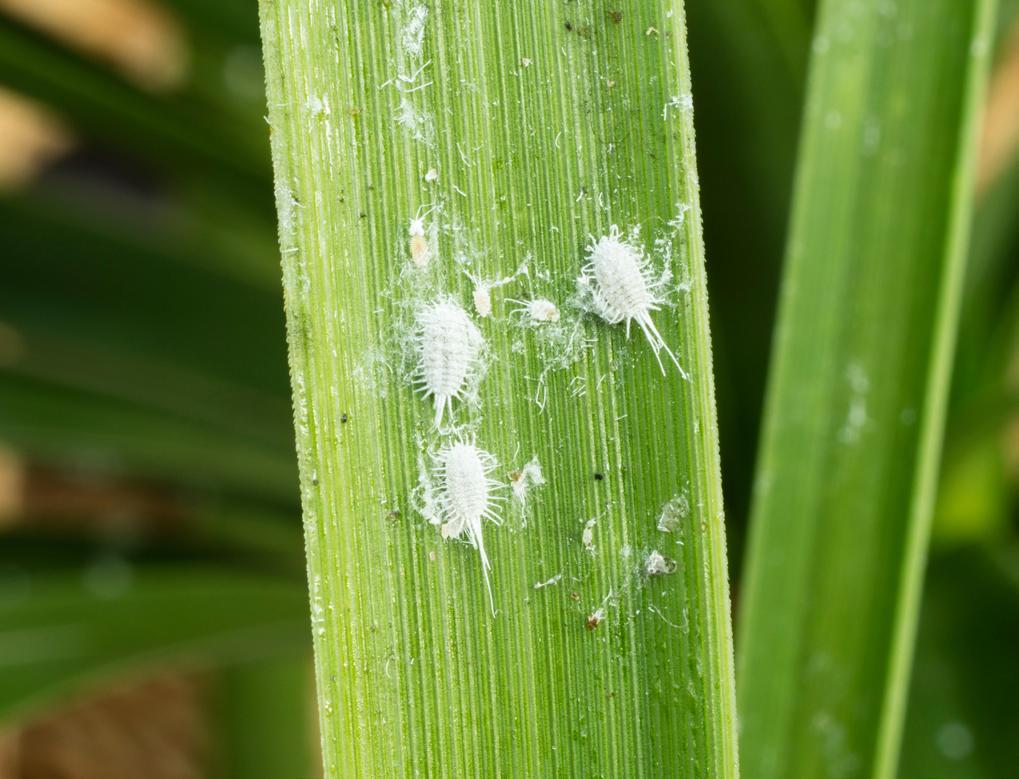

Outdoor palms
If you'd like to add the tropical lushness of palms into your gardens or outdoor areas, some of the most popular include the golden cane palm, bangalow palm, lady palm and the cascade palm.

For helpful information on choosing and growing beautiful palms, visit the Yates How To Grow Palms web page.

GROWING WITH YOU - YATES 57
Controlling
TOUGH
WEEDS
Do you have seemingly indestructible woody weeds that need to be controlled? Or a tree stump that refuses to die? Summer is the perfect time to get on top of these tough weeds.
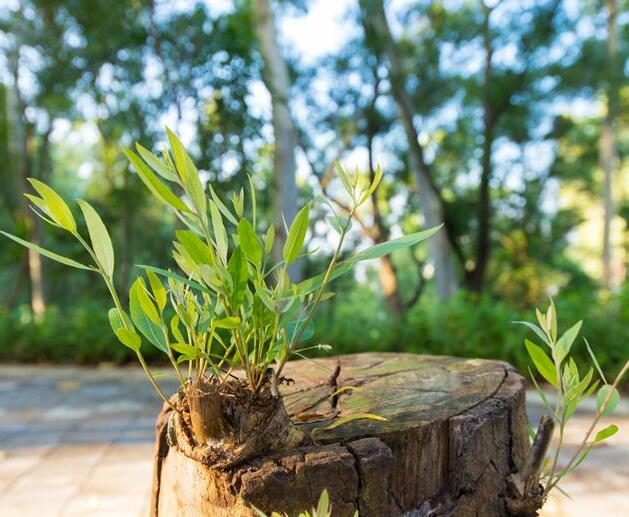
Tough, woody and invasive weeds like blackberry, lantana, African boxthorn and privet can create a significant problem in the garden, as can seedlings and suckers of trees like wattles and camphor laurel. Yates® Tree & Blackberry Killer is an effective way of controlling troublesome woody weeds, tree seedlings and suckers as well as tree stumps, which can often reshoot. The active ingredient in Yates Tree & Blackberry Killer travels through the plant's system, killing it roots and all.
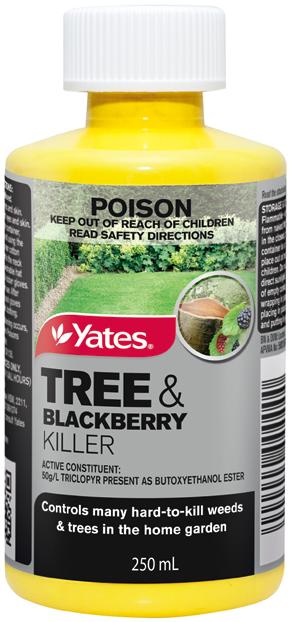
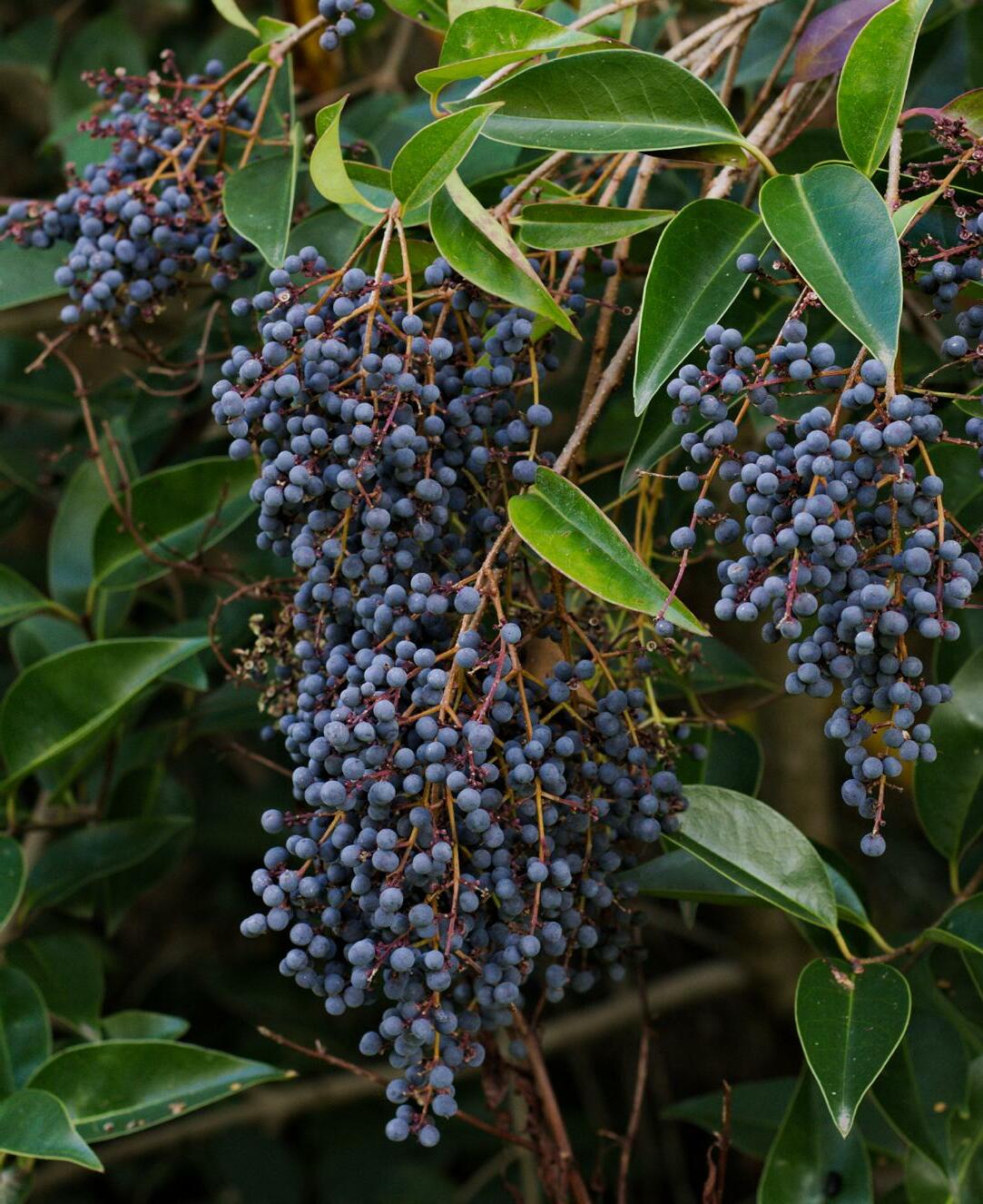
Woody weed tip

To allow the weed killer to work effectively, do not burn, cut or clear plants for six months after treatment.


Do not spray blackberries carrying mature fruit.
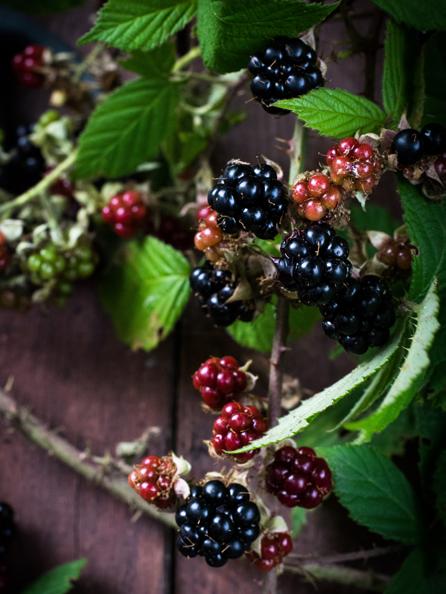
Control weeds like blackberries, camphor laurel seedlings and gorse by thoroughly spraying the foliage and stems. Trees can be controlled by using a basal bark or cut stump treatment. Basal bark spraying involves painting or spraying stems from ground level to a height of 30 cm with Yates Tree & Blackberry Killer. Old, rough bark may require more thorough spraying. Drilling two cm deep holes or axe wounding the tree can help the product penetrate into the plant.
For cut stump treatment, liberally spray or paint the product onto freshly cut stems or trunks. Yates Tree & Blackberry Killer can also be mixed with kerosene for weeds like sweet briar, African boxthorn, olive and privet (pictured top left) to assist efficacy.
Bowl over woody weeds &
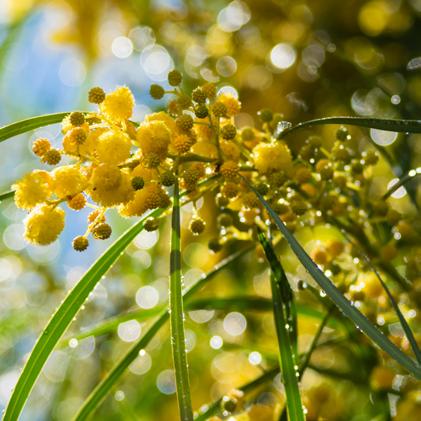
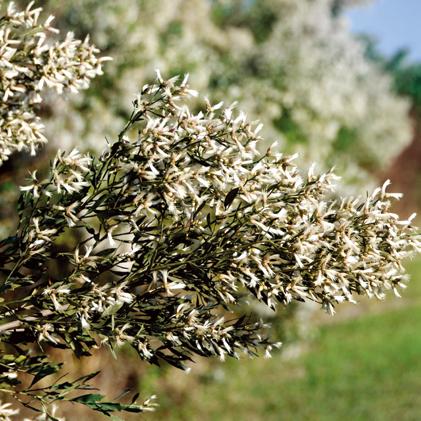



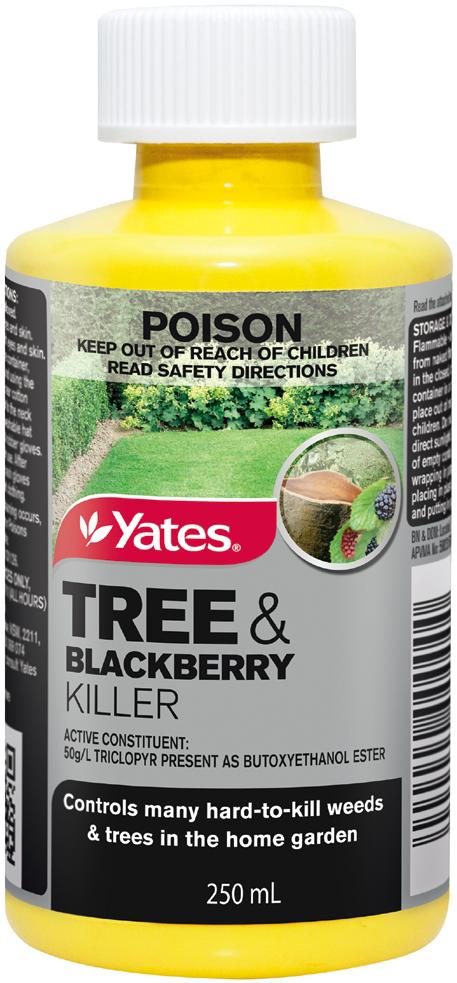
stumps




















GROWING WITH YOU - YATES 59
Blackberry Lantana Privet Groundsel Wattles
Tree Stumps
Yates is a registered trademark of DuluxGroup (Australia) Pty Ltd Yates® Tree & Blackberry Killer controls tough, invasive weeds like blackberry, lantana and privet as well as stumps of unwanted weeds. HOW TO APPLY ONTO A FRESHLY CUT STUMP Apply Yates® Tree & Blackberry Killer to the cut stump immediately after cutting, using a sprayer or brush application as per label instructions.
tree
Great things star t w ith Yates™





Ltd) Bring ‘The Great Outdoors’ indoors
Yates and Thrive are registered trade marks and Great things start with Yates is a trade mark of DuluxGroup Australia (Pty
Keep your plants happier and healthier with a range of Yates® plant care products.
Indoor plant care is now much simpler with a specially designed range of potting mixes and fertilisers. From the smallest balcony to your indoor jungle, Yates® has a solution. This means every plant from leafy greens to stunning orchids will always get the care and nourishment they need.
Introducing a new way to control weeds!
New Yates® Zero® Triple Strike is the newest weed killer in the Yates range, helping gardeners to control some of the most common and troublesome weeds.
Yates Zero Triple Strike Garden Weedkiller Concentrate is non-selective and kills a wide variety of grass and broadleaf weeds, including crowsfoot grass, common paspalum, sowthistle, fleabane and clover.


Yates Zero Triple Strike is glyphosate free and contains a special formulation of three ingredients to work via both contact and systemic action. It penetrates the foliage and gives visible results on most weeds within 24 hours, then moves throughout the weed to kill it roots and all.
It can be used to control weeds in garden beds, paths, driveways and around buildings. Only allow the spray to contact the plants you want killed.
Yates Zero Triple Strike comes in a clever bottle that has contactless measure and pour technology. Just tilt the bottle to fill the dosing chamber with the amount of product you need, then pour into a spray bottle that's partially filled with water. Top up with the required amount of water and you're ready to start controlling weeds!
WEEDS TAKE OVER Don't let the Good to know
Some weed seeds can last for many years in the soil, germinating when the conditions are right. So it's very important to control weeds BEFORE they flower and set seed. You'll be saving yourself years of weeding heartache!
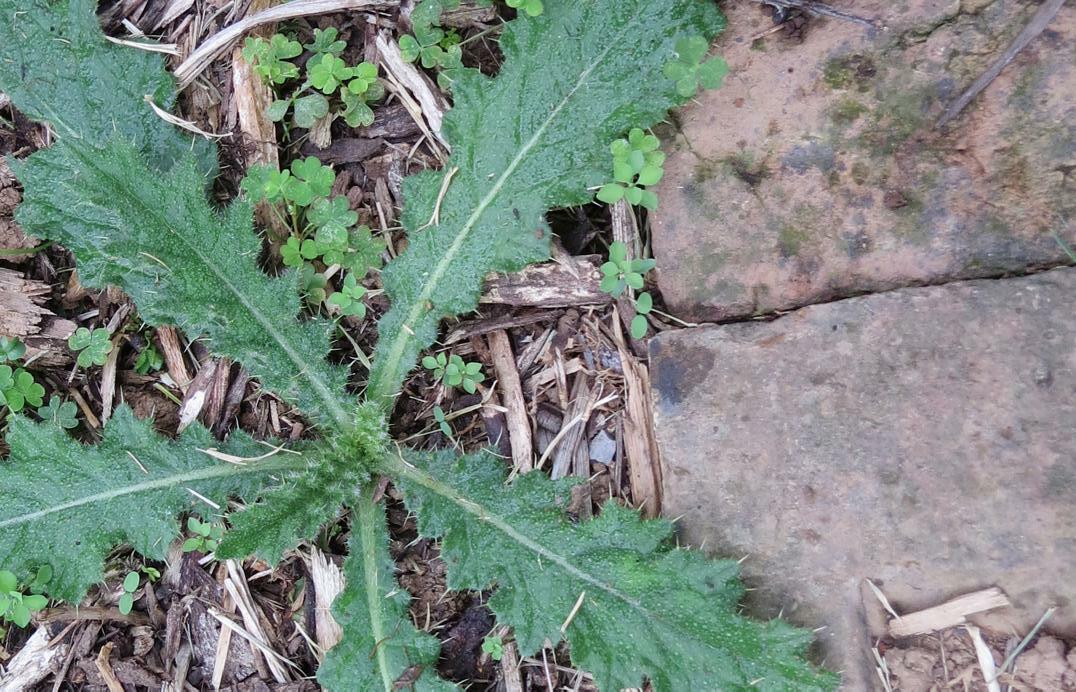


GROWING WITH YOU - YATES 61
Weeds can be one of the most annoying aspects of gardening! They can grow while your back is turned and ruin the look of the garden, not to mention stealing water and nutrients from your plants and harbouring pests and diseases. They have to go!
CREEPY Crawlies
Are cockroaches invading your home? In addition to helping themselves to your pantry, they can leave behind mess, produce foul smelling odours, ruin fabrics, carry infectious human diseases and worm parasites and some people are allergic to cockroaches and the materials they leave behind. Cockroaches have to go!


Cockroaches are highly successful insects due to their ability to survive on a very wide variety of food sources. They are social insects, with many preferring to live in groups. They are also prolific and rapid reproducers. For example, the female German cockroach can lay up to 240 eggs in her 200 day lifetime, so the population can grow very quickly. They're attracted to areas where food and water are available and are commonly found in warm, humid and sheltered areas such as the kitchen, bathroom, toilet and garage.
Professional tip
Yates Home Pest Long Term Barrier Spray is also available in a big 2L ready to use pack.
To kill cockroaches inside and create a barrier to help stop cockroaches from coming indoors, spray surfaces with Yates® Home Pest Long Term Barrier Spray. Spray inside cupboards, around door entrances, window sills and skirting boards, behind sinks, stoves and fridges and other cracks and crevices where cockroaches may hide.
Yates Home Pest Long Term Barrier Spray will kill cockroaches for up to three months outdoors and up to 12 months indoors.
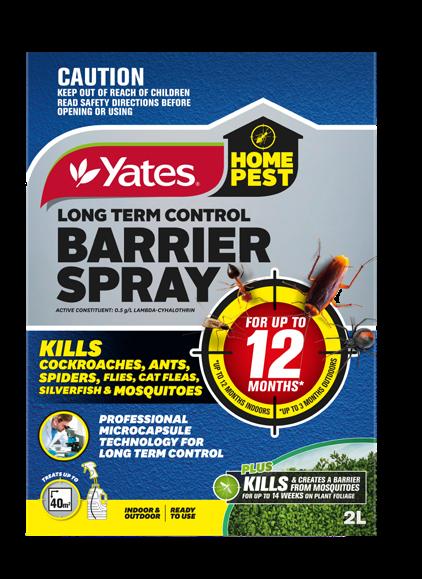

GROWING WITH YOU - YATES 62
There’s nowhere for your household pests to hide.

For all homes great and small .
Looking for an easy-to-use and fast acting way to protect your home from pests?
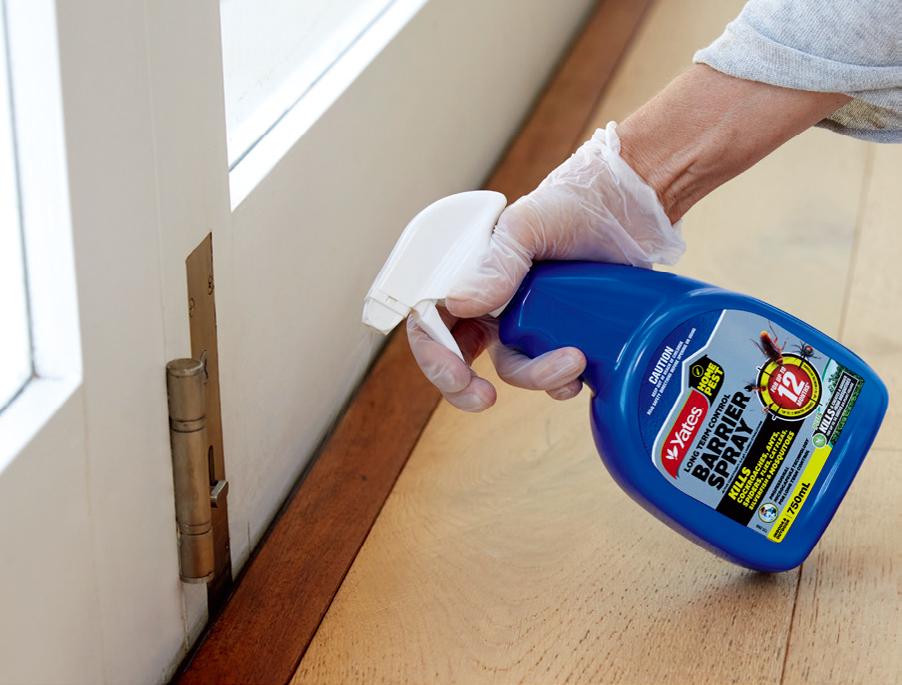
The Yates ® Home Pest range has you covered. With up to 12 months protection inside your house, Yates ® Home Pest Barrier Spray is an effective solution against cockroaches, ants, spiders, flies, cat fleas, silverfish and mosquitoes. Using Yates ® professional microcapsule technology means long last control and peace of mind for you and your family.
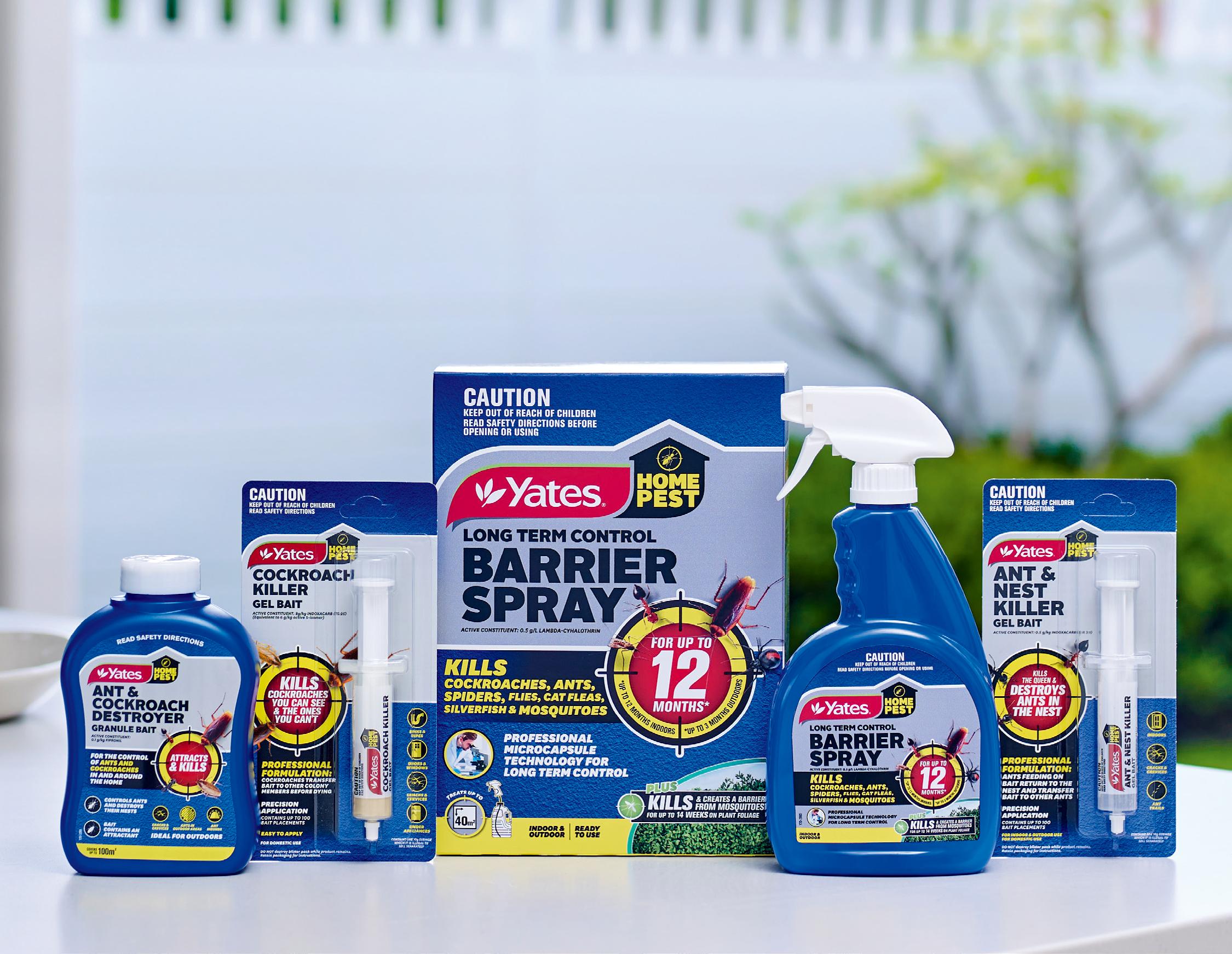
Yates is a registered trade mark and Great things start with Yates is a trade mark of DuluxGroup (Australia) Pty Ltd
Great things start with Yates®
GROWING WITH YOU - YATES 63
different climates Gardening in
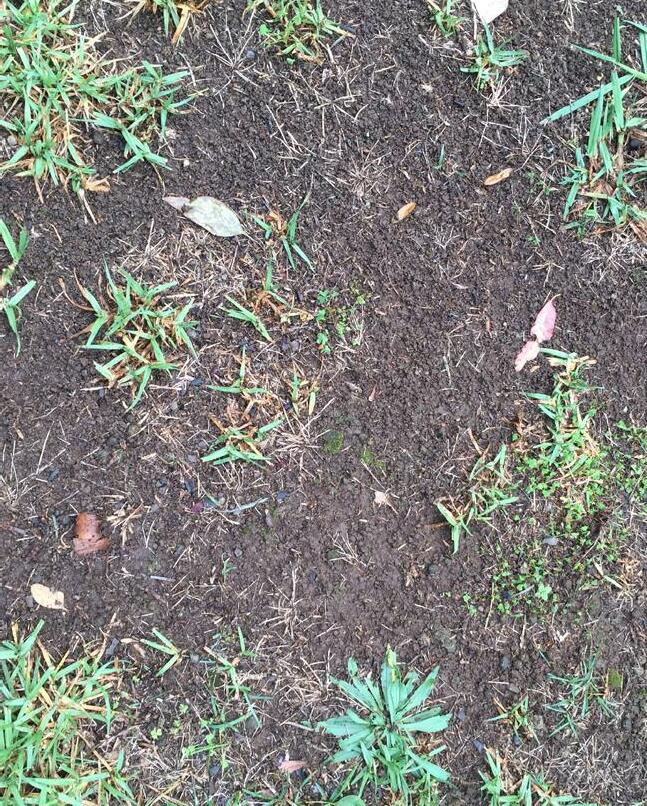
All around Australia, there are lots of things to keep you blissfully busy in the garden during summer

In cool climates
» Keep feeding summer vegies to maximise plant health and the harvest. Feed fruiting vegies like tomatoes, pumpkins, cucumbers and zucchinis with Yates® Thrive® Flower & Fruit Soluble Fertiliser every one to two weeks. It's rich in potassium, which is the key nutrient in promoting flowering and fruiting.
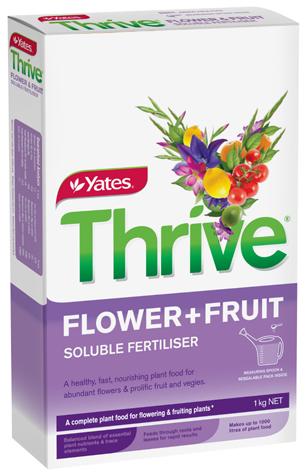

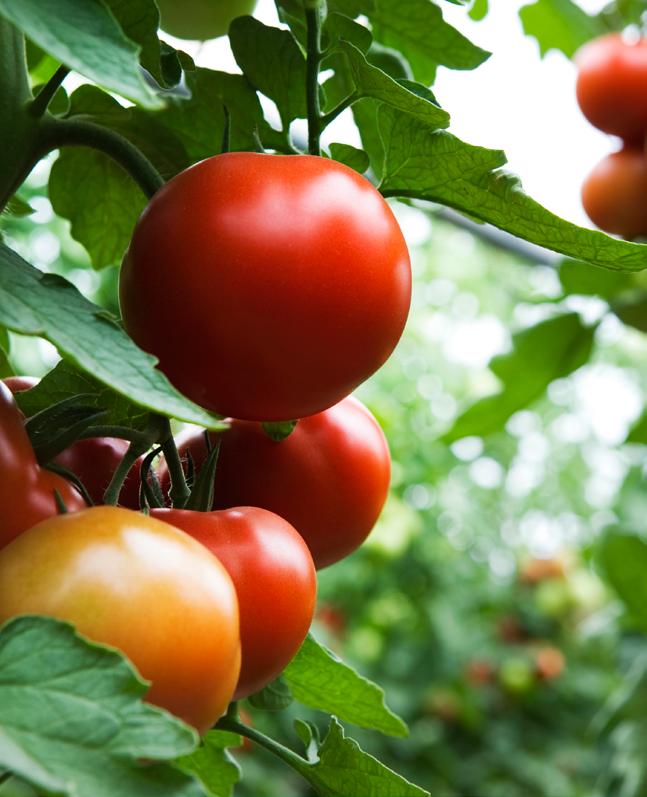
» As the weather cools down in late summer, rodents will start looking for warmth and shelter indoors. Stay one step ahead and minimise rat and mouse problems by placing Ratsak® Fast Action Throw Packs in the roof void and moisture-resistant Ratsak Fast Action Wax Blocks in damp areas such as laundries, sheds and garages. Help keep rodent baits away from pets and children by using a Ratsak Reusable Rodent Bait Station.

» Got bare patches in your lawn? While the soil is still warm, fix weed-attracting bare patches with Munns® Professional Quick Fix Lawn Seed. It's a premium turf grade seed blend which has been specially developed to quickly repair lawn bare patches. It also contains slow release fertiliser to feed the newly establishing patch for up to three months, plus a wetting agent to help improve moisture penetration down into the root zone.
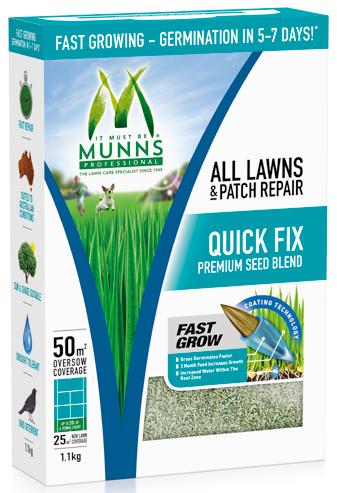
In temperate climates

» Cut back spent kangaroo paw flower stems to the ground then feed with Yates Dynamic Lifter® Soil Improver & Plant Fertiliser to promote healthy growth. The organic nutrients in Yates Dynamic Lifter are ideal for feeding Australian native plants like kangaroo paw.

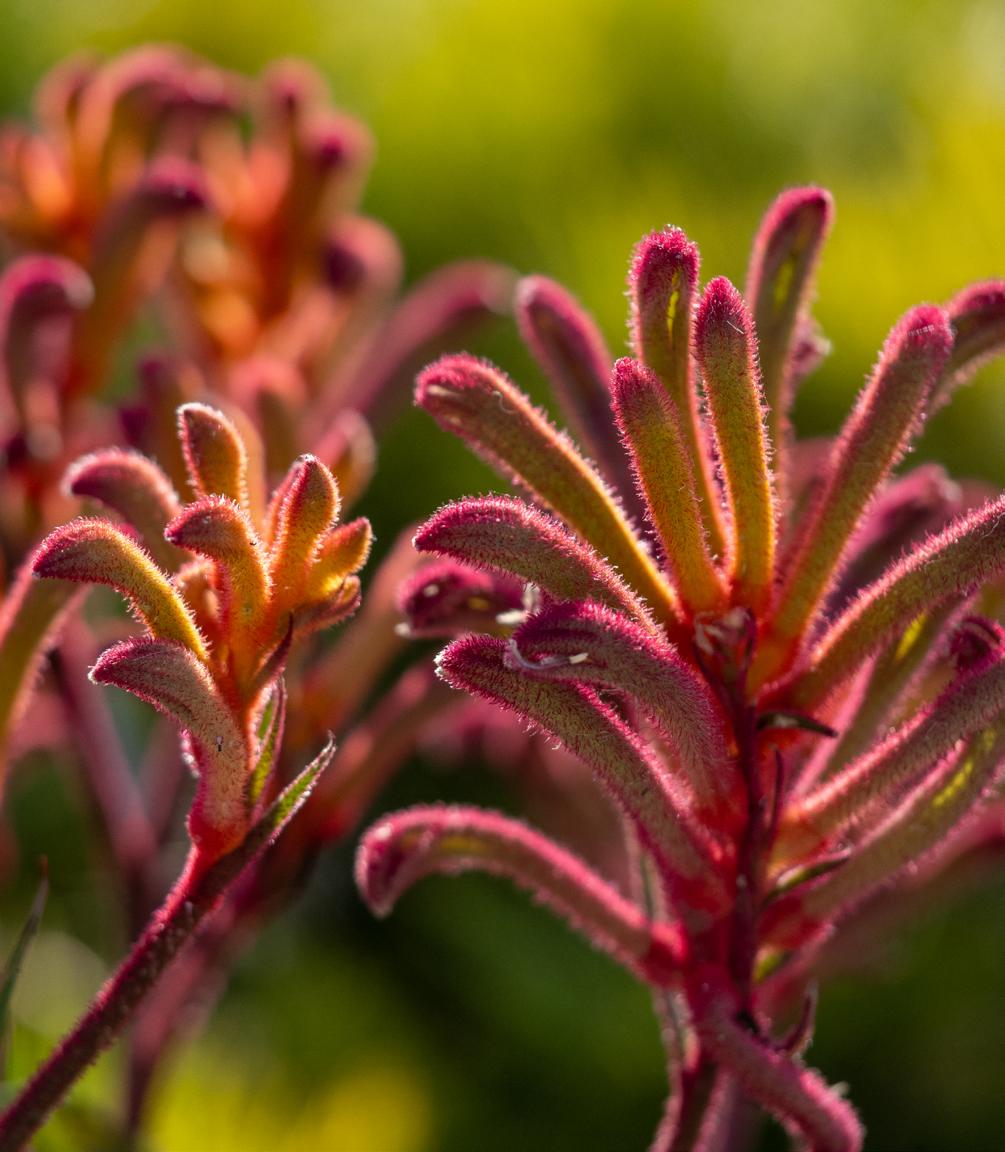
» Monitor citrus trees for zinc and manganese deficiencies, which can appear as small, pale or mottled leaves. Treat these deficiencies with Yates Citrus Cure Zinc & Manganese Chelate.
» Continue baiting for fruit fly on or around stone fruit trees and fruiting vegetables like tomatoes with weekly sprays of Yates Nature's Way® Fruit Fly Control. It's important to protect fruit with this preventative baiting until all fruit is picked.
» Summer vegies like beans and tomatoes can be attacked by small sap sucking whiteflies. You may have noticed clouds of whiteflies fly up from plants when disturbed, or sticky honeydew on leaves and stems (which the whiteflies excrete). Affected plants can become mottled and yellow. Control whiteflies with Baythroid® Advanced Garden Pest Insect Killer Ready to Use. Spray plants thoroughly, including underneath leaves where whiteflies often congregate.
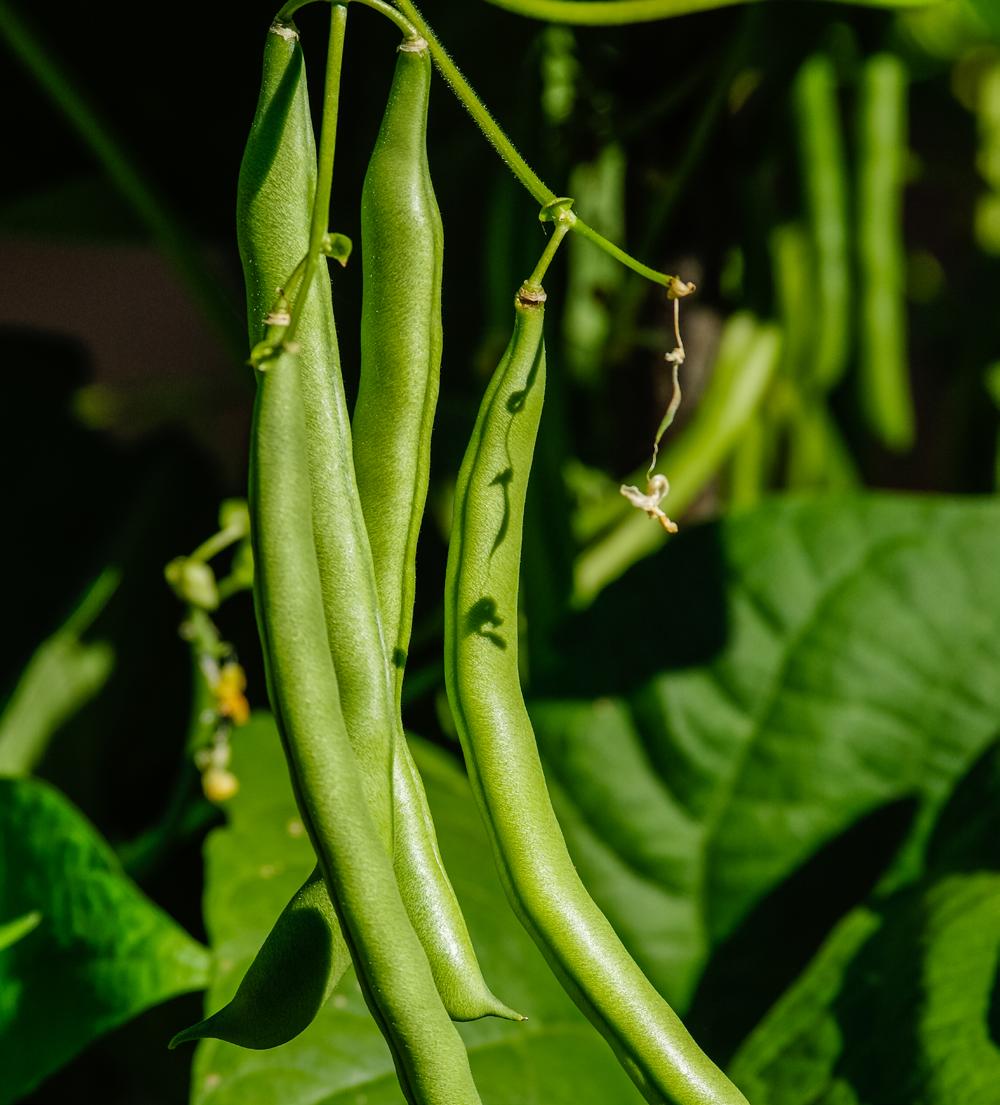
» Particularly during rainy weather, stone fruit can be vulnerable to brown rot, a disease that destroys ripening fruit. To reduce the incidence of brown rot, spray trees each week with Yates Mancozeb Plus while conditions remain wet or humid.
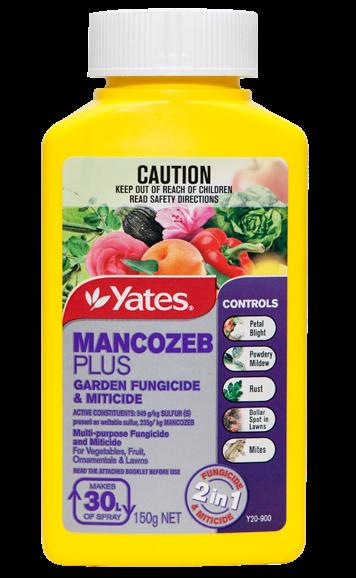

» Don't waste your lawn clippings! Mix them together with kitchen scraps, garden prunings and handfuls of Yates Dynamic Lifter to create your very own compost.
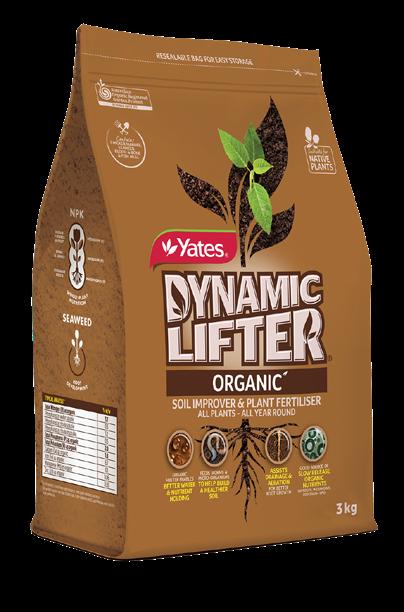
In arid climates
» Watch plants for signs of mite infestations. Early symptoms include yellowing leaves, and as colonies increase they form masses of spidery webbing. Beans, strawberries, tomatoes, cucumbers and roses can be particularly vulnerable. Treat affected plants with Yates® Nature's Way® Vegie & Herb Spray. It's an insecticidal soap and works via contact action, so it's important to spray both sides of the leaves. Repeat every five to seven days until the mites are controlled.

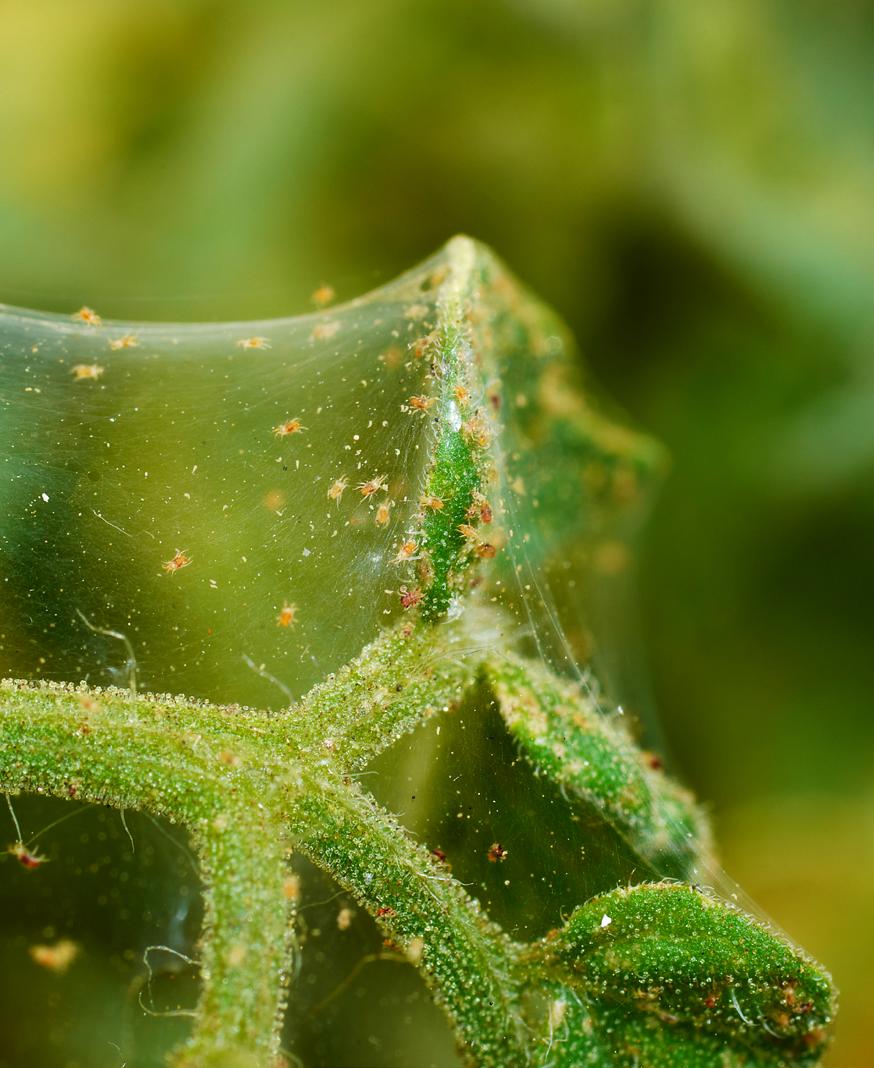
» Apply a soil wetter, such as Yates Waterwise® Soil Wetter over garden beds, the lawn and potted plants. This helps to break down the waxy, water repellent layer that can develop on the surface of soil or potting mix and assist moisture to penetrate more effectively down into the root zone.

» Apply or top up mulch on garden beds and vegie patches, which helps to reduce the amount of moisture evaporating from the soil surface. An added bonus is that mulch will help reduce weeds.
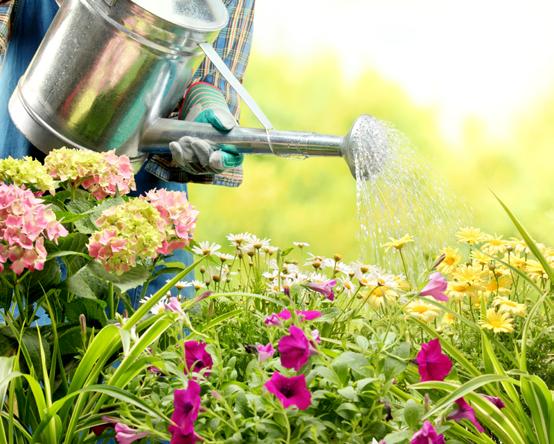

» Collect water from the washing machine and shower and treat with Yates Greywater Fertiliser before using it to water the lawn and (non-edible) gardens. Yates Greywater Fertiliser has been specially formulated to help neutralise the effect of alkaline soaps and detergents on soil pH, plus it contains added nitrogen and potassium to create a balanced fertiliser to feed plants and lawns.


» Blossom end rot is a common condition of tomatoes during summer and appears as a black sunken patch on the base of tomato fruit. To help prevent blossom end rot, keep the soil or potting mix around tomato plants consistently moist. This assists with calcium availability (calcium deficiency predisposes tomatoes to blossom end rot).
» Choose some drought-hardy plants like aloes for your garden, that are tough and produce vibrant bird and bee attracting flowers. There are some petite aloes like 'Always Red' and 'Bush Baby Yellow' that grow to around 30 cm tall, to larger varieties like 'Big Red' and 'Erik the Red' which can reach up to 2 m tall.

You can grow the smaller aloes in pots and create a mobile display. When growing aloes in pots, choose a pot with good drainage holes and use a free-draining mix like Yates Specialty Potting Mix Cacti & Succulents.
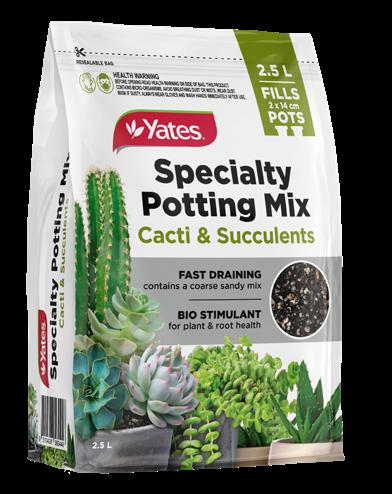
In tropical and sub-tropical climates


» Take semi-hardwood cuttings of shrubs like buddlejas and hibiscus. Choose firm 10-15cm pieces of leafy stems, dip the ends into Yates Clonex® Purple Rooting Hormone Gel before inserting into a pot of moist Yates Specialty Potting Mix Cuttings & Seeds. Keep the pot in a protected spot while roots develop.
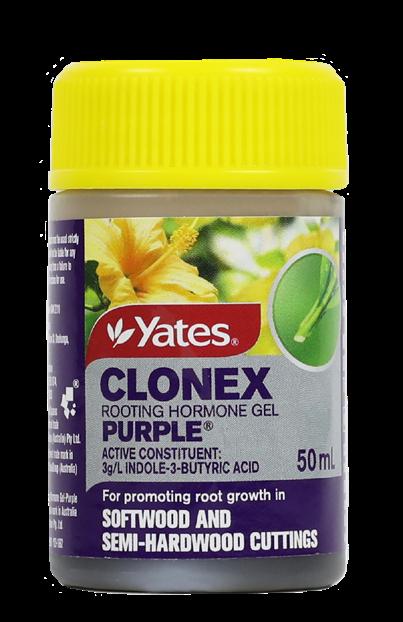
» Use a garden fork to aerate lawns after heavy rains. It's as simple as pushing the fork at least 10 cm deep into the soil, and wiggling it back and forth. Do this every 10 - 15 cm across the lawn, which will help open the soil up and allow in more air.
» Continue to sow seeds of tomatoes, capsicum, eggplant, zucchini, lettuce and pumpkins so you'll have an ongoing supply of fresh home-grown produce.


» Powdery mildew is exacerbated by warm humid weather and can plague cucurbits like zucchinis, pumpkins and watermelons during summer. Infected leaves begin with a dusting of powdery white spots followed by leaves yellowing and dying. Spray Yates Mancozeb Plus Fungicide & Miticide over the leaves every 7-10 days to control and prevent powdery mildew.
» Prune vigorous bougainvilleas that are threatening to take over the garden.

» Renew mulch on garden beds to help protect the soil surface from heavy rains.
» Particularly during months of wet weather, help prevent root and collar rot in citrus, avocado and vulnerable ornamental plants with proactive sprays of Yates Anti Rot Phosacid Systemic Fungicide.

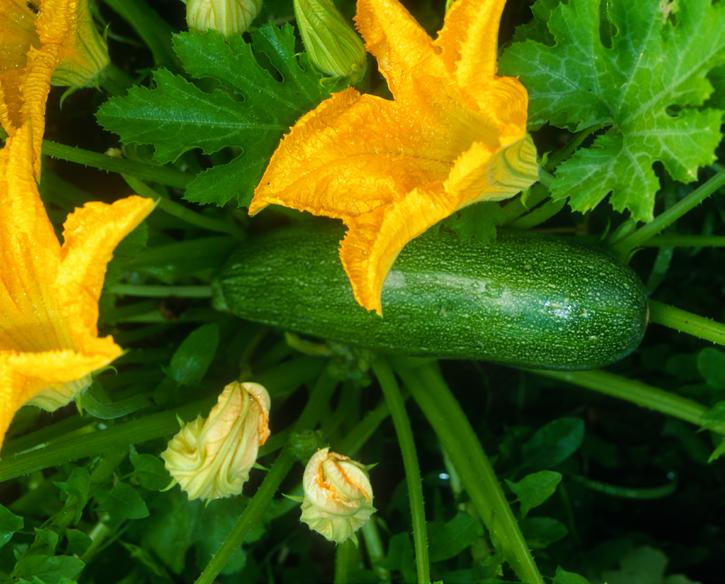
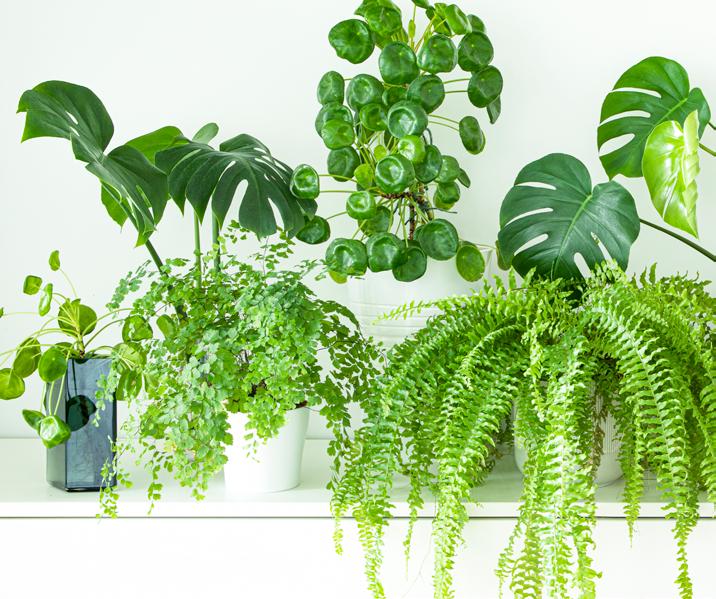




GROWING WITH YOU - YATES 68 Great things star t w ith Yates™ We also plant seeds in the heads of gardeners Join Yates Garden Community today. Receive monthly emails based on your gardening interests. Exclusive promotions and giveaways. Sign up now at yates.com.au/garden-community @yatesgardening Yates, Thrive, Dynamic Lifter, Rose Gun, Rose Shield, Munns, Nature's Way, Weed'n'Feed, BuffaloPRO, Zero are registered trademarks and Great things start with Yates is a trade mark of DuluxGroup (Australia) Pty Ltd






















































































































































































































 After Before
After Before



























































































































